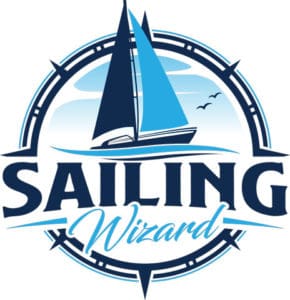

What is The Best Sailing Dinghy for Cruising?
Whether you are a seasoned sailor or completely new to sailing, choosing the right dinghy for your escapades is crucially important. If you begin to look at all of the available sailing dinghies on the market, you will likely be overwhelmed with all the options and unsure which one is truly the best. Let’s take an in-depth look and answer the question: What is the best sailing dinghy for cruising?
One of the best sailing dinghies for both beginners and experts alike, the Wayfarer is perfect for day cruising and multi-day adventures. Wayfarers are also versatile due to their streamlined and stable design. There are also other great options, including Gull and Enterprise dinghies.
In the next few sections, I’ll take a look at some of the most popular and best sailing dinghies so that you can get an idea of what is out there. Let’s get right into it!
Looking for a Sailing Dinghy for Cruising?
If you are looking to purchase a dinghy, there are a lot of options available to you. A few dinghies rise above the rest in terms of maneuverability, quality, design, functionality, and a thousand other factors; however, it is nearly impossible to pick out a single dinghy as the best due to the varying opinions and needs of individual people.
So, while there isn’t a single “best” dinghy that I can recommend to everyone, the ones listed below are absolutely amazing and will work for various crew sizes, needs, and situations.
Now, let’s take a closer look at these five great sailing dinghies and address each one’s pros and cons.
Wayfarer Sailing Dinghy
The Wayfarer is a widely loved dinghy that has quite a reputation as a good and reliable boat. There are many different versions of the Wayfarer, with slight adjustments and design changes throughout the years. While all of the Wayfarers are considered excellent boats, ones closer to the original Mark I design are ideal for sailing due to their extra storage capacity and added stability.
Pros of Cruising in a Wayfarer Sailing Dinghy
Wayfarers are overall great dinghies for a variety of situations and people. They are incredibly versatile, maneuverable, and very enjoyable to sail.
Whether you are entirely new to sailing and just looking into getting your first dinghy, or you have been around the block a few times, a Wayfarer is an excellent choice for many people. Due to its extreme versatility, you can take your Wayfarer out on both day trips and multi-day excursions, and they are even great racing dinghies as well!
Cons of Cruising in a Wayfarer Sailing Dinghy
When considering the cons of owning a Wayfarer, they are relatively few and far between. One thing to keep in mind is you will usually want a crew of at least two people to sail a Wayfarer. Unless you are very competent and know how to sail solo well, a Wayfarer will most likely be too large and heavy to sail and beach if you are alone.
It is also important to note that the newer versions of the Wayfarer are more prone to turtling while sailing than earlier models. If you are just getting into sailing, I would highly suggest that you get a Wayfarer similar to the Mark 1 designed by Ian Proctor.
Gull Sailing Dinghy
First designed by Ian Proctor in 1956, the Gull is a reliable and versatile dinghy that is well-loved by many people. The first iteration of the Gull was made of plywood, as most boats of the time were, and since then has gone through many more versions and is now made of GRP (Glass Reinforced Plastic).
Pros of Cruising in a Gull Sailing Dinghy
Much like the Wayfarer mentioned above, the Gull is a very versatile and excellent dinghy. While the Gull makes a fantastic sailing dinghy, it is a versatile craft that you can fit with an outboard engine or rowlocks for alternate propelling methods.
Another significant aspect of the Gull is its sleek and small design. While you lose some onboard space, the Gull’s smaller hull allows this two-person dinghy to be easily sailed solo if you have a little experience and wish to do so. Overall, the Gull is a very sturdy and reliable dinghy bound to meet all of most sailors’ needs.
Cons of Cruising in a Gull Sailing Dinghy
Gulls are very sturdy dinghies that don’t have too many downsides to them. The only real offputting aspect of the Gull for many sailors is its small size that sometimes doesn’t have as much room as you might like on a multi-day excursion on a dinghy.
The Gull has a pretty small hull, which gives it a lot of maneuverability, but it also results in less space for yourself, crew, passengers, and supplies. The lack of space on the Gull isn’t too big of an issue if you pack lightly, go on excursions that last a few days at a maximum, and have minimal people on board.
Enterprise Sailing Dinghy
Designed in 1956 by Jack Holt, the Enterprise is one of the oldest dinghy classes, yet remains wildly popular to this day due to its appealing design and beginner-friendly handling. Enterprise dinghies are extremely popular and versatile worldwide, being used for sailing, racing, and nearly everything in between.
Pros of Cruising in an Enterprise Sailing Dinghy
The Enterprise is seemingly the perfect blend of size, design, power, and weight. This near-perfect combination of elements has been the primary thing that has made this dinghy class have such a strong following and be so popular for many decades.
While it may take some adjustments and time, Enterprise dinghies are also relatively easy to sail singlehandedly, even though they are meant to be sailed two-up. Overall, Enterprise dinghies are excellent and reliable boats that are great for sailing adventures, whether you have a friend with you or not.
Cons of Cruising in an Enterprise Sailing Dinghy
Enterprise dinghies are considered one of the best options out of the vast array of sailing dinghies out there. However, there is one major thing that can be quite offputting to many sailors about them.
This one flaw of Enterprise dinghies is their stability.
While it isn’t too much for an experienced sailor to handle, Enterprise dinghies do have a noticeable lack of stability when out on the water when compared to similar sailboats. By no means is this a fatal flaw of the design, but rather a characteristic unfamiliar to this type of dingy and usually seen on dinghies meant for racing.
Wanderer Sailing Dinghy
Another design by Ian Proctor that has made this list, the Wanderer is a very light and agile dinghy that is quite popular among new and experienced sailors alike. The Wanderer began as a lighter version of the previously mentioned Wayfarer, but its design has diverged quite a bit and has become unique in its own right since then.
Pros of Cruising in an Wanderer Sailing Dinghy
One of the Wanderer’s greatest strengths is its weight. It is actually relatively light, with a hull weight of 291 pounds, making it pretty easy to launch and maneuver. Additionally, the Wanderer’s weight, or lack thereof, does not significantly impact its stability because it is quite a stable boat that is not prone to turtling.
Overall, the Wanderer is a top-rated and fabulous boat that, while on the lighter side of things, is very stable and reliable.
Cons of Cruising in an Wanderer Sailing Dinghy
While the Wanderer is a great boat for sailing, a potential downside to this dinghy is the need to have multiple crew onboard. While sailing a Wanderer can undoubtedly be done solo, for most sailors, having some extra hands on deck will make sailing the 2-3 person Wanderer dinghy much more pleasant.
Of course, there is absolutely nothing wrong with having a multi-person sailing dinghy – for many it’s the perfect choice – but it does eliminate the possibility of solo sailing, which can be quite relaxing and fun once you are competent and experienced.
James Gerard
Hi, I'm James! I started sailing at a very early age here in the UK, and have enjoyed so many opportunities to sail all over the world. I created this website to share the many sailing tips I've leaned over the years, so that you can also discover the joy of sailing with safety and confidence.
Recent Posts
How to Predict Wind Direction & Speed from a Surface Pressure Chart
Learning how to read a surface pressure chart will allow you to predict the wind speed and direction based on the weather chart. This will help you in planning your next sailing trip.
What Does a Black & Yellow Buoy Mean? (Cardinal Marks Explained)
If you see a black and yellow buoy while you're sailing, don't ignore it. Cardinal Marks are there to help you avoid hidden hazards in the water. This helpful article will help you to identify a...
- Skip to primary navigation
- Skip to main content
- Skip to primary sidebar
- Skip to footer
Yacht Cruising Lifestyle
Everything fun you can do from your yacht
Choosing the Best Dinghy for Your Boat
January 7, 2021 by Travis Turgeon 5 Comments
At anchor, a dinghy boat serves as your lifeline to everything from leisurely excursions to provisioning trips. Every captain or crew will use their dinghy differently, so it’s essential to consider what features and functions are important to you.
Do you plan to explore remote areas away from anchor? Do you plan to fish, snorkel, or dive from the dinghy? How many people will you need to carry at once? Every aspect should play into your decision.
Below, we cover the following to help you choose a dinghy that’s right for your boat:
- Key Factors to Consider
- Types of Dinghies
- Outboard Motors
General Information and Tips
What should i consider before buying a dinghy for my boat.
Make the following considerations before purchasing a dinghy for your boat:
- DInghy Storage
- Carrying Capacity
- Use of the Vessel
Dinghy Storage
Storage should be a defining factor when purchasing a dinghy for your boat. There are several common ways to store a dinghy, but not all storage is suitable for every vessel. A rigid dinghy will need enough space to be tied on the deck or at the back of the boat, while you can stow an inflatable dinghy in lockers or lazarettes.
Regardless of where you choose to keep your dinghy on the boat, it should be in a location that does not reduce drag, restrict access to important areas, or prevent easy access for storage and use.
The most common options are:
- Dinghy Davits
- On-Deck
- Locker
Davits: Permanently installed at the stern of the boat, davits are used to store, deploy, and retrieve your dinghy from the water. Davit storage is standard for any dinghy that’s too heavy to manually lift in and out of the water. Although storage on dinghy davits is convenient, it poses a risk when sailing through heavy seas. Large waves and wind can cause the dinghy to flood while in transit, and the weight can damage the stern of the boat or the davits.
On-Deck: Some people choose to tie the dinghy upside-down at the bow, stern, or side of the boat. For this to be an option, you need sufficient unused space on the deck, and you need to be sure that the dinghy is not interfering with any important pathway or area on the boat.
Swim-Step: Boats with an elevated swim-step can accommodate a dinghy at the boat’s stern as long as it’s elevated far enough out of the water. Keep the dinghy tied aerodynamically and tilted so that it doesn’t fill with water.
Locker: Roll-up inflatable dinghies are easily deployed and retrieved from the water by hand, and they can be deflated and stored in a locker anywhere onboard.
Towed: For nearshore journeys in calm conditions, you can easily pull the dinghy behind your boat. Be careful, though, as high speeds and choppy seas can cause a dinghy to flip in the water.
Dinghy Carrying Capacity
If you’re sailing with multiple crew or passengers, you will want a dinghy that can carry the same amount of people. Making numerous trips from ship to shore will not only cost you time, but it will also run up fuel costs. Further, you’ll want extra room for luggage, provisions, recreational gear, and anything else that may find its way onto your boat.
The handling in your dinghy can become problematic when loaded beyond capacity, so use caution – especially in rough seas. Safety should always be a top priority, so the goal is to aim for the biggest dinghy you can get without sacrificing too much storage space.
Dinghy Material
Rigid dinghies are most commonly made of fiberglass or aluminum, but you can opt for a more classic wooden design as well. The material will partially dictate where the dinghy can be stored and the need for equipment such as dinghy davits. While fiberglass hulls are cheaper than aluminum, they also come with the burden of a heavier weight. Alternatively, aluminum hulls will outlast their fiberglass counterparts, but for a higher price. Overall, rigid dinghies can withstand wear-and-tear better than inflatables, although routine maintenance is required.
Inflatable dinghies are kept afloat using tubes surrounding the boat’s hull, commonly made of either PVC or CSE. CSE, or “Hypalon,” is a synthetic rubber material that is highly resistant to chemicals, UV light, extreme temperatures, and abrasion. CSE is a lot like PVC, but it’s lighter and has more UV and water-resistant properties. It’s also more abrasion resistant, making it ideal for taking to shore. CSE offers a longer service life and a more extended warranty, although again at a higher cost. The most common complaint you’ll hear about CSE is the rate at which the air escapes from the tubes. On average, CSE tubes lose about 15% of their air within 24 hours, while PVC loses under 7%.
PVC is an excellent alternative to the more durable CSE, as the material still offers a reasonable service life at a lower cost. PVC is also much lighter, more convenient to fold, and easier to clean than CSE. The biggest potential problem with PVC is simple neglect and lack of maintenance. If cared for properly, modern PVC materials can last long enough to justify not paying the higher costs for CSE.
For some excellent tips on maintaining your inflatable dinghy, check out Sail Magazine’s Tender Choices article , here.
How You’ll Use The Dinghy
The last factor to consider is how you intend to use the vessel. Will you be traveling long distances from anchor? Exploring remote locations? How many people do you need to transport? Do you need special features to accommodate scuba diving and fishing? You should do as much research as you can to ensure that you’re buying a tender that suits your needs while staying within your budget. Below, we discuss the difference between each type of dinghy – and who each is best suited for.
Types of Dinghies
Choosing the right type of dinghy for you and your boat will require some careful thought. Your dinghy is your primary source of transportation between journeys, and you’ll want to make sure that your purchase is fitting for your immediate and future needs.
The three most common types of dinghies are:
Rigid Boats
Inflatable boats, rigid inflatable boats (rib).
Hard-body (rigid) dinghies are among the simplest styles of tender, and they come in a variety of shapes, sizes, and materials. Rigid dinghies are sufficient for those who don’t need to travel long distances or through rough conditions. However, more and more people are moving to inflatables or semi-inflatables for their wide range of abilities when needed.
When considering if a rigid dinghy is right for you, think hard about the material each is built with. For the hull specifically, the materials will affect the price, durability, and cosmetics of the vessel, as well as the weight and ability to transport. Most rigid dinghies are constructed with fiberglass, aluminum, or wood and have a lower carrying capacity than inflatables. They also have less stability when entering, exiting, and moving through the water.
Advantages:
- Easily Propelled
- Puncture Resistant
- Outboard Compatible
- Low-Cost Option
- UV Resistant
Disadvantages:
- Easily Scratched and Blemished
- Adequate Storage Space Required
More popular than rigid dinghies and less popular than RIB’s, inflatables offer a good middle ground for those looking to compromise between cost and functionality. The large PVC or Polyurethane tubes in the front and sides of the boat are more stable than rigid vessels and allow for a higher carrying capacity due to their buoyancy. Compare those benefits with the low costs of materials, and it’s easy to see why inflatables are so popular.
There are numerous variations of Inflatable dinghies, with the most common being:
- Soft Bottom Roll-Up
- Rigid Floor with Soft Bottom
- Soft Bottom with Rigid Transom
Dinghies with soft bottom have the widest variance in configuration. Some have rigid transoms where an outboard motor can be mounted. Some have rigid, removable floors, and some have an inflatable keel that increases the vessel’s stability and planing abilities. Other than the lower-end inflatables, though, almost all will have stable floors and a captain’s seat. Rowing is difficult in rough conditions, so inflatables are most commonly used with a 5-10 horsepower outboard.
Roll-up inflatables are easily stored, don’t take up much space, and are the lightest of all inflatable options. They also have the least to offer in functionality, and since most don’t have a rigid transom, they must be rowed by hand. Unless you only plan to use the vessel in calm conditions, you should consider dinghies with hard floors and transoms.
Soft bottom dinghies with rigid floors and transoms are more ideal, as they can be used efficiently in a wider variety of situations. The ability to mount an outboard allows you to use the vessel in harsher conditions and travel greater distances. The rigid floors allow you to use the vessel for fishing, diving, provisioning, and more without sacrificing stability and comfort.
- Lightest Option
- Easily Compacted and Stored
- Easily Damaged and Punctured
- Consistent Maintenance Required
- Low Efficiency
The RIB design is a cross between a soft bottom and rigid hull and gives you the most bang for your buck in the water. The hard-bodied hull makes for a stable and damage-resistant body, while the inflatable tubes add optimal stability. The RIB design is so efficient that it’s even used by the US Military and Coast Guard. The tradeoff you make with a RIB is portability and storage, as the hull can not be taken apart or broken down. However, this can be overlooked by carefully choosing a RIB that’s right for your boat. If you’re looking to outfit your boat for scuba diving , a RIB should be pretty much your only consideration for a tender.
Rigid Inflatable Dinghies are the most popular type of dinghy for cruising sailors, and it’s easy to see why. RIBs used as dinghies are commonly between 10 and 15-feet long, with anything larger being reserved for massive yachts with dinghy garages or excess storage space. RIBs are typically stored on davits or lashed upside down somewhere on the deck of the boat. For shorter trips near shore and in calm conditions, you can tow the RIB behind the boat.
Typically, RIBs are available with either aluminum or fiberglass hulls. Aluminum is lighter and stronger than fiberglass, although you should expect to see a price tag that matches those benefits.
- Optimal Speed, Handling, and Stability Rugged
- Limited Storage Options
Outboard Dinghy Motors
After choosing the dinghy that’s right for you and your vessel, you’ll need to select an outboard to fit. You’ll want something powerful enough to make the dinghy plane at full capacity but also light enough to transfer to and from the dinghy‘s transom. Before making a decision, check with the manufacturer to determine the recommended power output for your intended use.
Generally speaking, fully inflatable dinghies that measure around 10-feet in length support a 5-8 horsepower outboard, which is sufficient for the basics. For a more capable inflatable, look for a 10-25 horsepower outboard. Just be cautious, as too much power can flip a lightweight dinghy.
Similarly, a 10-foot RIB will support a heavier engine, such as a 10-15 horsepower outboard that provides enough power for the boat to plane while carrying more than one passenger. For more capability, look for an outboard in the 20-50 horsepower range.
Either way, you’ll need to decide your dinghy’s primary purpose and buy an outboard to support it.
If it’s simply used for trips to shore in calm conditions, a lower-powered outboard will likely be sufficient. The more power you can apply, the more capable your dinghy will become. Further, the maximum power output of the engine should always exceed the recommendations for operating the dinghy at full capacity. If you have a powerful outboard, you won’t have to worry as much about overworking the engine when the boat is full.
When determining which motor is right for you, keep in mind the storage and transportation options you have. If you need to lift the dinghy and outboard out of the water manually, it might be safe to say that the lighter the outboard’s weight, the better. If your back can handle the extra weight, though, the 4-stroke engines are far better suited for things like water sports and rough surface conditions.
Dinghy Excursion Checklist
- Check inflation levels and make sure there is no water inside the boat. If there is, look for leaks or damage.
- Ensure the boat is free of all loose lines, flags, or anything that could get caught in the boat propeller.
- Check to make sure the outboard is appropriately and securely mounted to the transom.
- Quickly test both the forward and reverse gears to make sure everything is working as it should.
- Test the lights on the dinghy, even if it’s still light out.
- Check for paddles, lifejackets, first-aid kits, and dinghy repair kits.
Operating the Dinghy
- When operating the dinghy alone, clip the emergency motor stop to your clothing. If you fall overboard, your motor will stop.
- Be cautious when using a powerful outboard. Too much power can cause a lightweight inflatable to flip or overturn.
- Bring the dinghy upwind when returning to your boat for a more controlled approach.
- Always use both front and rear-facing lights when operating the dinghy after dark.
- When towing the dinghy behind your boat, experiment with the length of the tow rope to find the smoothest pull.
- If there is any surf present, do not attempt to beach your dinghy.
- Use a dinghy anchor if there are large tide changes, waves, or swells present.
- Keep a dinghy repair kit on board at all times in case of small punctures or tears.
- Dinghy covers reduce UV light exposure and prolong the life of the dinghy by up to five years.
- Cosmetically, CSE doesn’t wear down for about 10 years. PVC begins to look rough after only a few.
- Consider where you intend to use your dinghy. Will it be in locations with high swells, rocky shores, and cold water? If so, consider a more rugged and damage-resistant material.
- Before purchasing a dinghy, visit a few boat shows, and read user reviews. You want to be comfortable making a purchase, and having first-hand resources to chat with is the best way to feel confident about your decision.
- Keep your dinghy insured separately in case of incidents that happen away from your yacht.
- Dinghies and their outboard motors are common targets of theft, so be sure to lock up both whenever possible.
When choosing a dinghy for your cruising lifestyle, it’s important to know exactly how to buy a new or used boat and what considerations should be prioritized.
Join the #BoatLife community and contribute to our new forum! Get a new conversation started, or use your experience to address existing posts.
If you found this article helpful, please leave a comment below, share it on social media, and subscribe to our email list.
For direct questions and comments, shoot me an email at [email protected]
Sharing is caring!
Reader Interactions
July 3, 2021 at 10:26 am
I have one for my canoe, my dinghy, and my power boat So, the next time you see a 5 year old boat in Seabridge marina in Ventura California, that looks brand new, it’s my boat.
July 30, 2021 at 8:17 am
It is a great article and quite intresting to read too thanks for sharing such good information with us.
August 1, 2021 at 4:15 pm
Thanks for reading, Cassey. We’re always here to help – don’t hesitate to reach out with any questions or comments!
December 14, 2021 at 2:08 pm
Travis – My name is Mark and I am a member of the Great Lakes Cruising Club. We’ve been around since 1934, we have 2,500 US & Canadian members and we are a volunteer driven organization. For the last twelve years we have operated an on-line school, the GLCCSchool.com. Annually we present 35-40 webinars and have an attendance of around 900 people. We really liked your article on dinghies and are wondering if you would consider turning that into a presentation for our school. If you have the slightest interest please check us out and send me an email so we can explore this further. Thanks.
January 23, 2022 at 2:27 pm
Thank you for all of the applicable information. I appreciate how the differences of each type of boat were well defined. This article was extremely helpful.
Leave a Reply Cancel reply
Your email address will not be published. Required fields are marked *
Save my name, email, and website in this browser for the next time I comment.
MB #20512 PO BOX 480 Sevenoaks Kent TN13 9JY
Tel: +44 56 0386 9163
Keep In Touch
Thank you for reading.
Join our online crew and find more about the #boatlife
Practical Boat Owner
- Digital edition

Cruising dinghies for timeless adventures
- Clive Marsh
- February 10, 2023
Trailer-sailers can be stored at home, may not need a motor and can provide cosy accommodation with clever use of a boat tent

Wayfarer cruising dinghy with awning tent, camping overnight at East Head in Chichester Harbour, West Sussex. Credit: Gary Blake/Alamy Credit: Gary Blake/Alamy
Increasing numbers of boat owners are seeing the merits of dinghy cruising and day sailing , if the continued growth in membership of the Dinghy Cruising Association (DCA) is anything to go by.
The same is happening in Normandy and Brittany with the beautifully designed François Vivier sail and oar boats leading the charge.
In fact the sail and oar movement is growing all across Europe and across the pond in the USA too.
Cruising dinghies offer certain advantages over heavier boats.
They can be towed to different coastal and inland waters, they can be kept in good condition at home avoiding marina charges, they may not need a motor and with the clever use of boat tents they can offer cosy accommodation for a night or two.

John Keogh’s Drascombe Dabber heads down Lough Ree during the 2012 Lakelands & Inland Waterways Ireland Sailing Raid. Credit: Nic Compton/Alamy
Perhaps more importantly to me they look nice and are of a size where I can enjoy fettling and keeping things shipshape.
It all depends what you intend to use the boat for.
If you intend to go regular Channel hopping or further then you’ll be better off with a cruiser.
But if you like messing around the coast, beaching here and there, visiting pubs and avoiding marinas or using tenders then there is a lot to be said for a good cruising dinghy.
Benefits of cruising dinghies
The DCA means different things to different people.
Frank Dye was an early member (number four) and he famously sailed his Wayfarer dinghy from Scotland to Norway and Iceland. He also sailed her along the East Coast of North America.
But that’s not for me. I saw enough of the North Atlantic with Canadian Pacific Steamships to last a lifetime so I’m content and more than happy with an epic voyage from Itchenor to East Head at Chichester.
In fact I like a pub to be no more than two hours away.

Clive’s first Smack’s boat
My sailing chum Maurice introduced me to the DCA and I’ve been to a few of their rallies.
They are always well-organised events where members do their own thing and take full responsibility for themselves, coming together now and then or in the evening for a natter and a meal.
But for most of the year members just sail outside of any events.
There is much innovation within the association with members building craft that are just not available to purchase new.
There’s one UK member who built and sails a US-designed Paradox with cabin and deck and another who has modified a Mirror dinghy and regularly sails her from the mainland to the Isle of Wight , pulling up on any convenient creek.
Dinghy discrepancy
Dinghy is a loose term when it comes to size. My largest dinghy was a Drascombe Lugger at 18.75ft (5.72m) and my smallest is an Emsworth Lugger at just 9ft 3in (2.82m). Both are very seaworthy boats.
The Drascombe Longboat is 21ft 9in (6.63m). These are open boats and one tends to think of dinghies as open boats but not all are.
The word dinghy is derived from the Bombay ‘dinghey’ which was a small boat propelled by paddles and sail. It was a name also given to the small boats used on the Hoogly.
The term was adopted to describe a small extra boat carried on a British ship. I suppose a ship’s lifeboat is a type of big dinghy.
Certainly the old sail and oar type were just large versions of my Smack’s boat.
Which reminds me of a reason why I’m not so keen on the North Atlantic (see photo below).
Continues below…

Best trailer sailboats: Our trailer sailing expert offers his recommendations
Paul Adamson from the Isle of Man, writes: “My wife and I are looking to buy a trailer sailboat, mainly…
Trailer-sailing? Tow your boat safely
Simple stop and check technique

What I learned from towing my 24ft keelboat 1,000 miles from Italy to the UK
The J24 World Championships in Italy were coming to an end and talk turned to the journey home. We’d originally…

How to restore a 22ft trailer-sailer in 10 easy steps
I’ve been hooked on boats since before I could walk, and have spent over 30 years repairing and sailing them.…
Intended use
What makes a good cruising dinghy is largely down to its intended use. I’m now lightweight and when I sail alone my little Emsworth Lugger is fine.
She’s a superb little sea boat that copes with a fair amount of chop for her size and tends to look after herself whatever I do.
Just a few weeks ago when on a run from Hayling Island I got too relaxed and let the balanced lug sail get forward of the mast.
Over she started to go to the gunwales until I just let everything go and she immediately sorted herself out and saved me from a dunking.
It’s attributes like this that make a good cruising dinghy.

A Wayfarer sailing upriver to Wareham from Poole. Credit: Sailpics/Alamy
If I want to take a passenger then I’d use the Smack’s Boat or something larger like a Drascombe Dabber or Lugger.
You really need a dry boat for dinghy cruising and for this reason I avoid scows.
I’ve owned three of these lovely boats but in a chop they have an annoying habit of scooping water over the lee side gunwale so I personally don’t see them as ideal cruising dinghies.
The weight of the crew has some significance when choosing a dinghy for cruising because you might use it as human ballast.
A light person will not be able to keep a more powerful boat under control or get the best out of her.
But this is not so important when sailing in the larger scale boats such as the Drascombe Dabbers and Luggers where the location of human ballast is not so critical.

The wreck of a lifeboat on the Canadian Pacific cargo liner Beaverash. We had two such lifeboats. A large wave crushed the port boat in its davits and also shot down the funnel, soaking the engineers. Of course the ship’s boat would probably have been fine if it was afloat – maybe just capsized
The rig of a cruising dinghy needs to be simple because they’re towed to different grounds and you don’t want to spend much time on rigging the boat.
Also, it helps if the mast and spars fit inside the hull.
The Smack’s boat and Emsworth Lugger only take a few minutes to rig – a simple balanced lug sail and a mast with no shrouds or forestay.
The Drascombe Dabber and Lugger are also easy to rig although two masts, bumpkin, bowsprit and shrouds /forestay on the main mast take a little time.
I found my excellent Cornish Cormorant a little difficult to rig since the mast is fairly heavy and needs to be balanced as it is raised high to get it into a hole through the foredeck.
Also, the gaff rig requires both peak and throat halyards.
Another excellent boat is the 12ft Tideway . But this took time to rig with its halyards , shrouds and forestays.
It was great when I was able to leave her rigged for a few days. Stepping a long mast on a Wayfarer can be a struggle.
Dinghy cruising: manoeuvrability
Finally, trailing, launching and recovering needs to be easy.
Combination trolley/trailers are great for keeping road bearings dry and I use one on my lighter boats. They can be used on the beach or a slipway.
But for heavier boats I use a road trailer with a swing back or swinging cradle and launch from slipways only.
There’s no point in skimping on the trailer. I’ve done so in the past and spent many hours at the roadside as a consequence.
Enjoyed reading Cruising dinghies for timeless adventures?
A subscription to Practical Boat Owner magazine costs around 40% less than the cover price .
Print and digital editions are available through Magazines Direct – where you can also find the latest deals .
PBO is packed with information to help you get the most from boat ownership – whether sail or power.
- Take your DIY skills to the next level with trusted advice on boat maintenance and repairs
- Impartial in-depth gear reviews
- Practical cruising tips for making the most of your time afloat
Follow us on Facebook , Instagram and Twitter

My Cruiser Life Magazine
Choosing the Best Dinghy for Your Boat
It is often said that a boater’s dinghy is like their car. When traveling between ports, you will often only have a land vehicle if you rent one. But your dinghy comes with you, and it’s an essential link to shore. Unless you dock your boat every night, your dinghy gives you the ability to go out to dinner, go to the store, or find a secluded beach to call your own.
Dinghy boats come in an assortment of shapes and sizes. So how do you choose between a hard dinghy that rows well or a fast dinghy with motor? Let’s look at the options and see if we can’t find the best dinghy for your and your crew.
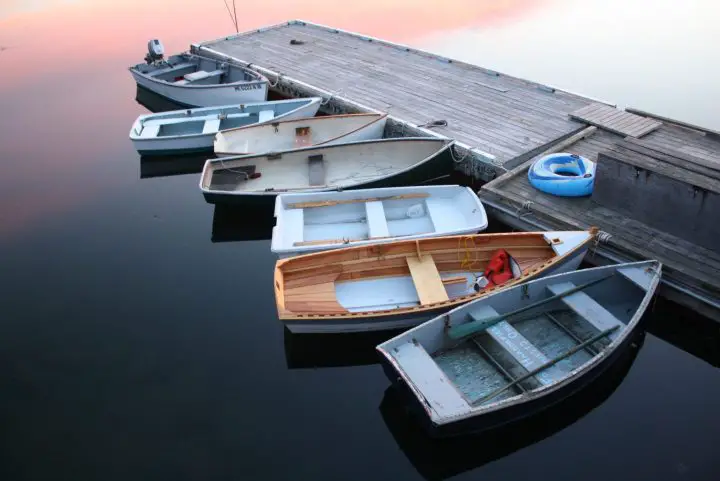
Table of Contents
Sailing dinghy, dinghies as tenders, dingy dinghies – what is a dingy, what are some uses for a dinghy, basic types of boat dinghy, lifting ability and storage when underway, hard dinghies, inflatable dinghy boat options, what’s the best dinghy for your cruising boat, dinghy boat faqs, what is a dinghy.
A dinghy is a small boat. But there are two primary dinghy meaning uses that you should be aware of.
- Sailing dinghies
- Dinghy boats as yacht tenders
Firstly, a dinghy is a small sailboat usually used for racing. So you might hear about “dinghy races” or “dinghy sailors.” These are the sorts of little boats that kids would learn to sail, but they’re also raced in the Summer Olympics.
Optics are the classic sailing dinghy. Its purpose is to sail and have fun. They usually carry one or two people and nothing else.
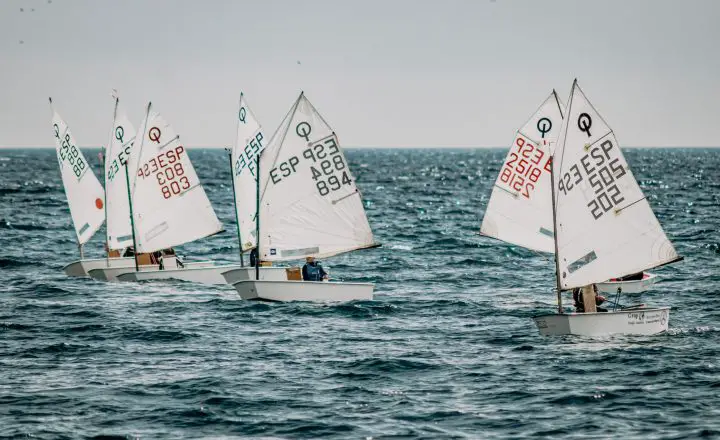
Secondly, a dinghy serves as a tender to a larger boat. In cruising and living aboard, this is the most commonly used definition. Your dinghy is like your car. Your boat is like your house or RV, and you park it somewhere comfortable. Maybe a scenic, quiet, and protected anchorage. Then you hop in the dinghy to explore the area or go into town for supplies.
A dinghy allows you not to have to pull up to a dock. Anchoring is usually free, and mooring fields are cheaper than taking a slip. Plus, living “on the hook” is more fun–there are fresh breezes, and your neighbors aren’t right next to you. You have more privacy and your own little slice of the ocean.
But to live like this, a good dinghy is important. It has to be safe in most conditions and be able to haul you and your gear. In addition, it should be able to handle the occasional provisioning run–meaning it needs room for lots of groceries.
Many cruisers affectionate call their dinghy “the dink” or some other fun name. In the US, a motorized dinghy will need to be state-registered.
Fun fact–RV owners who tow small cars refer to them as “dinghies.” They are cheaper to operate and easier to maneuver once they get where they’re going, so they’re used in the same way that boaters use dinghy boats.
Dinghies as tenders come in many forms.
- Kayaks or canoes
- Hard boats with small motors
- Inflatable boats that row
- RIB (Rigid Inflatable Boats) with motors — these can be slow or very fast
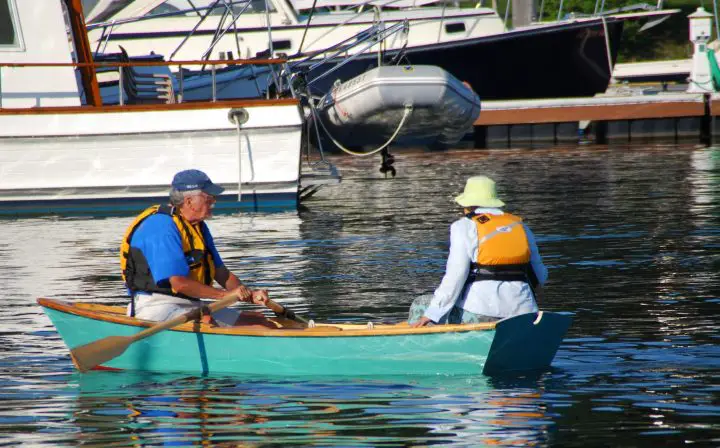
Dingy (adjective) – dirty, unclean, shabby, or squalid Dinghy (noun) – a small boat carried on or towed behind a larger boat as a tender or lifeboat… Definitions from Marriam-Webster Dictonary
So if your dinghy is a dingy boat, you should invest in some good boat soap and clean it.
Related reading: What Is the Main Function of a Boat Trailer’s Safety Chains?
Why is a Dinghy Important?
The dinghy is your primary method for getting ashore for cruisers traveling far from home or for liveaboards who aren’t tied to a dock. Having a good dinghy means you don’t have to get a dock every night. It means you can anchor in quiet coves in between towns. If you have a dog, it means they can get to shore morning and night for “shore leave.” And if you want to explore shallow creeks or go fishing, it’ll do that too.
The importance of a dinghy depends entirely on your cruising style. Some people don’t want to anchor–they’ll be at a dock every night no matter what. Those rare evenings between destinations when they do anchor for an evening, they don’t go ashore. A dinghy isn’t very important for them and won’t get used much.
On the other hand, some people live via their dinghy. The big boat gets them between destinations, but the dinghy is their “daily driver.”
The easiest way to explain how cruisers use their dinghy is by example. So here is a look at how boaters visiting the Bahamas usually use their dinghies.
You find a cozy island where you want to hang out and drop the hook in a protected cove. Then, you launch your dinghy and go to town, find secluded beaches, or just go exploring. Maybe you’ll want to find some coral reefs for fishing or snorkeling or see the tiny islets and rocks that protect the anchorage. Some islands have hiking trails or miles and miles of beaches.
Marinas are few and far between the islands, and the best and quietest spots are far from them. Most towns don’t have big docks–just small dinghy docks where you can tie up for free and walk to the store. In the Abacos, several of the most popular towns have harbors full of mooring balls and several small dinghy docks that make it easy to visit the town.
In these instances, everything you need for your boat will get there by way of the dinghy. You’ll take your trash to shore in the morning and bring home groceries. You might also take your propane tanks in for a refill or get some jerry cans filled with freshwater or diesel.
Finding the Right Dinghy For Your Boat
With so many choices, finding the dinghy for you can be a daunting task. Make it easier by learning about your choices, understanding how you will use it and what you will carry, and planning for where you will keep it on your boat.
Dinghies come in as many different designs as big boats do. You can pick between hard, inflatable, or RIB for the hull. A RIB (rigid inflatable boat) has a hard hull surrounded by inflatable tubes – so it’s kind of a hybrid.
For locomotion, you can have oars, a sail, a motor, or any combination of those. Motors used on dinghies are usually small and portable, although go-fast RIBs can have larger 15 to 25 horsepower motors installed.
It should also be noted here that dinghies are relative to the size of the “mothership.” For a 100-plus-foot motor yacht, the dinghy might be a 40-foot center console with triple 300 horsepower engines. So in dollars, their “dinghy tender” might cost quadruple what the rest of us spent on our “big boats.”
Dinghies should be suited to their purpose. For example, cruise ship dinghies ferry passengers to and from shore at destinations without cruise terminals. They’re passenger ferries and hold 30 or 50 passengers for the journey. For cruisers, a suitable dinghy usually means something that will get them to shore and back–the distance will vary. It must carry two to four people and a week’s worth of groceries.
Your choice of dinghy depends radically on the boat that will be carrying it. How will you deal with your dinghy when you’re underway? If it’s an inflatable that can roll up and store in a locker, life is easy.
But what if you want a hard dinghy or a RIB? Below are the most common options for lifting a bigger boat aboard. No matter how you get your dinghy aboard, once it’s on deck it must be lashed upside down to ensure it remains secure even in heavy seas.
Towing is often done but never recommended. Towing a dinghy limits the maneuverability of your big boat, making docking in tight spaces tricky. Plus, it opens up your dinghy to a world of possible disasters, including coming loose and being lost, or flooding and capsizing due to high winds or waves (or other boater’s wakes). Keeping your dinghy in the water also means more maintenance since you’ll have to scrape its bottom regularly. Most dinghies do not have bilge pumps, so bailing after every rainstorm will become a thing.
Underway, the load on the tow lines is high, and if you must tow, make sure to do so with a proper towing harness and bridle. Also, always remove your outboard before towing–it’s safer on the big boat.
If there is one advantage of towing, it is that your dinghy will be ready to go–it is already launched when you get where you’re going.
Also, note that a towed dinghy makes an easy target for theft in the anchorage–an important consideration in some parts of the world. It’s an easy thing for a thief to come along and cut the line while you sleep. The dinghy will drift away silently, and you won’t be any the wiser until morning.

Many cruising boats install davits on the transom. These provide lifting points that hoist the dinghy out of the water. Davits are an excellent upgrade because they allow you to keep the dinghy out of the water while traveling and hoist it up every night. Your dinghy will be cleaner, and you can take the plug out to let rainwater drain out. It’s safer too since you can easily lock it to the boat for long-term storage.
As handy as davits are, they can also be a pain. Getting the lifting harness and equipment just right can be a hassle. Dinghies on davits are prone to swinging in wind and waves, which can quickly chafe lines or even an inflatable’s PVC or Hypalon. If the dinghy is heavy or has a large outboard, the swinging can quickly get out of control to the point that it will damage the davits. Strap your dinghy down so that it doesn’t move at all, even when you’re in quiet anchorages. You never know when a ferry boat will throw a big wake your way!
Finally, the location of davits on the stern is less than ideal. Most boats don’t balance well with too much weight that far aft. Furthermore, should you take a wave over the stern during an overly boisterous passage, you can probably kiss your dinghy–and maybe even your davits–goodbye. Most salty sailors store their boats on the foredeck when at sea, even if they do have davits.
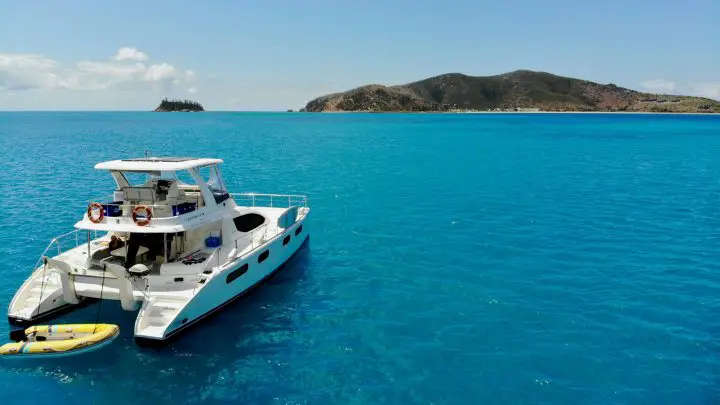
Foredeck or Rooftop Hoists
Powerboats usually have motorized hoists that lift their dinghies onto the high deck. Traditional trawlers can use their mini mast and block and tackle to do the same job. Sailboats use their mast and rigging to hoist a dinghy onto the deck. This can be a good way to get inflatables up to deflate them for storage, or to move a hard boat into position to be strapped down.
Once aboard, the dinghy can be sat on the deck in cradles or flipped over and sat upside down. How it stores will depend entirely on your boat and how much space you have–and where you have it.
Hard dinghies have rigid hulls, just like regular boats. Many are made of fiberglass, but there are also molded plastic ones. There are also a handful of classic or homebuilt wood dinghies out there.
Hard dinghies come in all sorts of sizes and shapes. Some are beautifully designed by the world’s best yacht designers, like Lyle Hess’s Fatty Knees. Others are functional, floating, plastic bathtubs, like the Walkers Bay 8.
Rowing Dinghy
Rowing dinghies are paddled with oars and a center-mounted seat. This limits the space on the boat considerably. The rower sits facing aft, which is awkward to maneuver the boat from but provides lots of power into each stroke.
Nearly all dinghies are made to be paddled, to some extent. But if rowing is a big part of your plan, you need to research carefully. Many dinghies row poorly. Flat and wide boats are difficult to control and hard to get to track straight in any wind or chop.
On the other hand, proper rowing dinghies are a pleasure. Look for classic designs that have a dominant keel line and soft chines.
Some cruisers and solo sailers use plastic kayaks as rowing dinghies. So long as it holds enough supplies and gets you where you need to go, it’s a great idea. Best of all, kayaks are much easier to maneuver in strong winds than rowboats, and faster too. In the world of dinghies, a kayak is like riding a bicycle.
Some cruisers want to know about the functionality of using standup paddleboards (SUPs) as a solo sailor’s dinghy. The truth is, SUPs make terrible dinghies. They have no gear carrying capacity, and they are impossible to lock up once you get to the dinghy dock. To make matters worse, they’re difficult–if not impossible–to paddle into strong winds or choppy conditions.
Sailboat Dinghy
Adding the ability to sail your dinghy moves it from the tool category into the toy category. We all like to have water toys, and if you can practically turn your dinghy car into a water toy, too, that’s pretty cool.
But, sailing a dinghy comes with an entirely new set of problems. It will need a sail rig, a keel of some sort, and a rudder to sail well. This will not work on any dinghy–it will need to have been designed from the get-go to sail.
Nice dinghies don’t come cheap, and adding a sail kit usually makes it substantially more expensive. But for purists who love the freedom and peace of real sailing, there are not many things that are more fun than skirting around the harbor silently in your sailing dinghy.
View this post on Instagram A post shared by SAILING • AVOCET ⛵️ (@svavocet)
Hard Dinghy with Motor
You can add a motor to most dinghy designs as long as you follow the manufacturer’s guidelines and do not overpower or overload it. Engines are heavy, and adding all of that weight to a tiny boat’s transom can quickly cause trouble.
Hard dinghies that are a suitable size for cruising boats seldom plane. A planing dinghy goes fast–so you can expect that most dinghies in the 8 to 12-foot range are going to be slow. The exception to this is the RIB–a hybrid hard-inflatable dinghy. For more details on RIBs, see below.
What’s left is the fiberglass or plastic dinghies that can’t get on plane–they have displacement hulls. They are usually rated for between two and five horsepower. Adding more horsepower does not necessarily make the dinghy go faster. The engines can be gas, propane, or electric.
Once you get into slightly larger boats, in the 15 to 18-foot range, there are a few that will get on plane. But these boats are so large and heavy that you cannot lift them on most cruising boats. For example, Boston Whaler has made a series of tenders and small tenders, like their 130 Super Sport . But, with an engine and fuel, this little boat weighs over 1,000 pounds.
Pros and Cons of Rigid Hard Dinghies
- Indestructible–much more robust than inflatable options
- Can be very good looking
- Always ready to go
- Options for rowing or sailing
- Tippy–much less stable than inflatable boats
- No way to store in a small space–can’t roll up or deflate
- Low weight carrying capacity
- Generally limited to low-horsepower motors
- Cannot plane (go fast)
- Can be very heavy and bulky
Best Hard Dinghy Brands
West marine dinghy.
West Marine sells a few models of rigid dinghy. They are made of molded plastic, extremely tough, and can be oared or powered by a small outboard. Unfortunately, none of the West Marine models come with a sail kit.
The West Marine Classic Dinghy is similar to a popular model known as the Walkers Bay 8. These can often be found on the used market and have many great options. They have a sail kit and a tube kit that converts them almost into a RIB.
Porta-Boat makes a unique, folding, rigid boat design. The boat panels fold together into a flat case that looks a little like a surfboard. You can unfold the Porta-Boat on your foredeck and launch it. When lightly loaded and given a big enough outboard, Porta-Boats are fast enough to plane–a rare find in rigid dinghies.
Portland Pudgy
The unique looks of the plastic Portland Pudgy betray its biggest plus–it is designed to serve as a lifeboat. For a cruiser outfitting their boat for crossing oceans, liferafts are expensive and take up a lot of space. So having a dinghy that could potentially serve that purpose could save you several thousand dollars–plus the liferaft packing service cost every one to three years.
The Pudgy is a cute dinghy, virtually indestructible, and equipped however you like. It’s made of roto molded polyethylene, just like a plastic kayak. You can row it, motor it, or sail it. The survival kit adds liferaft supplies and a canopy for emergencies. Best of all, the various pieces fit inside compartments built in the hull.
Fatty Knees, Trinka, Sam Morse Cherub, etc.
There are a handful of really classy classic dinghies out there, but you have to do a little research to find them. Usually, they result from a professional yacht designer answering a cruiser’s problem. For example, when Lin and Larry Pardey were sailing around the world on their Lyle Hess-designed Serafynn, Hess designed them a dinghy that fit perfectly on their boat. That little dinghy eventually became the well-loved Fatty Knees.
Dinghies of this class look great, and they usually row and sail beautifully. Most will accept a tiny outboard for power. None will get on plane, and space and hauling capacity are not as much as with a RIB. Some of these dinghies are still made, while others are rare finds on the used market.
Chesapeake Light Craft CLC Kits
The selection of small rigid boats that make good tenders is surprisingly limited. If you’re a hand person, you might consider building one from a plywood kit. Several suppliers of such kits, but Chesapeake Light Craft in Annapolis is the biggest. Their boats range from tiny rowing prams to motor and sailing yachts.
This type of boat building is known as stitch and glue. Panels of marine-grade plywood are stitched together and then glued together with epoxy. The result is a robust design that is lightweight and can last decades with proper care.
A nesting dinghy is one particularly interesting design that you can make from plywood. These are built in two or three sections, each stacking neatly in the other. So on your deck, the dinghy is small–only five or six feet long. However, when assembled, they can be 12 or more feet long.
Inflatable boats also come in a variety of types. The only universal feature is the inflatable tubes surrounding the boat, but the interiors and floors vary. Besides the cost of the boat, the deciding factor usually comes down to storage space and setup.
Roll-up floors are made of the same rubber as the hull but with wood slats that make it sturdier. Some are entirely flat and made of plywood or aluminum panels–these are generally called solid-floor boats. Next, there are inflatable floor boats with a high-pressure floor that you can stand on, like a paddleboard. And finally, RIBs have fiberglass or aluminum hulls surrounded by the inflatable tube.
Inflatables are probably the most popular dinghy option because they are easy to come by and easy to store. Once inflated and on the water, they are very stable and difficult to capsize. In addition, they hold an insane amount of weight, so you never have to worry about overloading it with your groceries or supplies.
Inflatables are sold with oars for rowing, but they make terrible rowboats. They blow around on the water and are difficult to control. With no keel, they don’t track and make terrible leeway in wind or chop. Some do have an inflatable keel, which gives the hull and little shape and greatly improves handling.
RIBs are easier to paddle since they have a keel and do track better.
Most inflatable or RIB owners will opt for engine power eventually, even if they like rowing. Inflatables can be quite fast, and some are designed to get on plane. In my personal experience, you need a minimum of 8 horsepower to plane a RIB, although 9.9-horsepower motors are even better. If you carry more than two people aboard or have a lot of gear, consider a 15-horsepower engine as the minimum.

Rigid Inflatable Boats
Making hybrids tends to not work out very well with many things in life. The results often take on all the disadvantages of each thing and few of the advantages. But with rigid inflatable boats, this isn’t the case. Luckily, these boats really are the best of both worlds.
The advantages are that RIBs are lightweight yet supremely stable for their size. Large inflatable tubes all around the hull provide a dry ride and are very difficult to capsize. They can be loaded for bear and carry lots of people and supplies.
The hard bottom of the boat gives it a solid keel and good handling characteristics on the water. If you want to get on plane, a RIB is your best bet. All you have to do is buy one that will safely handle a large enough outboard motor.
The complexity of a RIB’s design is proportional to its cost. The simplest boats are small, with a single floor. In other words, the floor you stand on is also the outer hull. It slopes down to the keel, making it harder to stand on than a flat floor. They have no built-in storage options. They’ll have seating on the outer tubes or a simple bench seat.
One step up is the double-floor RIB. These have a flat floor attached to the hull, so there is space below. These boats usually have some storage under the floor, near the bow. They’re easier to stand in, but they are also much heavier and more expensive.
Larger RIBs may have built-in seats and possibly a wheel-style helm. This looks comfortable, but it takes up a lot of space and weight that might be handier for extra people or more groceries.
The first rule is that if you have the space and budget for a RIB, you should get the RIB. You might be able to fit an air floor roll-up boat, but you’ll never like it as much. Some of them are very nice–but they aren’t RIBs, and they never will be.
If you absolutely, positively can’t fit or afford a RIB, then there are still plenty of options. But the remaining types of inflatables will always feel like a rubber toy boat more than a solidly built vessel.

Material – PVC vs Hypalon Dinghies
The vinyl material that makes up the tubes of an inflatable comes in either PVC or Hypalon. PVC is cheaper and the most common. Unfortunately, PVC is broken down the quickest from the sun’s UV rays.
Hypalon is the solution for areas with intense sun exposure. Hypalon will last twice as long as PVC boats. But, of course, it does come at a cost–it’s much more expensive than PVC. It’s also important to note that you cannot use PVC patches and repair kits on Hypalon boats–so repairs and even the glue for a Hypalon craft will cost more. Hypalon is also called CSM, or chlorosulfonated polyethylene (CSPE) synthetic rubber.
You also need to consider the size of the tubes and how many air chambers they are dived into. The larger the tube, the greater the boat’s reserve buoyancy and the better its handling and carrying capacity is. The more air chambers it has, the safer it will be should one chamber spring a leak or get punctured. A cruising sailors dinghy should have a minimum of three air chambers, but four is even better.
Rigid Hull Construction Material – Fiberglass or Aluminum
The rigid hard bottom of a RIB can be made of fiberglass or aluminum. Aluminum is an attractive option since this type of robust design was popularized by AB and now Highfield. Aluminum is strong and lightweight. It can still be dented and scratched, but the chances of it getting holed are very low.
Fiberglass boats are less expensive and heavier. But, just like any fiberglass vessel, they can be chipped and cracked by impacts with rocks or docks. Luckily, fiberglass is extremely easy to fix, whereas aluminum would require welding. It’s also easy to modify a fiberglass dinghy. If, for example, you wanted to add a cleat to the transom for towing, you could do so easily. That sort of modification is harder to do correctly with aluminum.
Small Dinghy Seating Capacity, Storage Space, and Load Limits
No matter whether you’re looking for a RIB dinghy boat with motor, a sailing dinghy, or a kayak, your choice always comes back to what exactly it is you need to carry. Small boats like these don’t have a lot of extra buoyance to spare when you overload them. If you sometimes need to carry an extra person or two, but your dinghy is too small, that could pose a big problem. If you need to ferry new house batteries out to your boat, but all you have is a kayak with 50 pounds for cargo–that’s not going to happen.
Whatever boat you like, take a look at its maximum loading capabilities. Thanks to the official US Coast Guard capacity plate, most dinghies will have this marked on them. This will rate the vessel for a maximum number of people, a maximum amount of weight, and maximum engine horsepower.
Pros and Cons of Inflatable Dinghies
- Can roll up or deflate for smaller storage
- Lighter than hard boats
- Enormous weight carrying capability
- Extremely stable–won’t flip even if you stand on one side
- Can carry more horsepower and go faster than hard dinghies
- Since they store smaller, you can usually fit a larger inflatable on your boat than you can a rigid boat
- Material degrades in the sun from UV damage
- Tubes can be punctured by rocks or chaffed bylines in extreme circumstances
- Best Inflatable and RIB Brands
West Marine earns a place on the list for simple ubiquity. West Marine dinghies are rebranded versions of those built by other companies – usually Zodiacs. Most, if not all, are made in China.
But the advantage is in their availability – most coastal areas of the US are near a West Marine store, and most stores have a few dinghy models in stock. You can go and see them in person, and you can pick them up and take them home on the same day. Pretty much every other option on the list will have to be ordered sight-unseen.
West Marine sells a selection of inflatable dinghies, from roll-ups and slat-floor models to top-of-the-line RIBs. They keep parts in stock at most stores, and the better boats are available in either PVC or Hypalon.
Highfield Boats
Highfield is best known for its hard-wearing Hypalon aluminum-hulled RIBs. These sharp and sturdy boats are found on most charter boats since they last the longest. The company also makes PVC roll-up models. Highfields are pretty much the hottest ticket in RIBs right now–their boats look and perform marvelously.
Their boats range from the tiny 6’7″ RU 200 roll-up to the SP900–a 30-foot, 900-horsepower center console powerhouse. The most popular dinghy tender is the Classic 310. If you need something lighter, the Ultralight line is excellent as well.
Zodiac Nautic
Zodiac is a French maker of inflatable boats. They have a full line, from small roll-ups to large professional rescue RIBs. Their boats are divided among different product lines. Cruisers will want to look into the Cadet line of dinghies, which come in roll-up and RIB versions.
If you’re looking for a boat with a helm, the Yachtline has four size options. These boats have built-in seating for up to nine people and engines up to 90 horsepower.
AB Inflatables
AB started as Antilles Boatworks–as you might imagine, their target market is the Caribbean. They make hardy Hypalon RIBs with aluminum hulls built for life in the tropics, plus jet boat yacht tenders and professional SAR and law enforcement RIBs.
Achilles makes roll-up, slat-floor, and RIB dinghies in various sizes.
Like the mothership you call home, your dinghy is uniquely yours. No two boaters will make the same choices – everyone has different priorities. For the couple driving a classic wooden boat, nothing will do but an equally classic wooden dinghy. On the other hand, speed and comfort requirements dictate a go-fast RIB for the ultra-modern motor trawler. There’s never a one-size-fits-all answer to boating, so research carefully and think about how you’re going to use your dink. The good news is, there’s an active used market for dinghies out there–so upgrading and trading until you get it right is an option.
Is it dinghy or dingy?
A dinghy is a small boat, usually used by a bigger boat to carry supplies and people to shore and back. For example, “The yacht’s dinghy brought the crew to shore, where they went shopping.”
Dingy is an adjective meaning dirty, unclean, or squalid. For example, “After two weeks at sea, the dingy sailor desperately needed a shave and a long, hot shower.”
Why is a boat called a dinghy?
The English word “dinghy” comes from a similar Hindi word that describes small rowing boats used on the rivers in India. According to Merriam-Webster, it first appeared in English around 1810. It likely became a loanword during the times of British India.
What is a dinghy for a boat?
The most common type of dinghy is a small boat used as a tender. It runs back and forth to shore, tending the needs of the larger vessel. For example, it might take passengers ashore, pick them up, or just pick up and move supplies.
Sailing dinghies are small racing sailboats, like those used by sailing clubs to teach sailing and racing skills.
Matt has been boating around Florida for over 25 years in everything from small powerboats to large cruising catamarans. He currently lives aboard a 38-foot Cabo Rico sailboat with his wife Lucy and adventure dog Chelsea. Together, they cruise between winters in The Bahamas and summers in the Chesapeake Bay.
Leave a comment
Your email address will not be published. Required fields are marked *
Save my name, email, and website in this browser for the next time I comment.
Become the Confident Skipper of Your Own Sailboat
The best dinghy sailboats for all your sailing activities..
- Post author: Anns
- Post published: October 12, 2022
- Post category: Uncategorized
- Post comments: 0 Comments
Introduction
If you’re looking to go sailing, it’s important to know what type of boat you should use. Here are some of the best dinghy sailboats that can help you get started:
The Sunfish is a small, easy-to-sail dinghy that’s perfect for beginners. With its large sail area relative to its size, the Sunfish can be sailed with a single person (though it’s typically raced in pairs).
The Sunfish is incredibly popular and has been around since 1957; it’s estimated that more than 1 million have been built worldwide. In fact, many people start their sailing careers on this very boat! You can find them throughout the world: from Florida to Australia and everywhere in between.
Racing dinghies are often called “cruising” boats because they’re so much fun to sail on open water—even if you don’t plan on racing. They’re easy enough to tow behind your car or truck when you need transportation, but still fast enough for some serious action once you get out there!
The Laser is a single-handed dinghy that can reach speeds of over 20 mph. This is because it’s lightweight, making it easy to move with one hand and accelerate quickly. The Laser is also very responsive, which means you’ll feel like you’re in complete control of your boat while sailing. This makes the Laser great for racing because it will let you get ahead of your competition easily.
The best part about this boat is its versatility—you can take out family members or friends if they have never sailed before, or if they aren’t very experienced sailors!
Hobie Bravo
If you’re looking for a dinghy sailboat that is great for racing, the Hobie Bravo is your best bet. It’s easy to sail and can be handled by anyone. This boat can also be enjoyed by kids, teens, and adults alike—making it a fun option for your whole family.
If you’re looking for a dinghy sailboat, the Optimist is the smallest but most popular of all. It’s a single-handed boat that is ideal for kids to learn to sail in. The stability of this boat makes it safe even for young kids to use.
The Optimist can be used as an introductory experience or as a stepping stone towards bigger boats like the Laser, which we’ll discuss later.
The 470 is the largest of our dinghy sailboats, designed for three people. It’s just as much fun to sail with two or even one person though! The 470 also comes in a super light version that you can use with a spinnaker.
The 420 is a small, two-person racing dinghy that’s ideal for beginners. It’s also a great boat for experienced sailors looking to get into competitive sailing. With its fast hull design and lightweight rig, the 420 can travel faster than most other dinghies.
The 420 is simple enough that you’ll be able to learn how to sail it in just a few hours—but it still offers plenty of challenge as your skills improve. A well-built boat will be easy to balance on the water and responsive when handled correctly by both crew members at once.
The Snipe is a small, fast boat that is known for its maneuverability. It can be sailed by one person and is popular with beginners because it’s so easily handled. The boat will also accommodate two people for short periods of time, but because it was designed to be single-handed, having two crew on board does make things more difficult.
The Snipe is a good choice for lakes and ponds because its shallow draft allows it to skim over shallow waters (which often have rocks or other obstacles in them). This makes the Snipe especially useful as a dinghy sailing boat for racing around buoys or around markers in open water races that use buoys as markers instead of land-based marks like lighthouses or buoys tethered near shorelines.
If you want to go out sailing, here are the boats you can use.
If you’re looking to go out sailing, here is a list of the boats you can use:
Sunfish: A great boat to start on. It’s inexpensive and easy to sail.
Laser: The Laser is a one-design class dinghy that is used for racing around the world. It’s fast and stable, so it’s perfect for racing or just having fun in smooth water conditions.
Hobie Bravo: This boat has been designed by Hobie Cat Company specifically for beginners who want more freedom when sailing their boats on lakes, rivers or calm waters. They are compact enough that they can fit into most vehicles easily, making them very portable! The Hobie Bravo has an adjustable centerboard that lets you adjust the draft of your sailboat depending on how much wind there will be during your trip (or if there isn’t any). This makes it easier than ever before!
We hope you enjoyed reading about the best dinghy sailboats for all your sailing activities. We know there are a lot of options out there and we tried to give a variety of different boats so you can find what works best for where you live (or want to sail).
You Might Also Like
10 reasons why you should purchase a catamaran, learn how to stay safe on a yacht, leave a reply cancel reply.
Save my name, email, and website in this browser for the next time I comment.

The Definitive Guide to Different Types of Dinghies
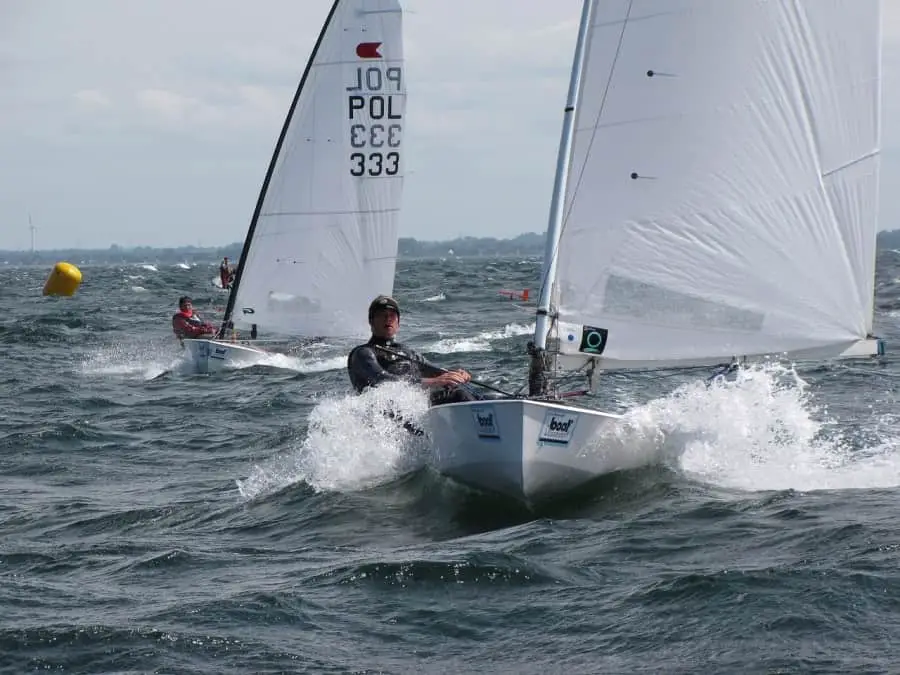
If you’ve ever gone out sailing or are just starting out, you’ve probably had the opportunity to get onto a dinghy to scoot yourself around. Dinghies can be extremely useful and fun at the same time whether you’re on a sailing dinghy or a power dinghy. The first time I ever got on a dinghy was a two person sailing dinghy, which is exactly when I started learning how to sail.
So what are the different types of dinghies? The different types of dinghies include sailing dinghies and power dinghies. Sailing dinghies have sails and do not have any type of motor attached to them and power dinghies have no sails and rely on motor power to move through the water.
When it comes to a dinghy, don’t let the size fool you. These little vessels can catch some serious speed and are central to many boating competitions around the world.
However, sailing dinghies and power dinghies usually serve different purposes, so let’s dive into the different types of dinghies to get a better understanding.
Sailing Dinghies
Sailing around on a dinghy is one of the more overlooked styles of sailing since everyone seems to want to get on a bigger yacht.
While there’s no arguing against the feeling of sailing on a larger vessel, dinghy sailing is a lot of fun which requires a good understanding of sailing fundamentals and an eye for precision.
High-Performance Dinghies
A high-performance sailing dinghy is as the name suggests; high-performance.
Its design is optimized to produce a fast and powerful sailing dinghy that can perform well in many environments and is often found in top regattas around the world. As you’ll soon realize, most sailing dinghies are constructed using fiberglass.
High-performance sailing dinghies usually have a spinnaker that can be attached to the sailboat so as to improve the speed of the boat under the right conditions.
Along with that, these sailing dinghies have what’s called a trapeze which is a wire that’s attached to the top of the mast and comes all the way down to the sailor’ harness.
This allows you to balance the force of the wind against the sail when the weather really kicks in.
Racing Dinghies
As you might have assumed already from the name, racing sailing dinghies are used primarily in racing environments.
While not too dissimilar to a high-performance sailing dinghy, there are some differences in terms of size, weight, and shape of the hull.
The design of a racing sailing dinghy is very important, but the skills of the crew on-board are usually what matters the most. Again, these types of sailing dinghies are made out of fiberglass.
The tactics implemented by the crew on a racing sailing dinghy are incredibly important. A racing sailing dinghy allows for crews to take advantage of the dinghy’s design so that they can tack and jibe much faster and more fluid than other dinghies.
On top of that, the hull of a racing sailing dinghy is quite flat which allows it to plane much easier resulting in a reduction of hull surface area touching the water.
Cruising Dinghies
If you’re not looking to compete with a racing or high-performance sailing dinghy, then you’re more likely to be sailing around in a cruising sailing dinghy. As the name suggests, they are made to cruise around the water and comfortably at that.
Designed for stability and safety in mind, cruising sailing dinghies are one of the most leisurely dinghies to take out on the water. Cruising dinghies are almost always made out of fiberglass.
As opposed to the previous sailing dinghies, cruising sailing dinghies generally have smaller sails and a more round hull .
As you might have guessed, the smaller the sails the less potential energy (and thus speed) your dinghy has.
The smaller sail also makes it easier to handle while cruising along. When it comes to the hull, a rounder hull also brings stability to the sailing dinghy as well as a very low chance of planing since there’s more contact between the hull and the water.
Cruiser-Racer Dinghies
If you have an inkling for racing but want to just cruise around comfortably from time to time, using a cruiser-racer sailing dinghy is an excellent choice.
These sailing dinghies are perfect for many different sailing environments and are my preferred type of sailing dinghy. It’s extremely common to find cruiser-racer dinghies made out of fiberglass.
Just like a cruising dinghy, the experience of being on a cruiser-racer dinghy is comfortable and provides good stability when out on the water.
However, if you want to turn up the notch and get it moving quickly, you can do just that since they have flatter hulls and generally larger sails. In the end, a cruiser-racer dinghy is right smack dab between a racing and cruising dinghy.
Classic Dinghies
If you’re looking for a classic experience on a sailing dinghy, then why not try out a… classic!
Classic dinghies can be found more often than you might think and can be fun to learn on when just starting out.
While you definitely won’t get the same performance as the other types of sailing dinghies, they’re quite comfortable and easy to use.
As opposed to most sailing dinghies, classic dinghies can be found to be made out of wood but usually they’re made from fiberglass.
Classic dinghies are unique in the sense that they have a cat sail and mast configuration . A cat, or “catboat”, has a single sail connected to a mast positioned at the bow of the sailboat.
Again, this makes them very easy to use and can be a great way to start learning how to sail. Also, I think they look rather nice, so beauty definitely plays a bit of a role in using a classic dinghy.
Power Dinghies
Before setting sail and exploring the beautiful waters of the world, you’ll want to make sure you know what kind of dinghy you have on-board.
As opposed to sailing dinghies, larger sailboats often times will have a power dinghy on-board in case you and your crew need to scoot around the local area quickly and easily.
Also, if you ever plan on anchoring out anywhere, it’s helpful to have a power dinghy to get to and from shore or to simply explore the surroundings.
The main differentiating factor between one power dinghy and another is the type of motor. More often than not, you’ll find dinghies with outboard motors, but that doesn’t encompass ever power dinghy out there.
Outboard Motor
As I just mentioned, the most common type of motor you’ll find on a power dinghy is an outboard motor.
Simply put, an outboard motor is attached on the backside of the power dinghy by means of a stern bracket and clamps or by bolts and nuts. Most outboard motor are powered by gasoline/petrol, however I’ve been on plenty of electrically powered dinghies when out fishing.
Outboard motors are popular because they’re relatively easy to maintain and can be replaced quickly if they crap out.
They also can be tilted up while still propelling your power dinghy forward, which allows you to cruise around shallow water without having your motor’s propellers hit the ground.
Your outboard motor can be either 2-stroke or 4-stroke. A 2-stroke motor requires mixing the gasoline/petrol with oil (most of the times this is automatic) and are generally less expensive to purchase.
A 4-stroke motor doesn’t require an oil-gasoline/petrol mix and is usually quieter, smoother, and more environmentally friendly, however more expensive to buy.
Inboard Motor
It’s not common that you’ll find a power dinghy with an inboard motor. However, you might see them if you’re on a power dinghy that holds 10 or more passengers and if the power dinghy is heavier in weight.
An inboard motor is fitted inside the power dinghy, so working on it or replacing it is a much larger hassle compared to an outboard motor.
Since power dinghies with inboard motors are quite heavy, you won’t find them on most sailboats. You will see them on shores where people are being taxied around as well as on-board much larger water vessels like megayachts.
Jet Drive Motor
Another type of dinghy motor is the jet drive motor, which, like the inboard motor, isn’t the most common type of motor to see on a power dinghy.
Similar to an inboard motor, a jet drive motor is generally built into the power dinghy making it more difficult to maintain and replace.
However, having a jet drive motor has its advantages and disadvantages. One advantage is one of safety being that, similar to a jet ski, a power dinghy with a jet drive motor doesn’t have propellers meaning nearby swimmers are much safer.
A major disadvantage to jet drive motor is that they can easily get items stuck inside of them, like plastic bags, jellyfish, and more, resulting in the motor shutting down.
Dinghy Materials
Apart from a power dinghies motor, another major differentiating factor when it comes to power dinghies is the material it’s made out of.
While the most common types of power dinghy you’ll find nowadays are inflatable, there are still plenty of solid material power dinghies out there.
If you’re on a power dinghy, there’s a good chance that it’s an inflatable power dinghy. There are several advantages of using an inflatable power dinghy especially that they’re easy to stow and less likely to damage vessels when they coming alongside.
A major disadvantage to using an inflatable power dinghy is that, unlike solid materials, they’re easier to puncture by reefs, sticks, and other sharp debris.
Fiberglass and Metal
Power dinghies that are made out of solid materials are often made out of either fiberglass or metal. While these types of materials aren’t as common nowadays for a power dinghy onboard a sailboat to have, they certainly aren’t rare.
The main advantage of having a power dinghy made out of fiberglass or metal is that it’s highly unlikely to be punctured compared to an inflatable power dinghy.
Some disadvantages include the fact that they can be heavy and they can scratch a sailboat’s hull when coming alongside.
Unless you’re a collector of classic dinghies, whether power or sailing, you won’t find many dinghies made out of wood nowadays.
Certainly, they exist but on much rarer occasions. The main advantage of a wood power dinghy is that it can look classy and antique-like while also not easily puncturable.
However, the downsides include those of the fiberglass/metal power dinghies as well as it being susceptible to leaks and having a greater maintenance cost compared to other power dinghies.
Get the very best sailing stuff straight to your inbox
Nomadic sailing.
At Nomadic Sailing, we're all about helping the community learn all there is to know about sailing. From learning how to sail to popular and lesser-known destinations to essential sailing gear and more.
Quick Links
Business address.
1200 Fourth Street #1141 Key West, FL 33040 United States
Copyright © 2024 Nomadic Sailing. All rights reserved. Nomadic Sailing is a participant in the Amazon Services LLC Associates Program, an affiliate advertising program designed to provide a means to earn fees by linking to Amazon.com and affiliated sites.
- AROUND THE SAILING WORLD
- BOAT OF THE YEAR
- Email Newsletters
- America’s Cup
- St. Petersburg
- Caribbean Championship
- Boating Safety

2023 Boat of the Year Best Dinghy: Tiwal 3R
- By Dave Reed
- December 16, 2022
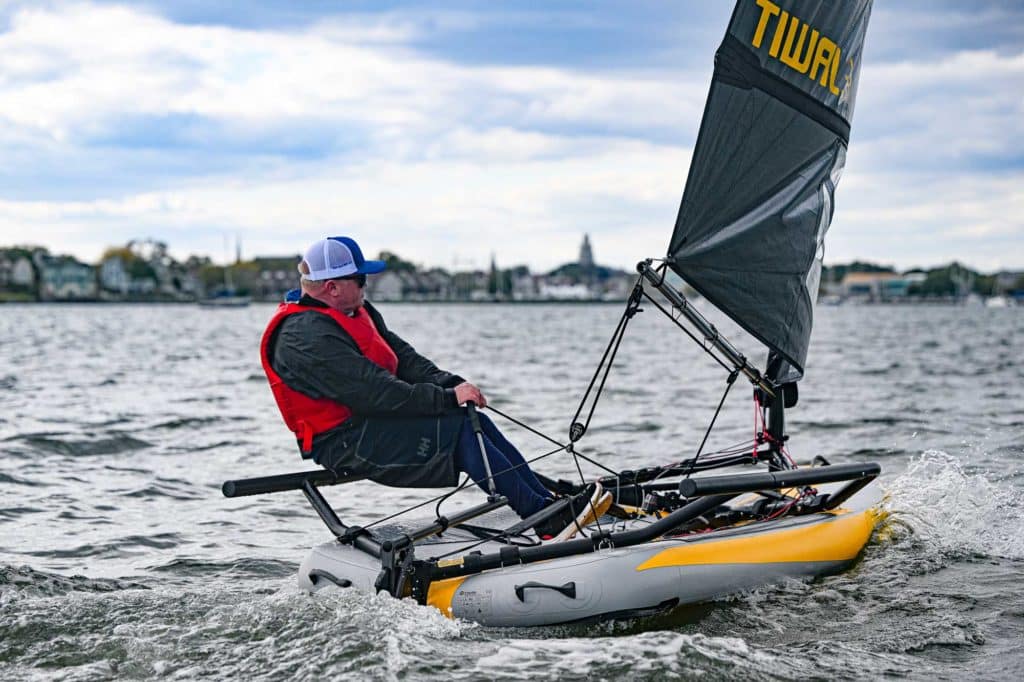
Sailing World Magazine’s annual Boat of the Year tests are conducted in Annapolis, Maryland, following the US Sailboat Show. With independent judges exhaustively inspecting the boats on land and putting them through their paces on the water, this year’s fleet of new performance-sailing boats spanned from small dinghies to high-tech bluewater catamarans. Here’s the best of the best from our 2023 Boat of the Year nominees »
The High-Pressure Ripper
- Tiwal 3R 2023 Best Dinghy
- Stated purpose: Recreational sailing, one-design and rally racing
- Crew: One to two
- Praise for: Performance, comfort, portability
- Est. price as sailed: $8,900
The surest way to grow sailing is to make it easy to get on the water with minimal hassle on a boat that is exhilarating to sail—and that’s exactly what the inflatable and powered-up Tiwal 3R does. Thousands of Tiwal fanatics around the world can’t be wrong; they love their zippy little crafts, and the Tiwal community has grown ever larger since its young French innovators launched the first model a decade ago. The Tiwal 3R is the continuing evolution of a great idea—with even better execution. Tiwal boats keep getting better, and this one is its best yet.
The “R” is for Race, and that’s because after two years of playing and adventure racing on the early-edition Tiwal 3s, keener owners started asking for more. But the engineering required to make Tiwal’s high-pressure inflatable hull and aluminum frame take on greater rig and structural loads that had them stumped for nearly two years, says Emmanuel Bertrand. They kept breaking it until they got it right.
At 10 feet and 121 pounds fully rigged, the magic of the Tiwal 3R is its portability, which would explain why the company says it sells so many in urban areas around the world. The sail, hull, blades, five-part composite spar and boom, and aluminum frame pack into two 5-foot duffel bags. To put it all together at whatever water’s edge takes about 30 minutes; it’s mere minutes if the boat is coming off the car top already pumped and assembled.
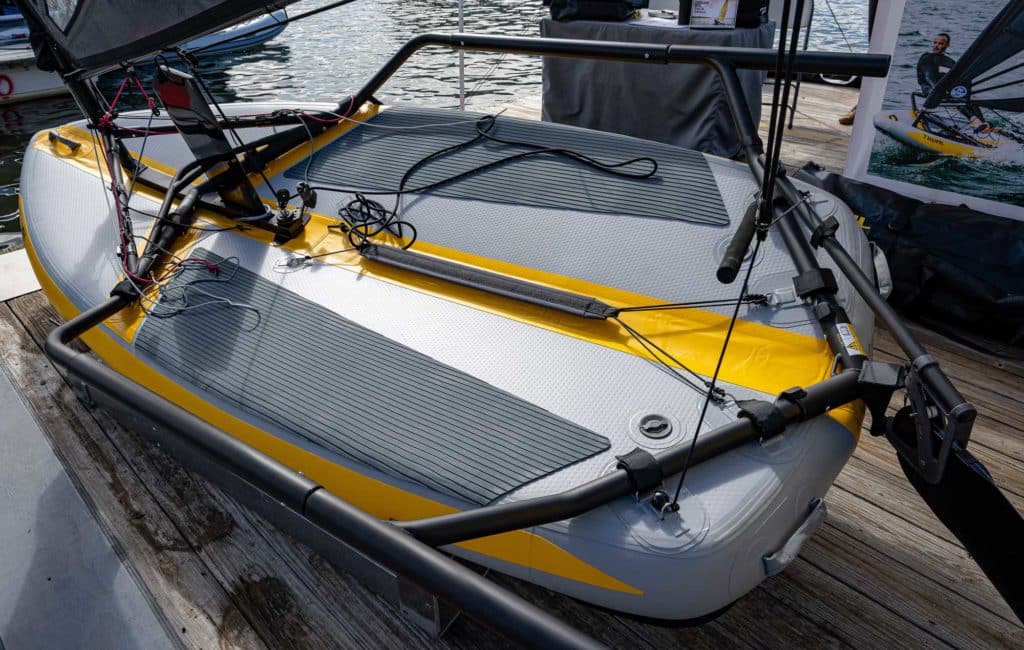
The PVC hull construction is identical to all other Tiwals, but the design for the 3R is a big improvement, with a more pronounced V-shape, a bit more rocker, and a reinforcement plate on the bottom near the transom, which gives it stiffness and a cleaner exit. “It’s difficult to get a hard corner on inflatables,” Stewart says, “so that’s a great solution to give it a nice sharp edge and a cleaner break so the water isn’t bubbling up over the back.”
When I got my weight in the right spot, the boat just took off. It’s quicker than quick. —Chuck Allen
The gust-responsive rig and big sail, built with North Sails racing cloth, is what takes the boat a big step from the recreational sailor’s Tiwal 3 to the racing sailor’s 3R, Powlison says. “This is the same size sail as a Laser, 77 square feet, which is a lot of power. When you get the vang set right, it does make a big difference. It is an effective control that they got right.”
Powlison’s only desire was to be able to get the sail controls to run farther back on the rack, accepting, however, that this would unnecessarily complicate the setup.
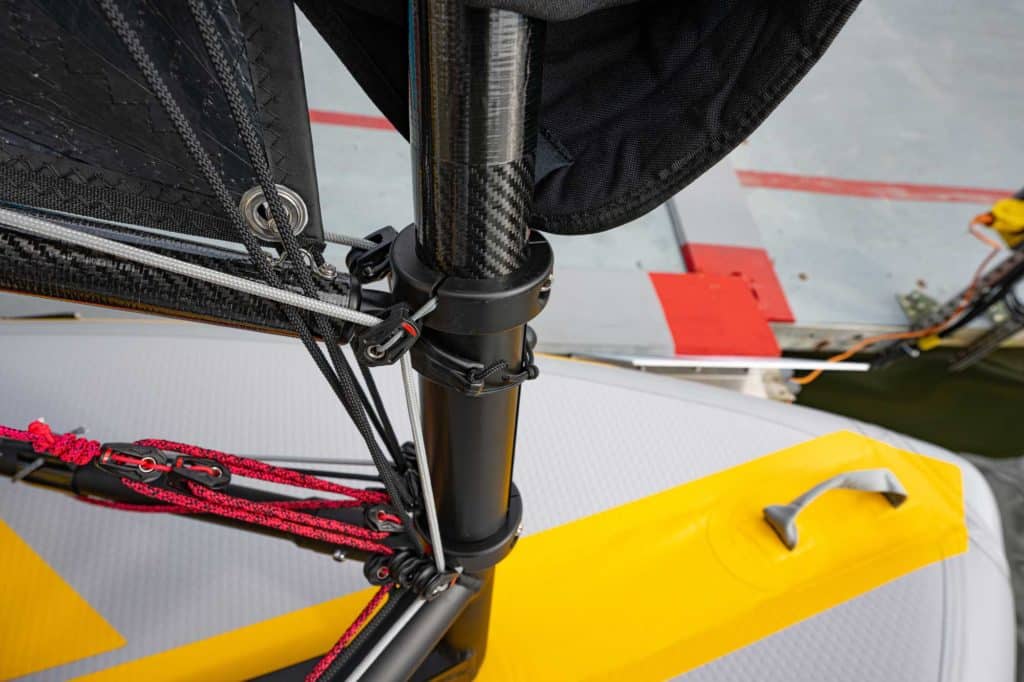
Allen, who’s been a Tiwal fan since the original, is impressed once again. “You definitely get a lot more performance out of this thing,” he says after sailing the boat in 10 to 15 knots and flat water. “I got hit with a puff and was like, dang! This thing’s got some wheels. It’s much faster and stiffer. I’m 170 pounds and was able to stay out on the rack the entire time, even when it got light.”
Stewart’s assessment of the 3R is that it’s built for a slightly more advanced sailor. “This thing is higher tech, with a lot more control lines, so it’s a bit more boat to handle. That being said, I’m a big guy (the manufacturer’s stated maximum load on the wing is 242 pounds), and I was never sitting in water, so it will accommodate a wide range of people.”
Getting the purchase systems for the 4-to-1 cunningham and the two-part vang (all of which are doubled-ended) into the mast collar hardware was an engineering exercise, says creator Marion Excoffon. But the end result is a system of color-coded lines and color-matched Harken blocks that work effectively and smoothly to depower the sail. Once the control systems are assembled, they don’t need to be rerun. When rigging, simply slide the mast into the collar, hook up the mainsheet, attach the rudder, and cast off for a fast and sporty adventure.
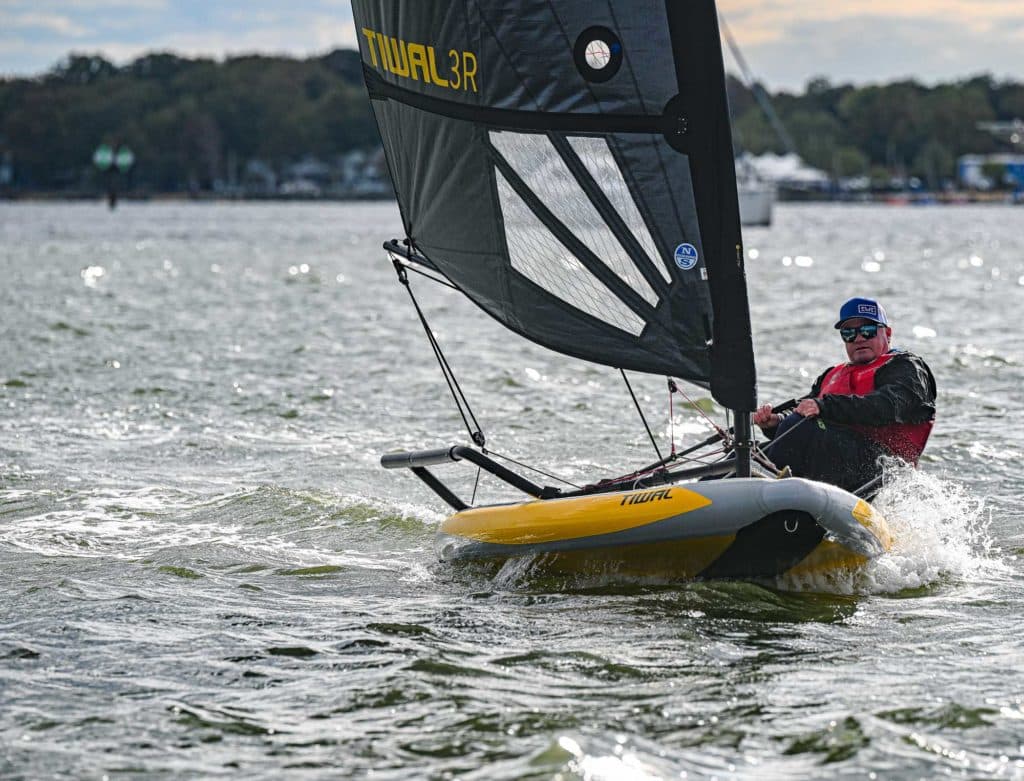
“Every time I got a little puff, the boat zipped right along,” Allen says. “The foils are stiff and shaped well, so the boat goes upwind really nicely. The bow was stiff and wasn’t flopping in the chop. But the best part was reaching around in the big puffs, sitting at the back corner of the rack, with the boat just skimming. When I got my weight in the right spot, the boat just took off. It’s quicker than quick.”
- More: 2023 Boat of the Year , Boat of the Year , Dinghy , Print Winter 2023 , Sailboats
- More Sailboats

Nautor Swan Has A New Pocket Rocket

Pogo Launches its Latest Coastal Rocket

A Deeper Dive Into the Storm 18

2024 Boat of the Year Best Recreational Racer: Z24

Luna Rossa’s New AC75 Marks Its Silver Age

Emirates Team New Zealand Splashes Defense Yacht

Wanderers of the Wayfarer Dinghy

Alinghi Red Bull Racing First to Reveal Its AC75

- Digital Edition
- Customer Service
- Privacy Policy
- Cruising World
- Sailing World
- Salt Water Sportsman
- Sport Fishing
- Wakeboarding

Learn the Basics of Dinghy Sailing: A Beginner’s Guide
Alex Morgan
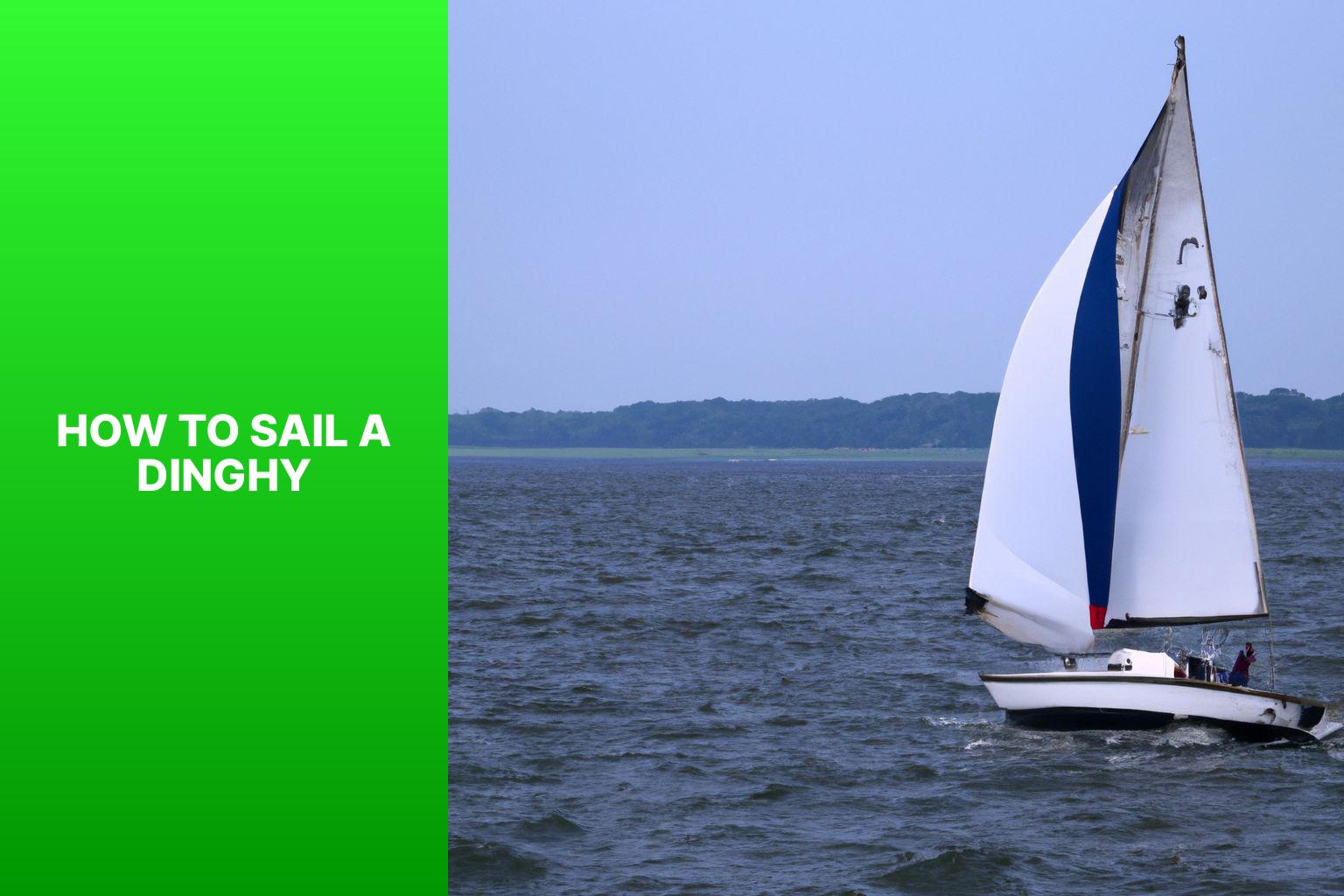
Sailing a dinghy can be an adventurous and rewarding experience, allowing you to navigate the water and harness the power of the wind. Whether you’re a beginner or looking to improve your sailing skills, understanding the fundamentals of sailing a dinghy is essential. In this guide, we will delve into the different aspects of sailing a dinghy to help you get started and sail with confidence.
Sailing dinghies are small sailboats that are designed to be sailed by one or two people. They are versatile and can be used for leisure sailing, racing, or even as a training vessel. Dinghies come in a variety of shapes and sizes, each with its own unique characteristics and sailing capabilities.
Before setting sail, it’s important to choose the right dinghy that matches your skill level, sailing goals, and local weather conditions. Factors to consider include the type of dinghy, hull design, size, and rigging options.
To ensure a safe and enjoyable sailing experience, it’s crucial to have the right equipment on board. This includes sailing gear such as life jackets, wetsuits, and appropriate footwear, as well as safety equipment like a whistle, signaling devices, and a first aid kit.
To effectively sail a dinghy, it’s important to familiarize yourself with its various components. These include the hull, rigging and sails, centerboard or daggerboard, and tiller and rudder. Understanding how these parts work together will help you maneuver the dinghy more efficiently.
Mastering basic sailing techniques is essential for any aspiring dinghy sailor. This involves understanding wind and weather conditions, launching and landing the dinghy, steering and maneuvering, and becoming familiar with different points of sail.
Once you have a solid foundation in basic sailing, you can explore more advanced techniques. These include tacking and gybing, sailing upwind, using sail controls to optimize performance, and adjusting your technique according to different wind conditions.
Safety should always be a top priority while sailing a dinghy. We’ll cover basic safety rules, collision avoidance, right of way rules, and how to respect the environment while out on the water.
Sailing a dinghy is a skill that can be continually improved upon with practice and experience. As you gain more confidence, consider taking lessons, joining a sailing club, or participating in races to further enhance your skills and enjoyment of this exhilarating sport.
Key takeaway:
- Choosing the right dinghy is crucial: Consider factors such as size, stability, and intended use when selecting a dinghy for sailing.
- Master the basic sailing techniques: Understanding wind, launching and landing the dinghy, steering and maneuvering, and knowing the points of sail are essential for successful dinghy sailing.
- Prioritize safety and etiquette: Follow basic safety rules, learn collision avoidance and right of way rules, and respect the environment while sailing a dinghy.
Choosing the Right Dinghy
When it comes to choosing the right dinghy , there are crucial factors to consider. From the size and weight to the sailing conditions you’ll be facing, this section dives into the key elements that will help you make an informed decision. So, before you set sail, let’s explore the essential aspects that can make or break your dinghy sailing experience. Get ready to navigate the waters in style and with confidence!
Factors to Consider
When choosing a dinghy for sailing, there are several factors to consider. You should think about the size and weight of the dinghy. A smaller, lighter dinghy is easier to maneuver and launch, which makes it perfect for beginners or sailors who will be sailing solo.
It’s important to assess your skill level as a sailor. If you are a beginner, you should opt for a dinghy that is stable and forgiving . On the other hand, more experienced sailors may prefer a high-performance dinghy that offers a thrilling sailing experience.
Next, consider the intended use of the dinghy. Will you be using it for racing or cruising? It’s crucial to choose a dinghy that is specifically designed for your intended purpose.
Of course, cost is another important factor to take into account. Dinghies come in a range of prices, so you should choose one that fits within your budget. Remember to factor in the cost of any additional equipment and maintenance.
Another consideration is the availability of spare parts and accessories for the dinghy. It’s advisable to choose a reputable manufacturer that offers a wide range of support and resources.
Think about where and how you will store and transport the dinghy. Assess whether you have enough space at home or if you will need to rely on a boatyard or marina for storage.
A pro tip is to try out different dinghies before making a final decision. This hands-on experience will help you determine which dinghy feels the most comfortable and suits your sailing style.
Essential Equipment for Dinghy Sailing
When it comes to sailing a dinghy, having the right equipment is essential . In this section, we’ll explore the must-have gear for an enjoyable and safe sailing experience. From top-of-the-line sailing gear to crucial safety equipment, we’ll cover everything you need to know to be fully prepared on the water. So, get ready to gear up and sail with confidence in your trusty dinghy !
Sailing Gear
When it comes to sailing gear, every sailor should have these essential items:
Having the right sailing gear is essential for comfort, safety, and enjoyment while on the water. Invest in quality gear and always check its condition before setting sail.
Safety Equipment
When sailing, prioritize safety. Here are essential safety equipment items to consider for dinghy sailing:
- Life Jacket: All sailors must have a properly fitting and Coast Guard-approved life jacket. Wear it at all times while on the water.
- Personal Flotation Device (PFD): Similar to a life jacket, a PFD provides extra buoyancy and is a lightweight option.
- Whistle or Horn: Use these signaling devices for emergencies or to communicate with others on the water.
- Throwable Flotation Device: A buoyant object thrown to someone in distress to assist with their flotation until help arrives.
- First Aid Kit: Keep a well-stocked first aid kit onboard for injuries or medical emergencies while sailing.
- Anchor: Essential for stopping the boat’s drift in case of engine failure or strong currents.
- Fire Extinguisher: Have a fire extinguisher onboard to handle potential fires caused by fuel or electrical problems.
Remember, safety equipment is effective with proper use and regular maintenance. Regularly inspect and replace damaged or expired safety equipment. Familiarize yourself with each item’s use and ensure everyone onboard knows the location and operation of the safety equipment.
Understanding the Parts of a Dinghy
Get ready to set sail as we dive into understanding the different parts of a dinghy. We’ll be exploring the hull , rigging and sails , centreboard or daggerboard , and the tiller and rudder . Each sub-section sheds light on a crucial component of a dinghy, taking you one step closer to mastering the art of sailing. So grab your life jacket and join us on this nautical adventure!
The hull, an integral part of a sailing dinghy, provides both buoyancy and stability . Constructed from materials such as fiberglass , its purpose is to withstand the forces of wind and water.
The performance of a dinghy is greatly influenced by the shape of its hull. For novices or when sailing in calm waters, a flat-bottomed hull offers exceptional stability. Conversely, a V-shaped hull is more adept at slicing through waves, enhancing speed and maneuverability.
To facilitate orientation and communication, a dinghy’s hull is divided into distinct sections: the bow (front), stern (rear), port (left), and starboard (right). These sections help sailors easily identify different areas of the boat and provide precise instructions.
Maintaining the hull’s condition necessitates regular cleaning and inspection. This practice ensures the early detection of any cracks or damage that may compromise the hull’s integrity. Proper storage and transportation are equally vital to prevent unnecessary stress or wear.
When selecting a dinghy, it is crucial to consider both the hull design and the appropriate material that aligns with your specific needs. Whether your purpose is leisurely sailing or competitive racing, seeking guidance from experts or experienced sailors can aid you in making the right hull choice.
Rigging and Sails
The rigging and sails on a dinghy are crucial for supporting and controlling the sails.
The mast , boom , and standing rigging all play a part in this process.
The mast , which is a tall pole, holds up the sails and can be securely attached to the hull of the dinghy.
The boom , on the other hand, is a horizontal pole that extends from the mast and holds the foot of the mainsail.
The standing rigging consists of wires or cables that provide support to the mast and keep it upright.
This includes the forestay , backstay , and shrouds .
The forestay helps in supporting the mast and controlling its movement, while the backstay provides additional support and stability.
The shrouds prevent the mast from leaning too much to one side.
One particular day, John found himself sailing in his dinghy when he suddenly encountered a fierce storm.
The powerful wind and massive waves made it incredibly challenging to control the sails.
It was in this difficult situation that John truly recognized the significance of well-rigged sails.
The proper tension and positioning of the rigging allowed him to swiftly adjust the sails, enabling him to navigate through the turbulent waters.
Thanks to the robust rigging and well-maintained sails, John safely guided his dinghy back to shore.
This experience served as a constant reminder of the crucial role that rigging and sails play in enhancing the performance and safety of a dinghy.
Centreboard or Daggerboard
The centreboard or daggerboard is an essential component of a dinghy, and it plays a crucial role in enhancing its sailing performance. Understanding its significance and how to utilize it effectively can greatly enhance your sailing skills and maneuverability. Here are some key points to consider about the centreboard or daggerboard:
– The centreboard or daggerboard is positioned in the center of the hull and functions as a retractable fin-like structure.
– Its primary function is to prevent the boat from drifting sideways while sailing upwind.
– Depending on the wind conditions and sailing direction, the centreboard or daggerboard can be raised or lowered accordingly.
– By retracting the centreboard or daggerboard , the dinghy can sail in shallow waters without the risk of grounding.
– The size and shape of the centreboard or daggerboard have a significant impact on the boat’s stability and its ability to point into the wind.
– Smaller dinghies typically have centreboards , while high-performance racing boats commonly use daggerboards .
– When sailing upwind, it is advisable to fully lower the centreboard or daggerboard to maximize resistance and minimize leeway.
– Regularly inspecting the centreboard or daggerboard for any damage or signs of wear is essential, as it may affect the boat’s overall performance.
– Having a proper understanding of how to use and adjust the centreboard or daggerboard will contribute to optimizing your dinghy sailing experience.
Considering these aspects and incorporating the centreboard or daggerboard effectively will ensure that you make the most out of this crucial sailing component.
Tiller and Rudder
The tiller and rudder are necessary parts of a sailing dinghy that assist in steering and maneuvering the boat efficiently.
Both the tiller and rudder collaborate to provide control and stability to the sailing dinghy. They enable the helmsman to navigate the boat smoothly, making precise turns and adjustments based on wind and water conditions.
It’s crucial for the helmsman to understand how the tiller and rudder function and how their movements impact the boat’s direction. Mastery of the tiller and rudder requires practice, as different sailing techniques, like tacking and gybing, demand precise control over these components.
Always maintain a firm grip on the tiller while sailing and remain cautious of any obstacles in the water. Proper utilization of the tiller and rudder ensures a safe and enjoyable sailing experience.
Basic Sailing Techniques
Get ready to set sail! In this section, we’ll dive into the basic sailing techniques that will turn you into a skilled dinghy sailor. From understanding wind and weather conditions to mastering the art of launching and landing the dinghy, we’ll cover it all. Get ready to learn about steering and maneuvering techniques, as well as the crucial concept of points of sail. By the end, you’ll have the knowledge and skills you need to confidently navigate the waters with your dinghy.
Getting Familiar with Wind and Weather Conditions
When getting familiar with wind and weather conditions for dinghy sailing, it is important to consider the following key factors.
You need to determine the wind direction in order to make the right maneuvers and select the appropriate course. Assessing the wind speed, which is measured in knots , is crucial. Light winds typically range between 5-10 knots , while stronger winds can exceed 20 knots .
It is also essential to stay informed about the weather conditions, including any changes in wind speed, gusts, or the possibility of storms. Observing cloud formations can provide valuable indications of approaching storms or strong winds.
It is important to take note of the sea state, as choppy or rough seas require extra caution. Considering the temperature is necessary for both comfort and ensuring appropriate clothing or sun protection.
Seeking advice from experienced sailors or locals can provide valuable insights on wind patterns or any peculiar weather conditions. It is crucial to be adaptable and prioritize safety by adjusting your plans based on the changing weather conditions.
Launching and Landing the Dinghy
Prepare the dinghy by securing all equipment and adjusting the rigging. Check the wind direction and current conditions to choose the best spot to launch. Lower the dinghy carefully into the water, making sure it floats freely.
Climb into the dinghy while holding onto the dock or shore. Release the dinghy and use a paddle or oar to push away if needed. Paddle or row to navigate away from obstacles and into open water.
Once a safe distance from shore, raise the sails if applicable, following proper procedures. Adjust the sails and tiller as necessary to control the direction and speed of the dinghy.
When returning to shore, steer the dinghy towards the desired landing spot, considering currents and obstacles. Gradually slow down the dinghy by adjusting the sails and tiller for a smooth approach.
If necessary, lower the sails and use oars or a paddle to maneuver into a suitable landing location. Guide the dinghy towards the shore, being mindful of other boats and people.
Once close enough to the shore, step out of the dinghy onto solid ground. Secure the dinghy to a dock, anchor, or other object to prevent drifting away.
Last summer, I went sailing with friends in a beautiful coastal area. We explored clear waters and enjoyed a warm breeze. One day, we anchored the dinghy near a secluded beach for a swim.
Upon returning, we faced challenges with launching and landing the dinghy due to the wind making it difficult to get back in. With careful maneuvering, we successfully landed the dinghy on the beach. This small victory added to the excitement of our sailing trip.
Launching and landing the dinghy require attention to detail and adaptation to changing conditions. Following safety precautions and being prepared ensures a smooth and enjoyable sailing experience.
Steering and Maneuvering
Steering and maneuvering a dinghy requires specific steps:
1. Hold the tiller firmly with both hands.
2. Push the tiller away from you to execute a left turn.
3. Pull the tiller towards you to execute a right turn.
4. Shift your weight to maintain balance in the boat and facilitate smooth turns.
5. Utilize gentle tiller movements to avoid excessive steering.
To ensure effective steering and maneuvering, it is important to practice and coordinate your actions. Be mindful of the wind direction and make adjustments to your steering accordingly. Take into consideration that the size and weight of the boat can influence its responsiveness to your commands.
Throughout history, dinghies have served a variety of purposes, ranging from transportation to recreational activities. The term “dinghy” stems from the Bengali word “dingi,” which refers to a small boat used for fishing and coastal transportation. These boats have played a significant role in maritime history, particularly in areas with shallow water or limited dock access. Over time, dinghies have evolved into versatile and maneuverable vessels, popular for sailing, racing, and rescue operations. Today, dinghy sailing is not only a recreational pastime but also a competitive sport enjoyed worldwide. To achieve success in sailing a dinghy, it is imperative to master the techniques of steering and maneuvering.
Understanding Points of Sail
The concept of points of sail is key for understanding sailing techniques. Points of sail are the angles at which a boat can sail in relation to the wind. The main points of sail are upwind or close-hauled, reaching, and downwind. Upwind or close-hauled means sailing as close to the wind as possible, with the wind coming from the front. Reaching is when the boat is sailing at an angle to the wind, either on a broad reach or a beam reach. Downwind means sailing with the wind coming from behind the boat, either on a broad reach, running, or dead downwind. Each point of sail requires different sail trim and steering techniques to optimize boat speed and efficiency. When sailing upwind or close-hauled, it’s important to trim the sails in tightly to create a close-hauled sail shape and ensure the boat can sail as close to the wind as possible. When reaching , the sails can be eased out slightly, and the boat can pick up more speed by being slightly off the wind. When sailing downwind , the sails are eased out even more, catching as much wind as possible to propel the boat forward. Understanding points of sail allows sailors to navigate different course directions effectively and make the most of available wind conditions.
Advanced Sailing Techniques
Ready to take your dinghy sailing skills to the next level? In this section, we’ll dive into the exciting world of advanced sailing techniques . From mastering the art of tacking and gybing to fine-tuning your sail controls , we’ll cover it all. Learn how to sail upwind like a pro and navigate through various wind conditions with confidence. Get ready to enhance your sailing prowess and sail with style !
Tacking and Gybing
Tacking and Gybing are important sailing maneuvers for changing direction efficiently.
Tacking is turning the bow of the dinghy through the wind to change its sailing direction. The sailor brings the bow into the wind by turning the tiller towards the wind. As the dinghy passes through the wind, the sail switches sides. Then, the sailor adjusts the sails and steers the dinghy on the new tack. Tacking is used when sailing upwind or changing the boat’s direction.
Gybing is changing the dinghy’s direction while sailing downwind. During a gybe , the stern of the dinghy passes through the wind, causing the sails to switch sides. To gybe , the sailor turns the tiller away from the wind, steering the dinghy downwind. It is crucial to control the movement of the mainsail during a gybe to prevent an accidental gybe, which can result in a sudden shift of the boom and potential injury. Gybing is used to change the direction of the dinghy when sailing with the wind.
Sailing Upwind
Sailing upwind requires specific skills and techniques to navigate against the wind. When sailing upwind, it is important to consider the following key points:
1. Angle of Attack: To optimize forward momentum, adjust the sail angle by pointing the bow slightly off the wind, around 30-45 degrees. This will ensure the best performance while sailing upwind.
2. Trim the Sails: Properly adjusting the sails is crucial for maintaining tension and shape. Make sure to tighten the leech, which is the back edge of the sail, to prevent fluttering. It is also important to ensure that the sails are not over or under trimmed.
3. Weight Distribution: When sailing upwind, position your body weight towards the front of the boat. This will counterbalance the wind pressure and help keep the boat upright, ultimately reducing drag.
4. Use Your Centerboard: To minimize sideways drifting caused by the wind, deploy the centerboard or daggerboard. Adjust the depth of the board based on the prevailing conditions in order to maintain stability and control.
5. Tacking Technique: To maintain momentum when changing direction, use a proper tacking technique. This involves turning the bow through the wind while coordinating the movements of the sail and crew.
Remember, sailing upwind can be challenging, especially in strong winds. Regular practice and gaining experience will enhance your proficiency in handling different wind conditions. Keep refining your skills by experimenting with sail controls and techniques in order to fully master the art of sailing upwind.
Using Sail Controls
Using sail controls is crucial for maneuvering a dinghy and maximizing its performance. Here are the necessary steps to properly utilize the sail controls:
- Adjust the mainsheet: Utilize this control to alter the angle of the mainsail in relation to the wind. Tighten the mainsail to increase power or loosen it to decrease power.
- Operate the boom vang: This control allows you to adjust the tension of the boom, preventing it from rising. Alter it accordingly to control the shape of the mainsail and stabilize the boom.
- Tweak the cunningham: This control enables you to adjust the tension of the luff of the mainsail. Utilize it to flatten the sail and decrease power in stronger winds.
- Manage the outhaul: This control influences the depth of the sail along the foot. Tighten it to flatten the sail or loosen it for more power.
- Utilize the jib sheets: These controls regulate the angle of the jib relative to the wind. Pull them in to trim the jib for enhanced power or let them out to reduce power.
- Engage the jib halyard: This control allows you to adjust the height of the jib. Raise it to increase the power of the sail or lower it to decrease power.
- Operate the jib fairleads: These controls determine the position of the jib sheets. Adjust them to achieve the proper sail shape and optimize performance.
By effectively utilizing these sail controls, you can enhance the performance of your dinghy and maximize your sailing experience.
Sailing in Different Wind Conditions
To effectively sail in different wind conditions, follow these steps:
- Assess the wind direction and strength before setting sail.
- Adjust the sail trim according to the wind direction. Trim the sails tight when facing a headwind and let them out when facing a tailwind .
- Stay alert for wind shifts and gusts. Watch for changes in the water’s surface and the movements of other boats.
- When sailing upwind, trim the sails tightly and steer close to the wind.
- When sailing downwind, use the sails to maximize speed and maintain control.
- Manage the boat’s heel angle by adjusting the sails and the distribution of body weight.
- Understand the concepts of “ tacking ” and “ gybing .” Tack to change direction by turning the boat into the wind, and gybe to turn away from the wind.
- Be prepared for varying wind strengths by adjusting the sail area. Decrease the area in stronger winds and increase it in lighter winds.
By following these steps, you can confidently sail in different wind conditions and adapt your strategy to optimize speed and control.
Sailing Safety and Etiquette
Navigating the open waters on a dinghy can be an exhilarating adventure , but it’s crucial to prioritize safety and respect for fellow sailors and the environment. In this section, we’ll explore the essential guidelines and rules that encompass sailing safety and etiquette . From basic safety rules to collision avoidance and right of way protocols , we’ll ensure you have the knowledge to sail with confidence. Plus, we’ll delve into the importance of respecting the environment, preserving the beauty of our precious marine ecosystems .
Basic Safety Rules
When sailing a dinghy, prioritize safety. Remember these basic safety rules:
- Wear a life jacket or personal flotation device (PFD) at all times.
- Check the weather forecast before sailing and avoid stormy or windy conditions.
- Maintain the dinghy properly, ensuring no loose fittings or leaks.
- Inform someone onshore of your sailing plans, including route and estimated return time.
- Stay alert and watch out for other boats, obstructions, and swimmers.
- Follow buoys and navigational markers to avoid dangerous areas.
- Understand and adhere to right-of-way rules to avoid boat collisions.
- Avoid areas with strong currents, undertows, or rough surf.
- If capsized, stay with the dinghy and try to climb back in. If unable, signal for help.
Pro-tip: Take a sailing safety course for more knowledge on safety procedures, navigation rules, and emergency protocols relevant to dinghy sailing. Preparedness and knowledge are crucial before venturing onto the water.
Collision Avoidance
Collision Avoidance is crucial for the safety of sailors and their boats. Here are some key points:
1. Awareness: Sailors must constantly be aware of their surroundings, including other boats, obstacles, and navigational markers.
2. Right of Way: Understanding the right of way rules defined by the International Regulations for Preventing Collisions at Sea (COLREGS) is crucial. For example, a boat on starboard tack has right of way over a boat on port tack.
3. Communication: Using appropriate signals, such as horn blasts or hand signals, helps communicate intentions to other sailors, especially in busy areas.
4. Predicting Actions: Sailors should anticipate the actions of other boats by observing their course, speed, and relevant signals to avoid potential collisions.
5. Maneuvering: When approaching another boat, it’s important to maintain a safe distance and adjust speed and heading if necessary to avoid a collision. This requires good boat handling skills.
In a true story, two dinghies were sailing closely during a regatta. Both sailors followed the right of way rules and effectively communicated their intentions. As they approached a narrow mark, a collision seemed imminent. One sailor quickly altered course, narrowly avoiding a collision. This incident emphasized the importance of situational awareness, quick thinking, and skilled maneuvering in collision avoidance.
Right of Way Rules
Understanding and following the Right of Way Rules is crucial for safety when sailing a dinghy. These rules prioritize certain situations to avoid collisions and accidents.
1. Sailboats have priority over powered vessels. If you encounter a motorboat while sailing, the motorboat should yield and avoid interfering with your course.
2. When two sailboats approach each other on opposite tacks , the boat on the starboard tack has priority. The boat on the port tack must keep clear and change course to avoid a collision.
3. If two sailboats are on the same tack , the leeward boat should keep clear. The leeward boat is the one positioned downwind and behind the other boat. It is the responsibility of the leeward boat to adjust their course and avoid potential collisions.
4. If two sailboats are on the same tack and overlapped , the windward boat must keep clear. The windward boat is the one positioned upwind and in front of the other boat. It is their responsibility to maintain a safe distance and avoid hindering the progress of the other boat.
Remember, these Right of Way Rules are essential for safety on the water. Understanding and following them will help prevent accidents and create a harmonious sailing environment.
Respecting the Environment
Respecting the environment is crucial when sailing a dinghy. It is important to follow these guidelines to minimize your impact on the ecosystem while enjoying the sport.
1. Dispose of waste properly: Avoid throwing trash or waste overboard. Make sure to carry a designated trash bag and dispose of it responsibly on land.
2. Avoid damaging marine life: It is essential to be mindful of your surroundings and to avoid hitting or disturbing marine animals, such as dolphins, turtles, or birds. Always keep a safe distance and never harm wildlife.
3. Use eco-friendly cleaning products: When it comes to cleaning your dinghy, choose biodegradable and environmentally friendly cleaning products. This practice helps to prevent harmful chemicals from polluting the water.
4. Respect marine protected areas: Take the time to learn about designated marine protected areas and follow their rules and regulations. By avoiding entering restricted zones, you contribute to the preservation of fragile ecosystems.
5. Minimize noise pollution: Keep noise levels low to avoid disturbing marine life and other sailors. It is recommended to avoid loud music, shouting, or unnecessary engine revving.
6. Reduce your carbon footprint: Whenever possible, choose sustainable transportation methods. Consider carpooling, using public transportation, or sailing to your destination in order to reduce carbon emissions.
Pro-tip: Always remember that the environment is a shared resource. Leaving it as pristine as you found it not only contributes to the preservation of marine ecosystems but also promotes sustainable sailing practices.
Some Facts About How To Sail A Dinghy:
- ✅ Balance is an essential control in sailing a dinghy. (Source: Our Team)
- ✅ Sail setting is crucial and involves adjusting the mainsheet to achieve optimal positioning. (Source: Our Team)
- ✅ Boat trim is necessary to keep the dinghy level from front to back, preventing submersion of the bow. (Source: Our Team)
- ✅ The centreboard is used to correct sideways drift, with different positions required depending on the point of sail. (Source: Our Team)
- ✅ Choosing the most appropriate course and compensating for factors like tide and leeway are important in sailing a dinghy efficiently. (Source: Our Team)
Frequently Asked Questions
How do i maintain side to side balance while sailing a dinghy.
To maintain side to side balance while sailing a dinghy, you can lean out or in depending on the wind conditions. Leaning out helps counterbalance the force of the wind and keeps the boat level. Adjusting the mainsheet is also crucial for sail setting to ensure it is not too loose or too tight. The luff of the sail should just stop flapping for optimal positioning.
What is a zigzag course and when should I use it?
A zigzag course, also known as beating or tacking, is used when sailing upwind. It involves sailing in a diagonal pattern, alternating between a close-hauled course and a reaching course. This allows the boat to make progress against the wind direction and reach a desired destination. Use a zigzag course when the wind blows directly towards you or at an angle.
How do I maintain fore and aft boat pitch?
To maintain fore and aft boat pitch, also known as boat trim, you need to keep the boat level from front to back. Different positions are required depending on the point of sail. When the wind is blowing from behind, sitting well back in the boat is necessary to prevent the bow from submerging. Proper boat trim helps prevent the boat from dragging in the water.
What is “Neue Funktionen testen” in the sailing context?
“Neue Funktionen testen” refers to testing new features or updates being developed for sailing equipment or technology. This allows sailors to try out and provide feedback on these new features to improve their sailing experience, such as high-speed sails or advanced navigation systems.
What should I do if the wind dies while sailing a dinghy?
If the wind dies while sailing a dinghy, you can resort to alternative techniques to maintain your course made good. This may include using a paddling technique with oars or a paddle, or even manually towing the boat to a desired destination. It is also important to keep calm and patient, as the wind may pick up again.
How does YouTube work in relation to sailing?
YouTube is an online platform that allows users to upload, share, and view videos, including sailing-related content. Sailors can use YouTube to access a wide range of resources, including tutorials, tips from experienced sailors, and coverage of sailing events. YouTube’s recommendation algorithms also help users discover relevant sailing videos based on their interests and viewing history.
About the author
Leave a Reply Cancel reply
Your email address will not be published. Required fields are marked *
Save my name, email, and website in this browser for the next time I comment.
Latest posts

The history of sailing – from ancient times to modern adventures
History of Sailing Sailing is a time-honored tradition that has evolved over millennia, from its humble beginnings as a means of transportation to a beloved modern-day recreational activity. The history of sailing is a fascinating journey that spans cultures and centuries, rich in innovation and adventure. In this article, we’ll explore the remarkable evolution of…

Sailing Solo: Adventures and Challenges of Single-Handed Sailing
Solo Sailing Sailing has always been a pursuit of freedom, adventure, and self-discovery. While sailing with a crew is a fantastic experience, there’s a unique allure to sailing solo – just you, the wind, and the open sea. Single-handed sailing, as it’s often called, is a journey of self-reliance, resilience, and the ultimate test of…

Sustainable Sailing: Eco-Friendly Practices on the boat
Eco Friendly Sailing Sailing is an exhilarating and timeless way to explore the beauty of the open water, but it’s important to remember that our oceans and environment need our protection. Sustainable sailing, which involves eco-friendly practices and mindful decision-making, allows sailors to enjoy their adventures while minimizing their impact on the environment. In this…

Small Craft Advisor

Setting up a Sailing Dinghy for Cruising
If you own a dinghy and race it at your local club, can you use the same boat for cruising.
Article by Steve Bradwell
DCA Editor’s Preface:
The ENTERPRISE was designed by Jack Holt in 1956 for the now extinct UK newspaper The News Chronicle . It was followed by the MIRROR dinghy, also designed by Jack Holt and this time backed by The Daily Mirror. They were both conceived as cheap and capable sailboats for “everyman” to build or buy—but that’s where the similarity ends. The Enterprise is a conventional stem dinghy while the Mirror’s defining feature is its shapely bow transom (or “pram bow”). More importantly, the Enterprise was designed to be a fast popular racer from the start with a big sail plan to suit. It is thought to be relatively unstable compared with other boats of similar performance. Unlike the Mirror, the Ent is not a popular choice for cruising and ‘pottering,” despite the availability of a smaller sailplan. Steve Bradwell is one of a select minority. He usually sails his Enterprise with a cruising main and the normal jib.
As a club racer the Enterprise is still a very popular international class. Its size, weight and power—and value for money—add up to a package that has a wide appeal. It is most often raced without a spinnaker, but they are generally seen on this boat in the US.
I have written this prelim because I feel that Steve’s choice of a racer for his cruising boat lends weight to his practical and down to earth advice on how to set up any sailing dinghy for cruising. I see this as a short but seminal article. It corrects the impression that you need expensive equipment or a new boat to go cruising.
—Keith Muscott
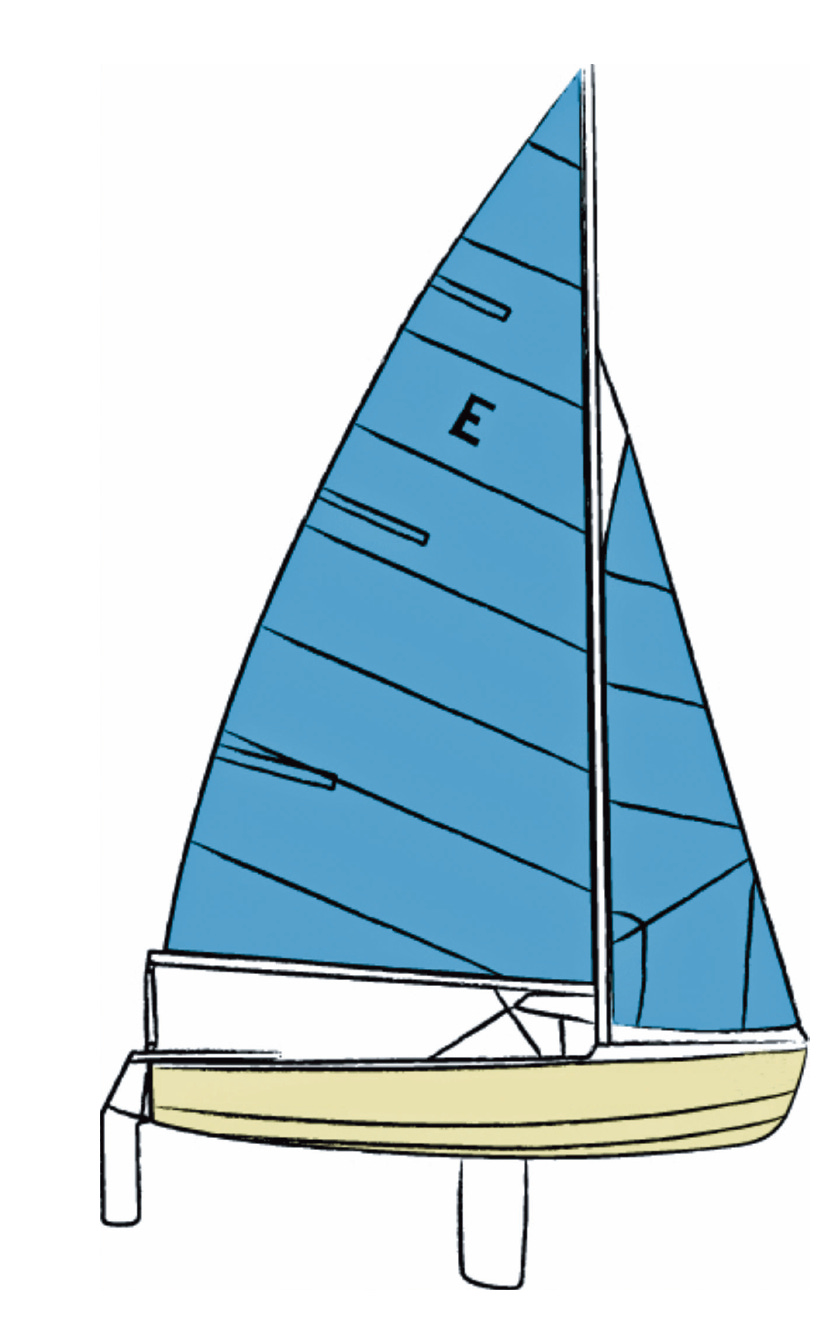
The Enterprise Dinghy. Its blue sails are as much a recognised feature as the red sails on a Mirror
If you own a dinghy and race it at your local club, can you use the same boat for cruising, without modifications that will take it out of class? The chances are you can and if it’s a boat people tell you is too “tippy” for cruising, all it may need is an effective way of reducing the sail area. Maybe your boat has a square gooseneck connecting the boom to the mast, in which case you could use roller reefing. Failing that a cheap set of second-hand sails from another class could be used to tame it. There are two reef points on my mainsail. Jiffy lines back to the mast. Previously I had roller reefing using the square gooseneck pin, which was fine, but slab reefing is better.
If that appeals to you, here are some suggestions for additional equipment you might need. How much of it you use will range from almost none for day-cruising on an inland lake to most of it for overnight coastal cruising in unfamiliar waters.
This is my personal gear I carry on my Enterprise and there are plenty of alternative approaches. Nothing is set in stone. As for the smallest boat that can be used, all I can say is that the most popular boat in the DCA South Coast fleet is the 10ft 10inch Mirror, a number of which are used for sleep-aboard cruising.
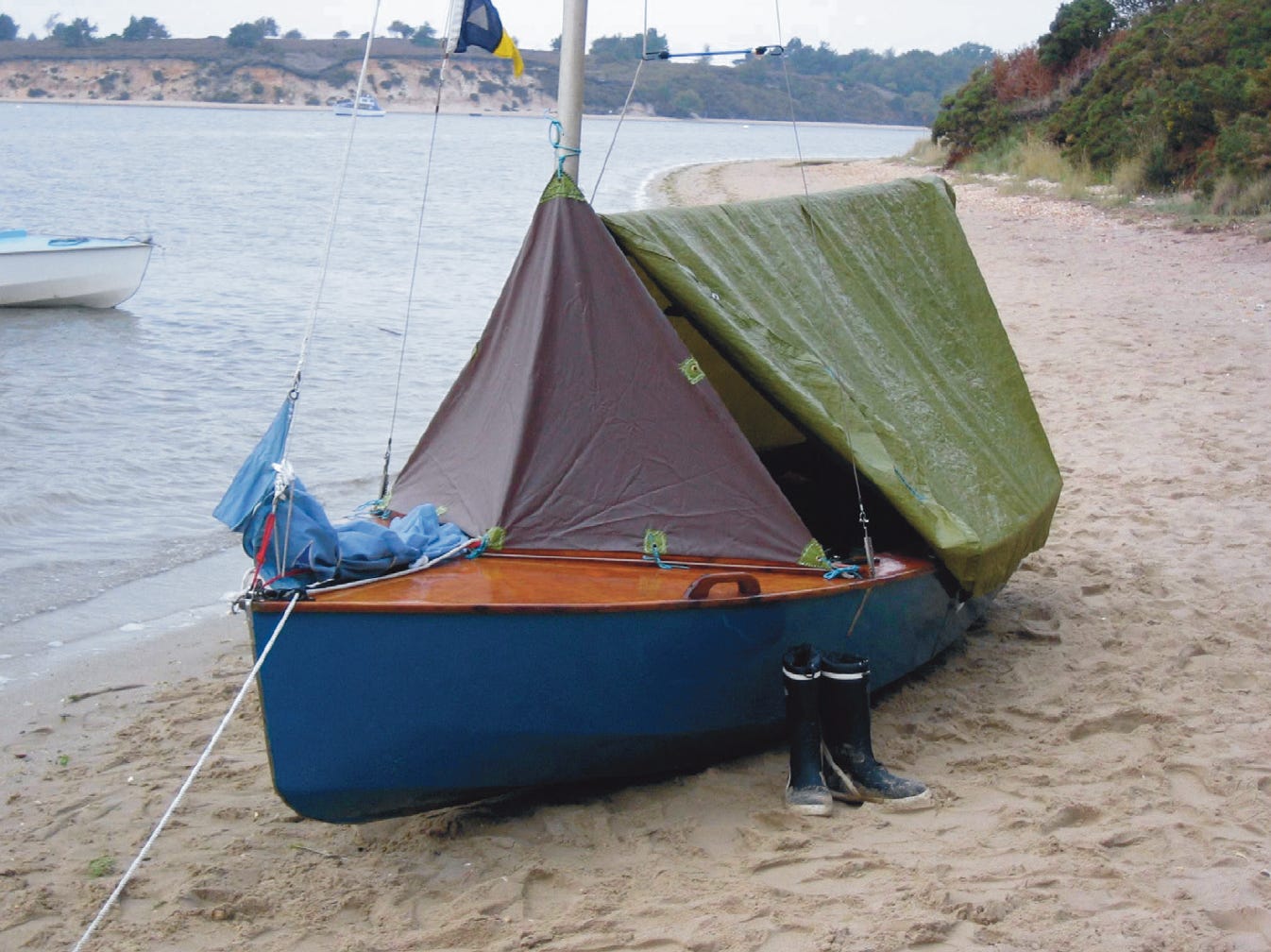
Enterprise on the beach with a two–piece boat “tent,” using a standard sized poly tarpaulin and a cut-to-shape brown groundsheet
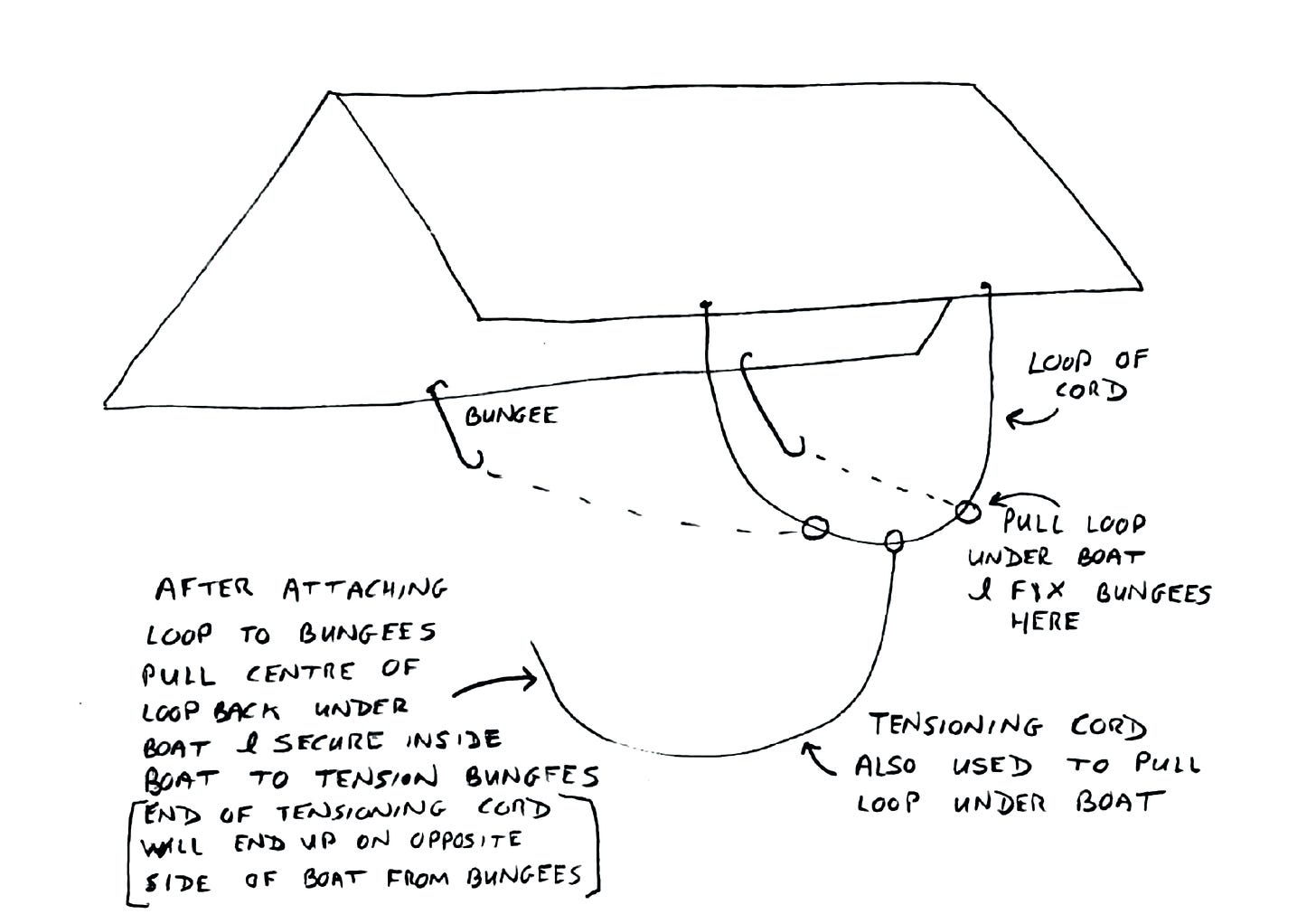
Extra eyelets may need to be added to the tarp for line attachment points. DIY eyelet kits are sold at most chandlers. This system avoids the need for through-hull fittings and is used on my boat . Other methods of attaching the sides of the boat tent are more commonly used but may require some modification to the boat.
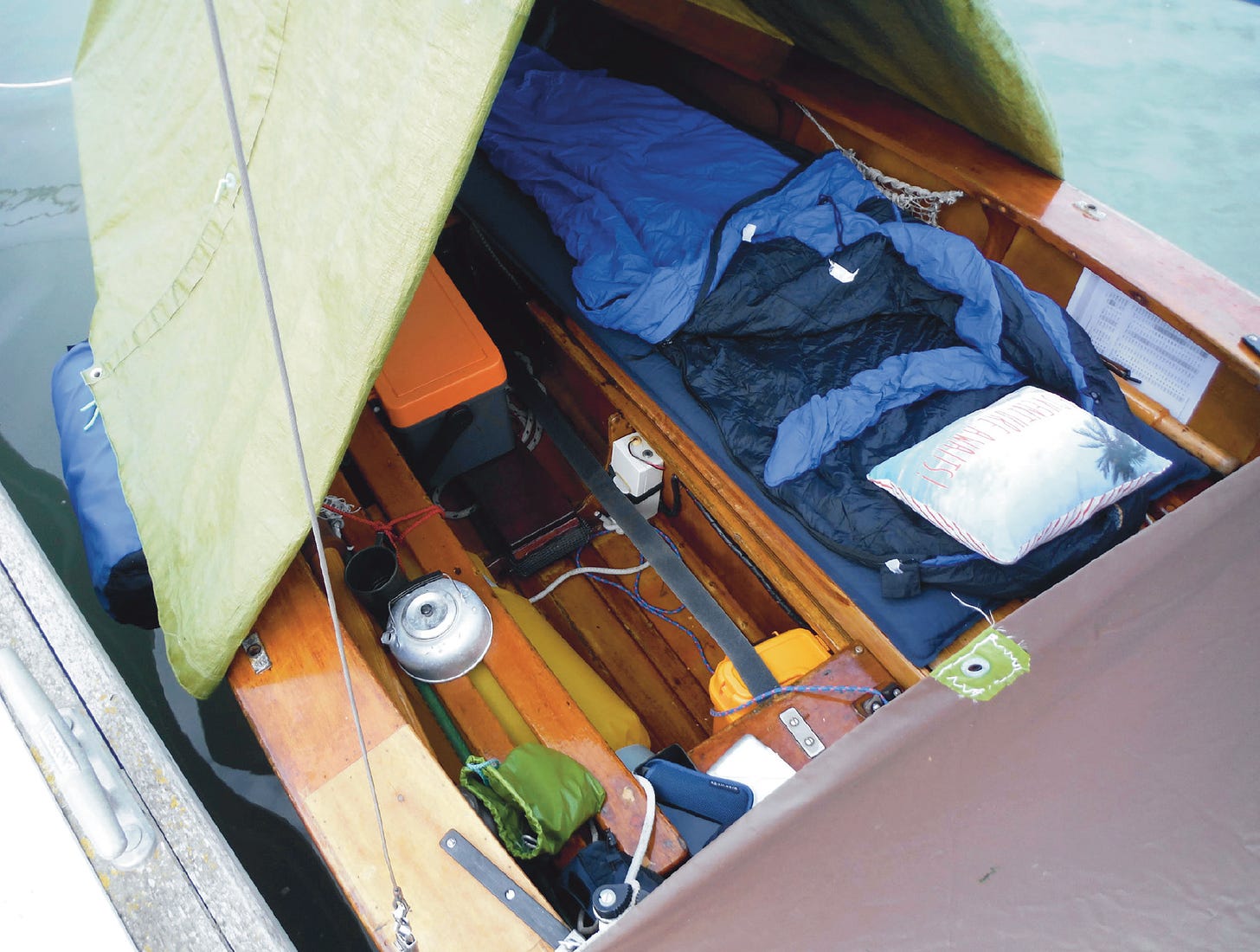
Living on board an Enterprise. Most people find boats around this size (13 feet 4 inches), practical only for solo camping aboard. Something around the size of a Wayfarer (15 feet 10 inches) might be more suitable for two.
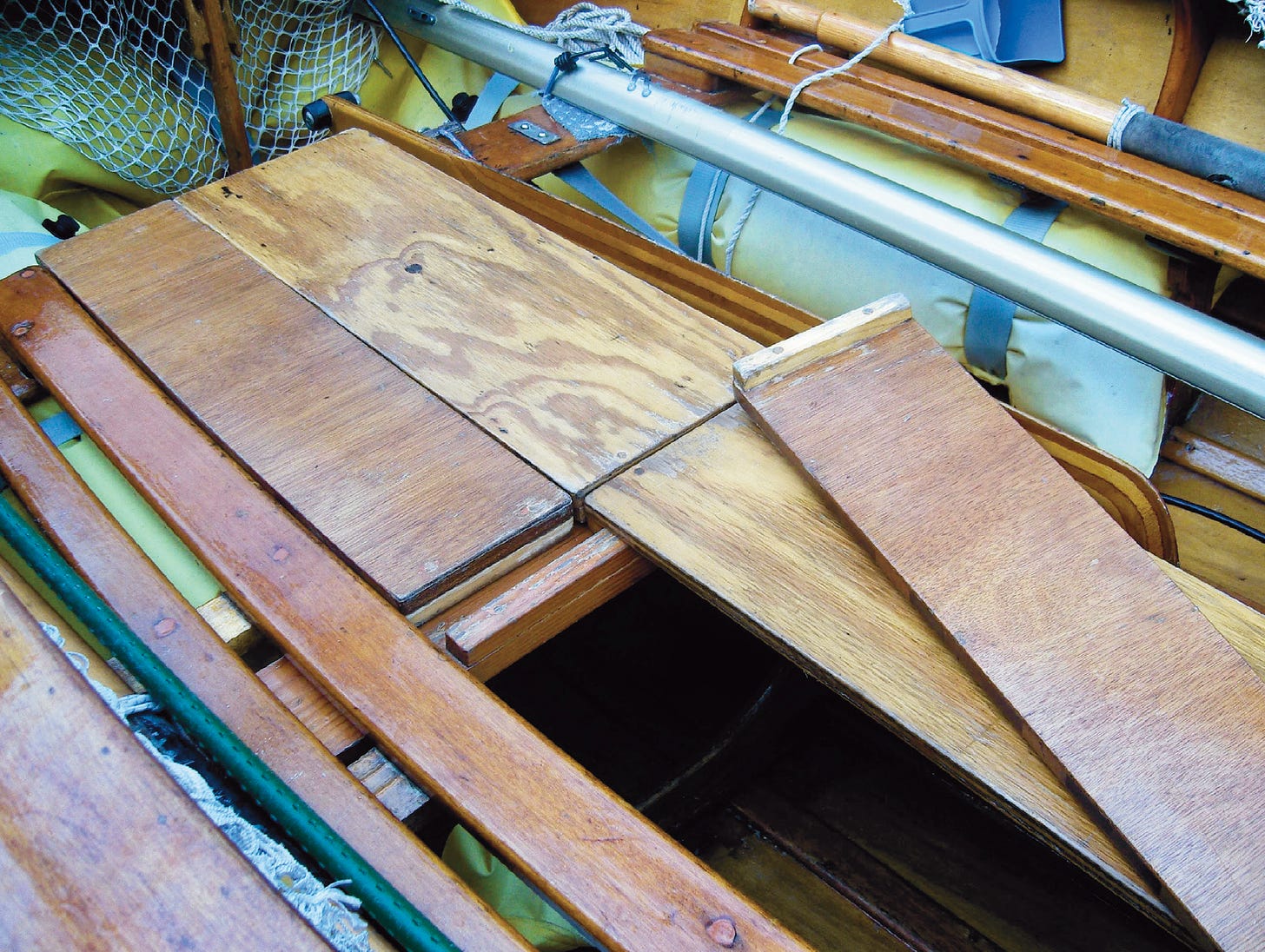
Bed Boards. Most boats the size of an Enterprise will require bed boards to be made (above) to provide a flat unobstructed area to sleep on. The ones shown lock together to stop them separating and rest on the forward and rear thwarts with a removable channelled cross support which simply sits on top of the centreboard case at one end and a hull stringer at the other. The method will differ greatly according to boat classes and how they are constructed, in wood or fibreglass.
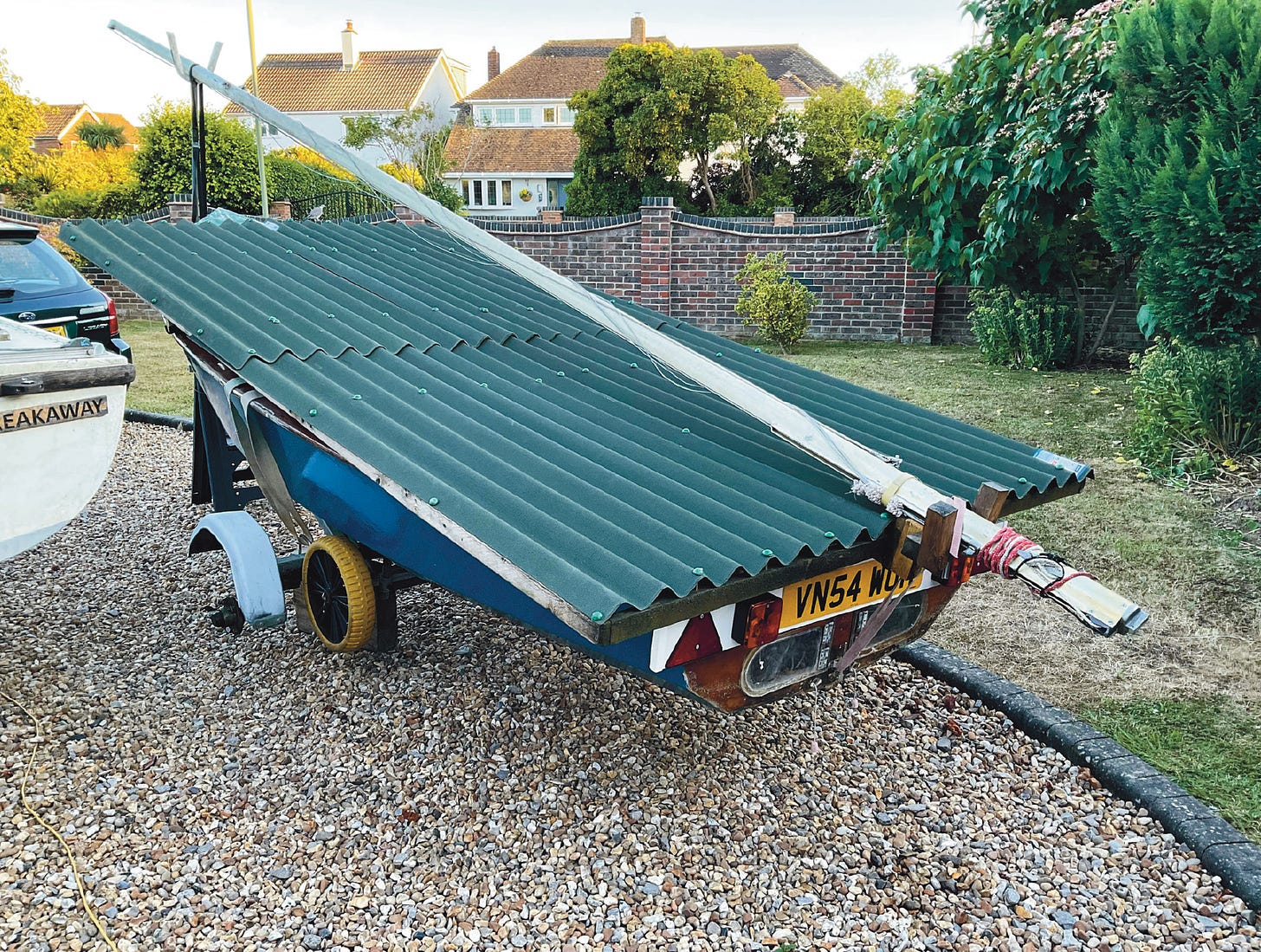
Wooden boat? You need to keep rain water out. This is my solution.
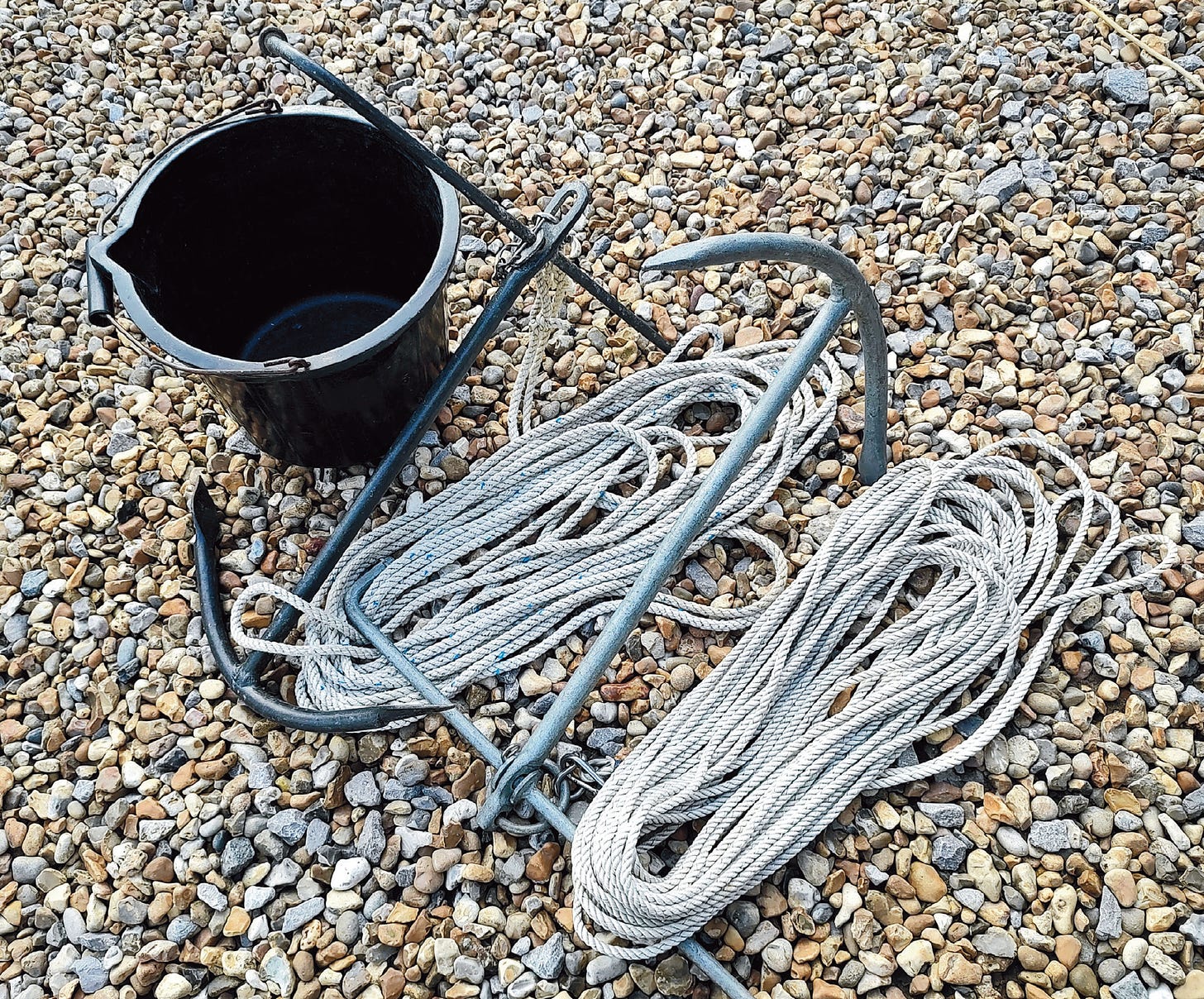
Anchors and warps / cables. You will definitely need an anchor, preferably two for overnight stops. There are endless arguments over which type is best, but these are mine. Remember you may find your anchor attached to the foreshore or dry land as often as the sea bed.
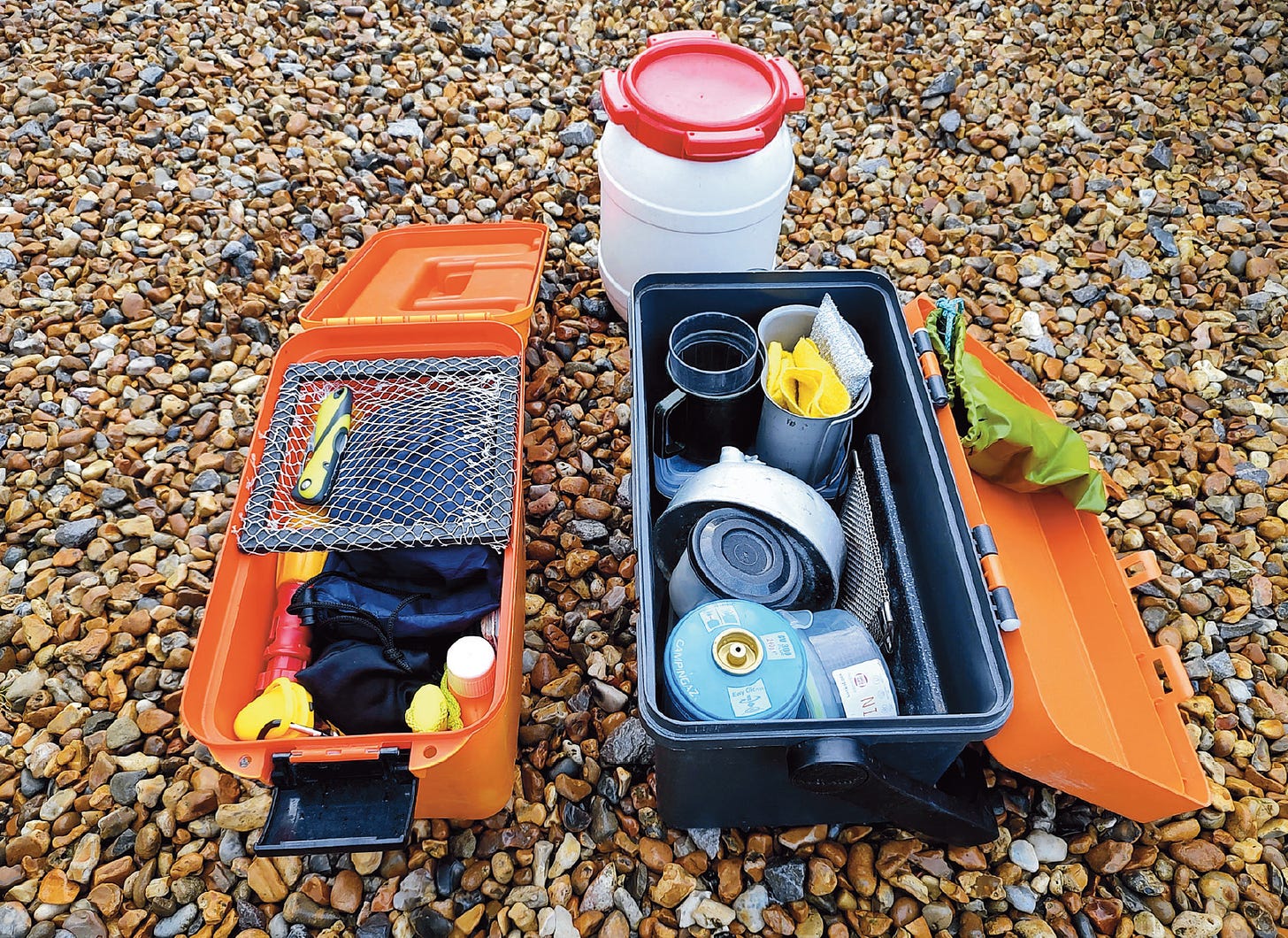
Containers for your gear. Mine range from waterproof, like the screw-on red top watersports tub for stuff that needs to stay dry, such as car keys, phone, etc., to semi-waterproof – the orange box on the left which has a clamp down lid and a rubber seal – in which I keep spare chandlery, navigation stuff and lighting. (It came from a field sports store.)
Lastly, the box on the right is splash proof and contains my camping gear. It’s sold as a tool box and stays dry in most conditions short of a capsize. This one doesn’t have a handle in the lid which is where the water gets into most cheap tool boxes.
Some people make custom fit wooden boxes, which is a nice thing to do and looks good, particularly on a traditional boat. I took the easy route and went plastic. The two large boxes fit under my forward thwart, keeping the floor space clear.
Sleeping bag, mat and spare clothing are stored in roll-top dry bags stuffed up under the foredeck, the driest place on my boat.
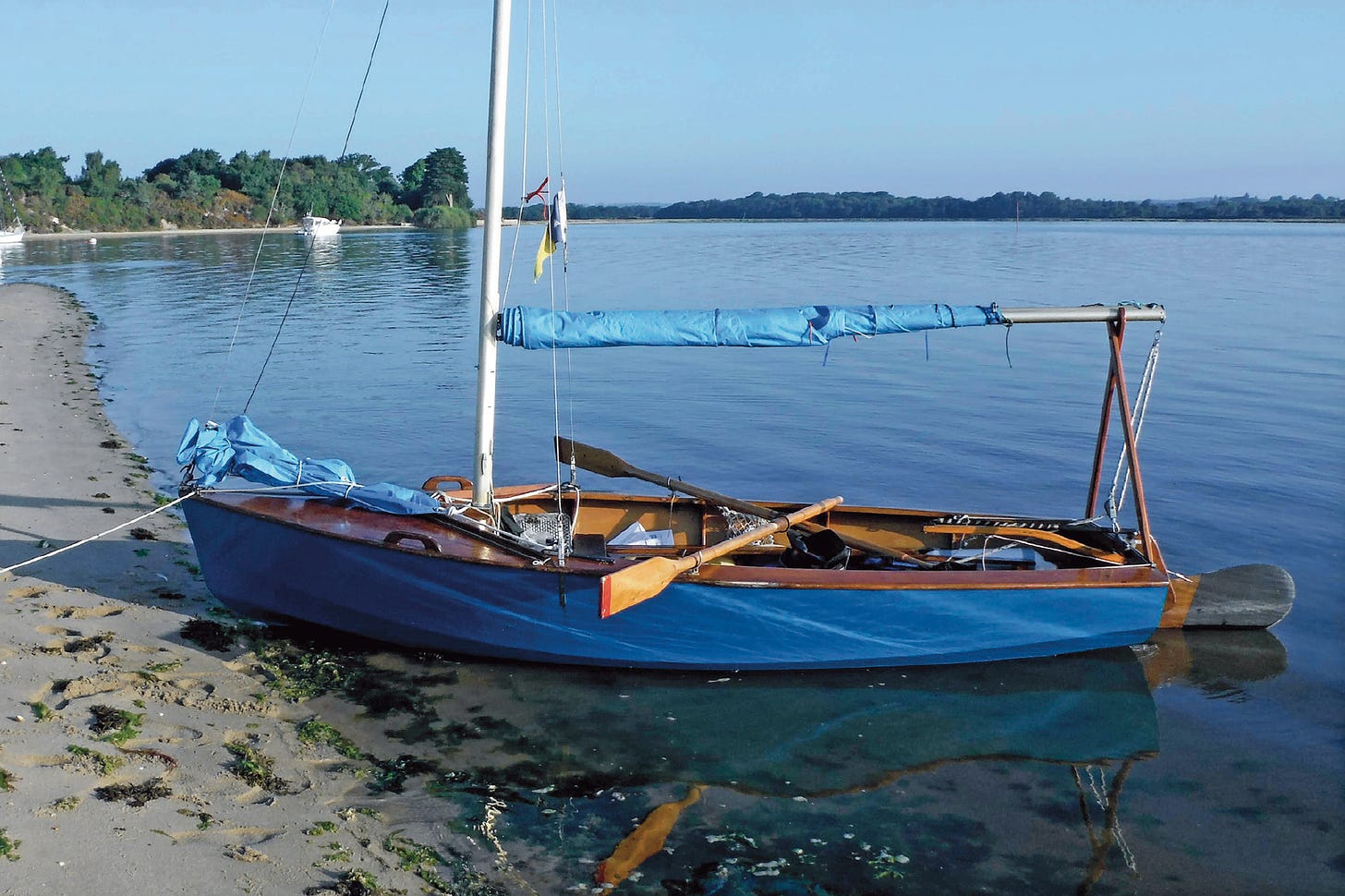
Oars . If there is no wind to sail you will need at least a paddle, and oars are better. Mine are home-made from softwood. I have a moveable rowing thwart otherwise I would have to sit on the centreboard. Some carry an outboard, petrol or electric.
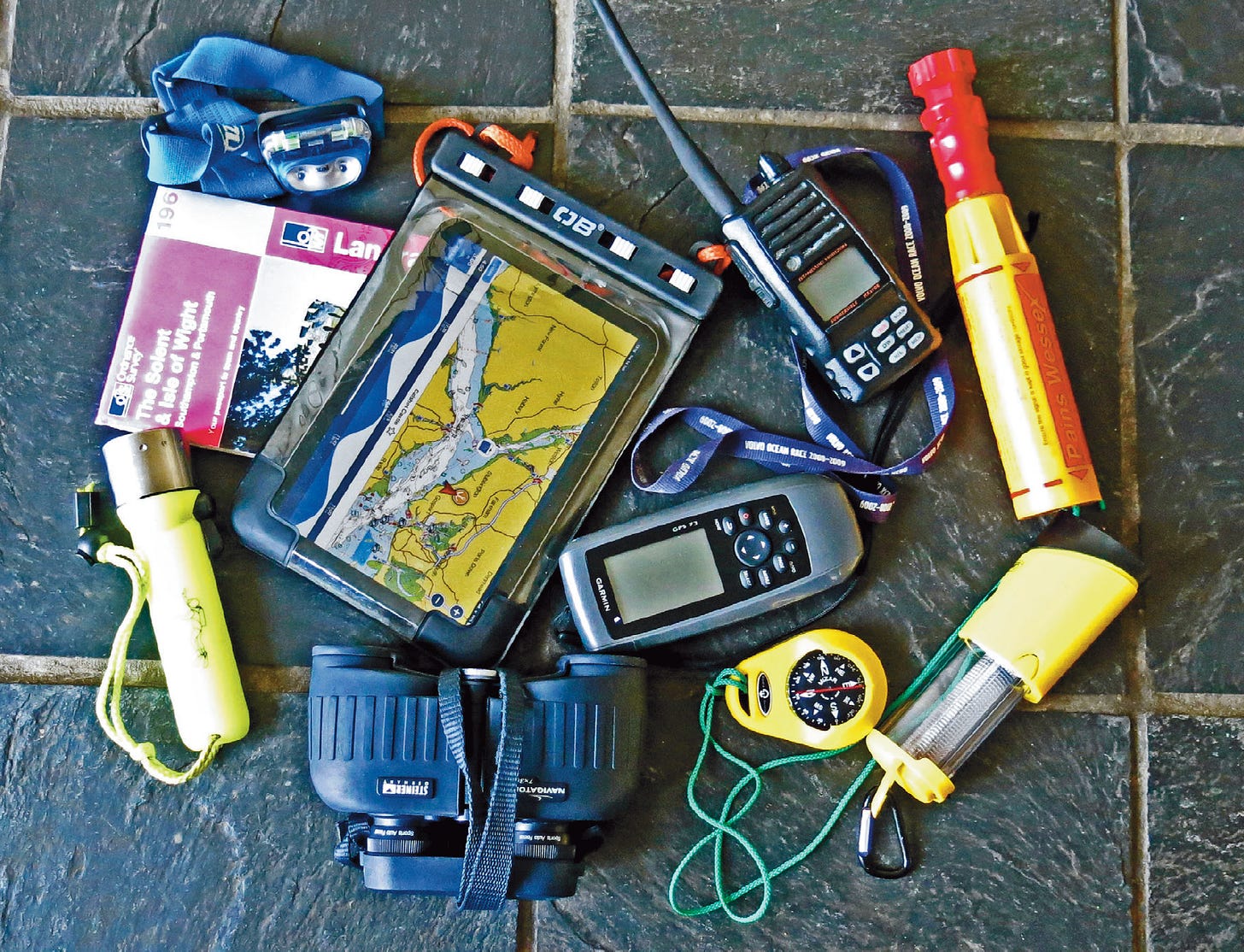
Navigation Gear. This shows some of the safety and navigation gear I carry. You won’t necessarily need all these items. I use the binoculars mainly for boat watching and spotting other DCA members. For navigation they are useful to identify buoyage, harbour entrances, etc.
I rarely carry the iPad when sailing the Solent area, which I know well. My phone is also loaded with Navionics charts if I need them. I always have an Ordnance Survey map of the area, which is more useful in a dinghy than it would be in a yacht.
Lighting. An anchor light used when overnighting anywhere other vessels can navigate, plus torch, lantern and/or head torch.
GPS is not essential for inshore sailing unless you are unlucky enough to be out in fog, which should obviously be avoided. I find it useful to know my speed over the ground, which can be difficult to judge on open water.
For coastal sailing a VHF radio is still the best way to get assistance at sea. Occasionally it can be used to call up other DCA members or a harbourmaster. A radio licence is needed through the RYA. A flare; mine is out of date and should be replaced. I'm not sure how many dinghy sailors carry these, but if you need help an orange smoke flare will effectively identify your position. Compass sounds like an obvious thing to have and I always carry one – but I rarely use it. I did check it recently to identify the entrance to Newtown Creek.
Setting up your boat for cruising and acquiring the right kit can take years to get right, as things can always be improved and you, like me, may find it an ongoing and absorbing process.
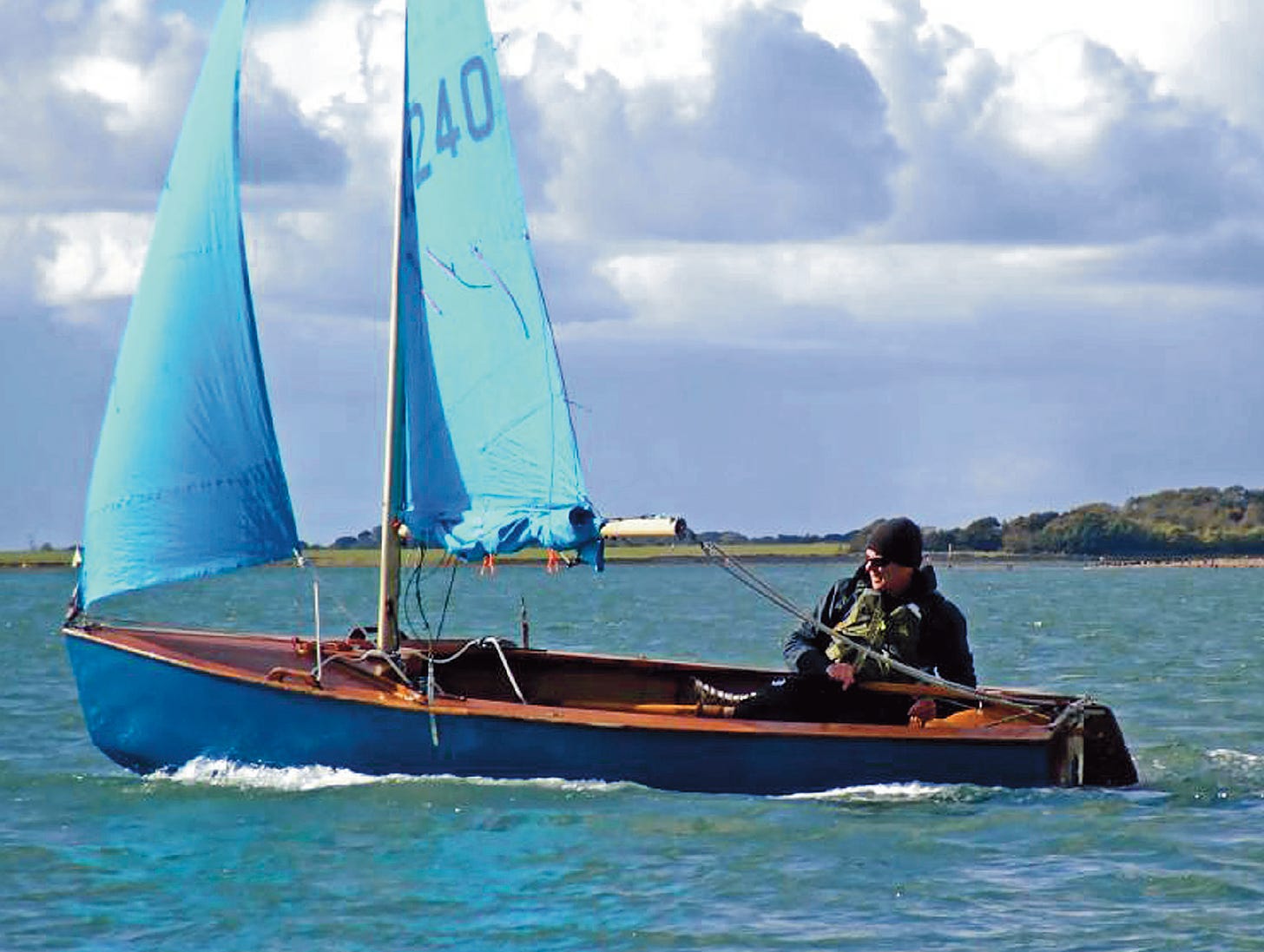
Steve seen in his Enterprise during a recent blowy South Coast meeting.(Photo taken by Alan Moulton, South Coast Area Secretary; all other photographs taken by Steve Bradwell )
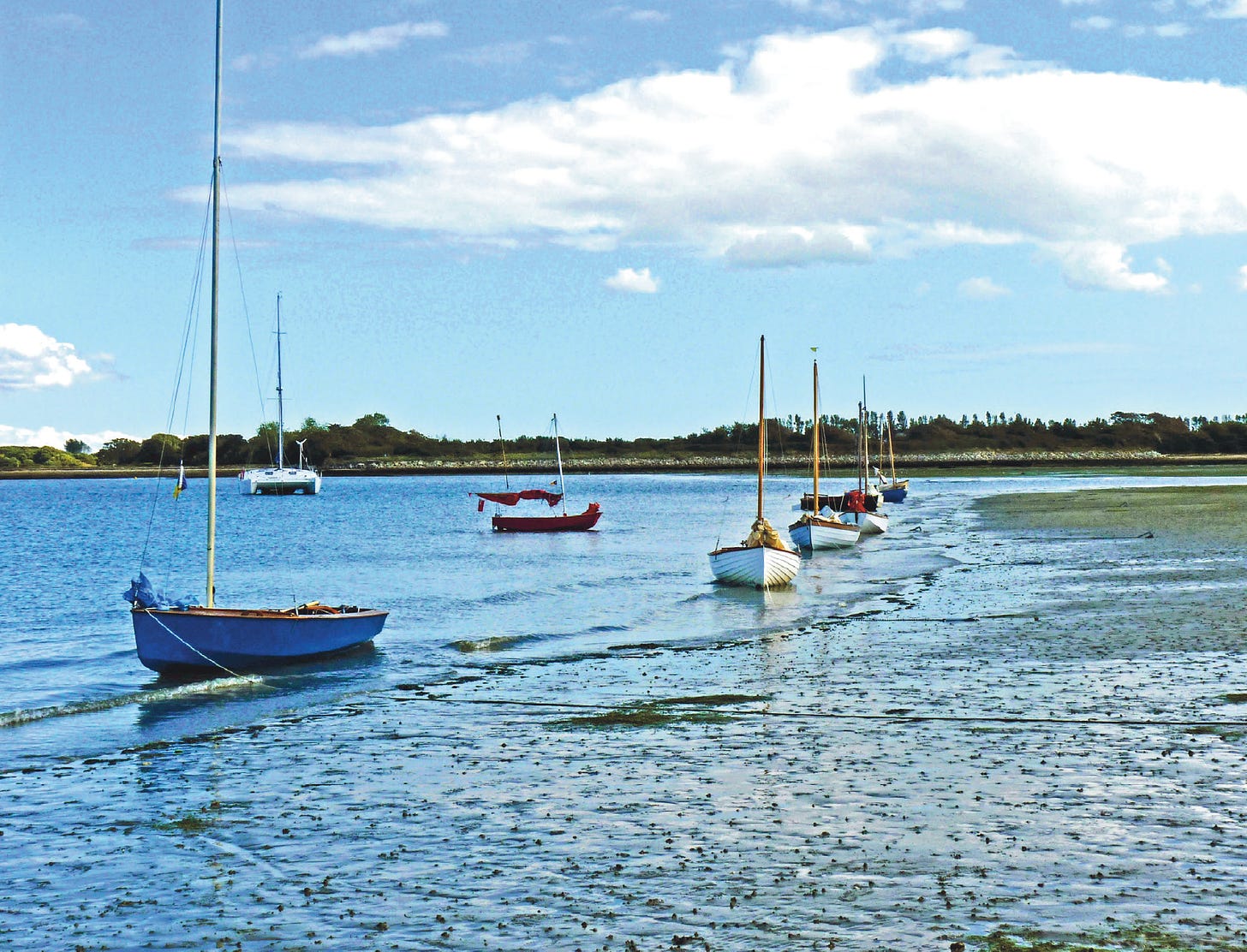
Steve and his Enterprise are seen with other South Coast members at most of their rallies. In this case it is a recent East Head meeting, in Chichester Harbour. The DCA fleet is moored together in line with his Enterprise on the left.
Small Craft Advisor is a reader-supported publication. To receive new posts and support our work, consider becoming a paid subscriber.
Ready for more?
- BOAT OF THE YEAR
- Newsletters
- Sailboat Reviews
- Boating Safety
- Sailing Totem
- Charter Resources
- Destinations
- Galley Recipes
- Living Aboard
- Sails and Rigging
- Maintenance

Dinghy Storage on a Sailboat
- By Dan Spurr
- Updated: August 28, 2020
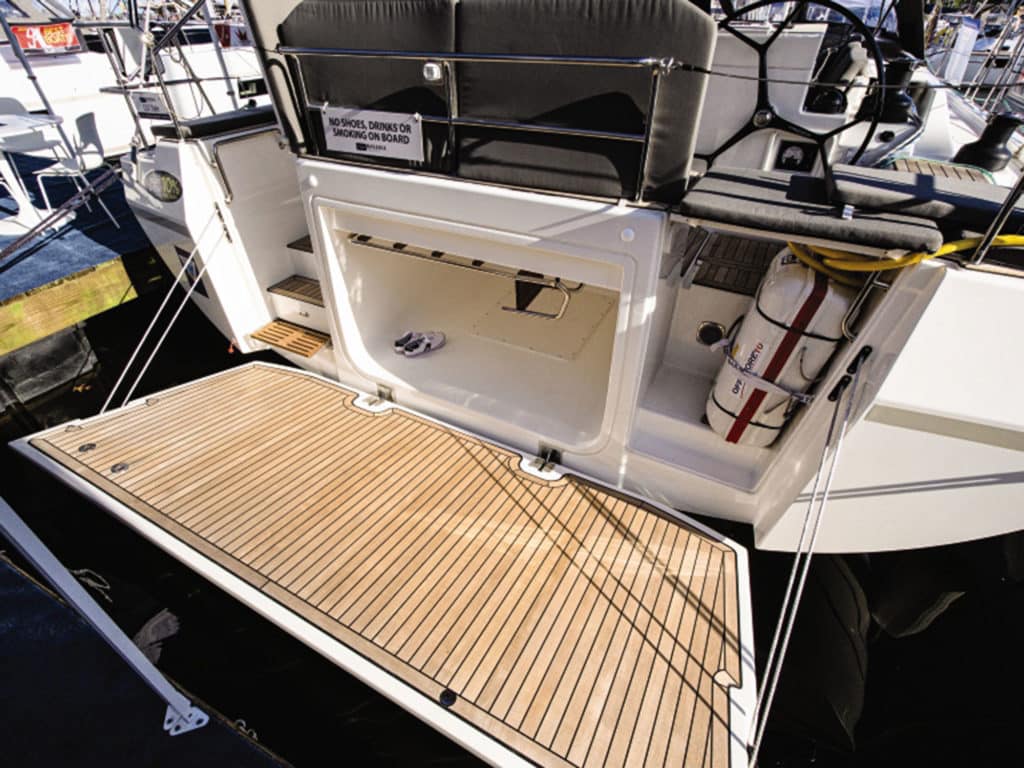
During this past October’s Boat of the Year competition at the US Sailboat Show in Annapolis, Maryland, the judges became quite familiar with the concept of “garages.” That is, a large stowage area under the cockpit for dinghies as long as 10-plus feet, as well as hard-bottomed RIBs with sizable outboard motors, and even consoles. They are accessed by fold-down doors or transoms that double as swim or launch platforms. During our evening deliberations, we three BOTY judges —Ralph Naranjo, Ed Sherman and me, along with CW editors Mark Pillsbury and Herb McCormick—began to speculate what other developments in carrying dinghies might have emerged alongside this particular innovation.
At the risk of being anticlimactic, the best answer is: none.
The other options, beyond the garage, are familiar, but there is not one unanimous choice that suits all sailboats. The decision tree begins with the mothership, and the best choice is dictated mostly by its size and design. So if you haven’t bought your cruising sailboat yet, eye each candidate with its suitability for carrying the dinghy . But if you’re committed to your current boat, you’ll have to make do.
This maneuver is OK for sheltered waters but not advisable in rough conditions, even on coastal forays. There must be a provision for securing the dinghy out of the water. If it fills with water, you might have to cut it loose before it endangers your boat. Losing a dinghy is painful.
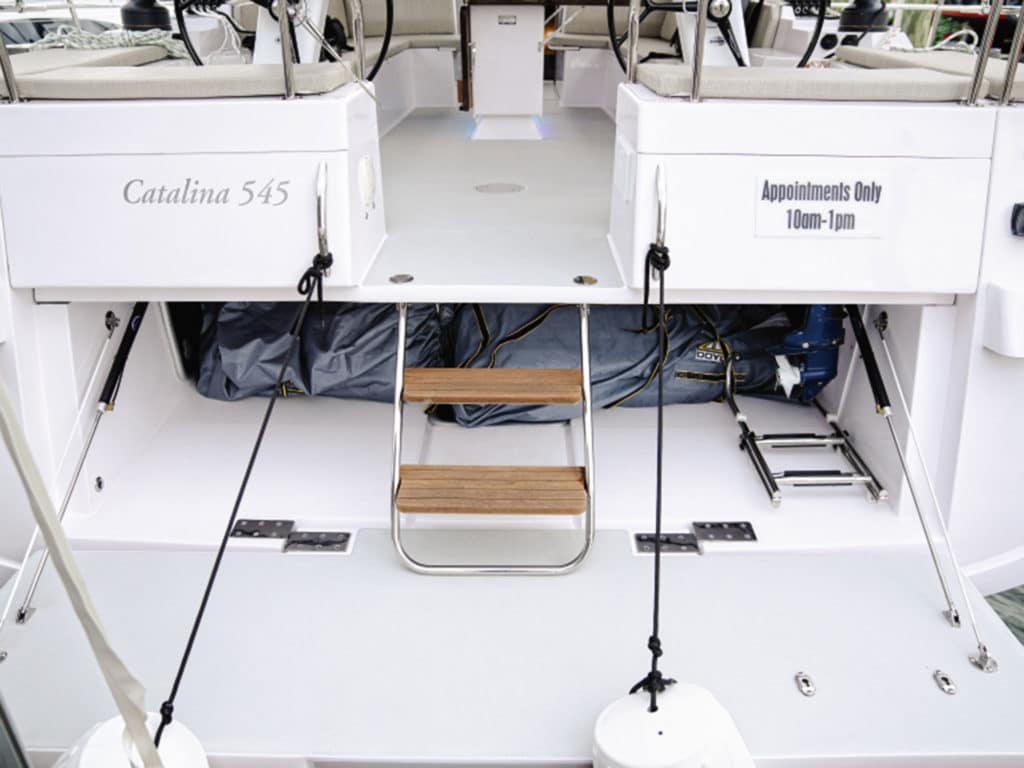
Select the painter wisely. While it would be ideal if it floated, common polypropylene quickly degrades in the sun. Three-strand or braided nylon is strong and durable. Beyond capsize or filling with spray or rainwater, a third risk is having the painter foul the propeller. Years ago, while entering Chesapeake City harbor, we ran aground. Instinctively I threw the transmission into reverse and turned to wave off the boats following us. Minutes later, while looking for alternative places to anchor, I noticed that the dinghy was gone. We expected to find it adrift, but no such luck. Then we saw it, totally submerged half under the boat. Yep, the painter fouled the prop, which yanked it underwater. What an idiot! Worse, the dinghy’s bow eye smacked a prop blade, bending it badly. The lesson? Shorten the painter for tight maneuvers.
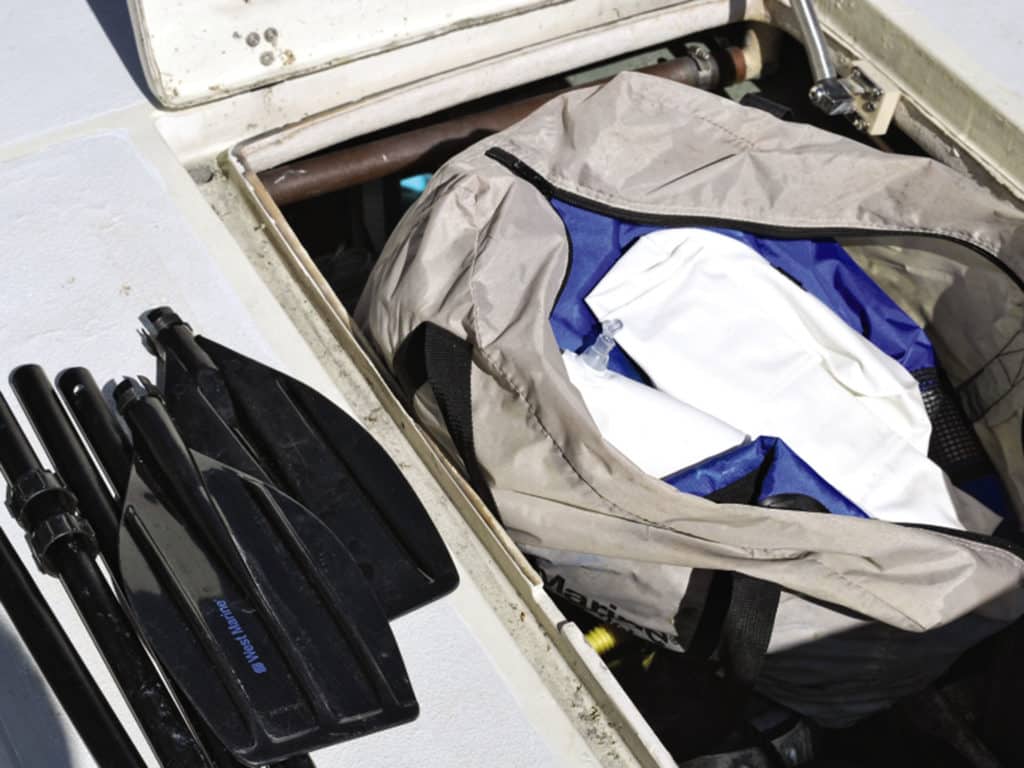
If your tender is inflatable, it might be possible to deflate it to stow in a locker (this rules out RIBs, whose fiberglass or aluminum hulls won’t fit in the lockers of most boats). The one-time commodore of the Ida Lewis Yacht Club in Newport, Rhode Island, to which I once belonged, did this on his Wanderer III replica/sistership.
During one club cruise, upon arrival at an anchorage, I watched from our boat as he retrieved his deflated dinghy from a seat locker, laid it out in the cockpit, and began to inflate it with the familiar foot pump. It took perhaps 10 minutes or so. A 12-volt electric pump would’ve sped up the process. When finished, he tossed it over the side, secured the painter, helped his wife board, and then rowed ashore.
Granted, range in such a dinky dink is severely limited; this skipper eschewed even a small outboard, and inflatables do not row well. But in the right location, it is a means of getting ashore.
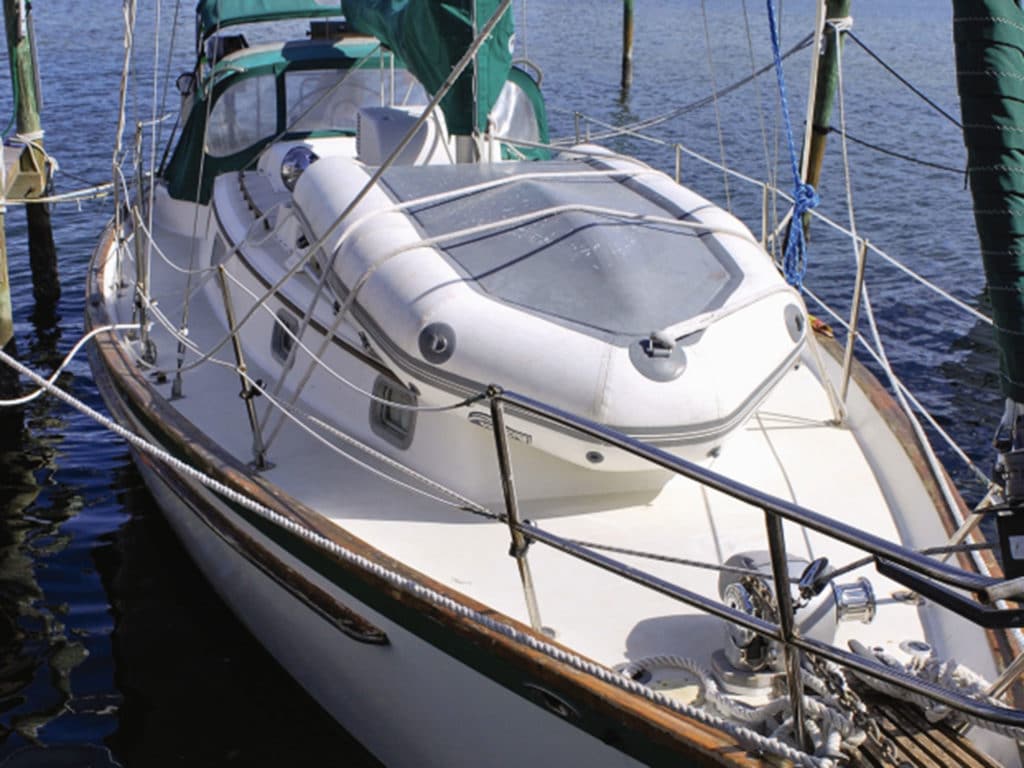
Lashing down a dinghy on deck has long been a go-to option on many cruising boats. It’s dependent on having adequate space available between the mast and cockpit enclosure (dodger or windshield) or between the mast and foredeck. The latter is less preferred, and both require that sail- and boat-handling functions, such as reefing and anchoring, are not compromised.
In this instance, you need to figure out a means of deploying and retrieving the dinghy beyond picking it up with brute strength and flinging it over the side. A four-point bridle with a lift point at the center of gravity enables lifting more or less horizontally. For mechanical advantage, a halyard led to the lift point on one end and to a mast winch at the other will generally get the job done; the main difficulty is pushing the dinghy outboard over the water. A helper on the side deck, perhaps aided by a boat hook, will make the job easier and hopefully avoid a messy situation.
Minutes later, we noticed the dinghy was gone. Yep, the painter fouled the prop, which dragged it underwater.
The dinghy can be secured by multiple wraps of line to handrails port and starboard. Tighten well or use ratchet straps. Oars can be tied in as part of this package, along with an outboard motor set on the familiar rail mount. If it’s too heavy to hand down to a waiting dinghy in the water, consider an outboard-motor lift installed at the stern that employs a block and tackle to safely lower and raise the outboard off and onto its adjacent mount.
Ah, davits. While davit hardware is somewhat expensive, this is a good option for coastal cruising. It is much safer than towing, and compared with lashing on deck, greatly simplifies launching and retrieval. If the boat has a swim platform, as more modern boats now do, it also simplifies getting in and out of the dinghy. Climbing down a transom ladder works too. And it’s usually OK to keep the outboard mounted on the tender’s transom, avoiding the often-tense business of lowering the motor from the deck to the dinghy.
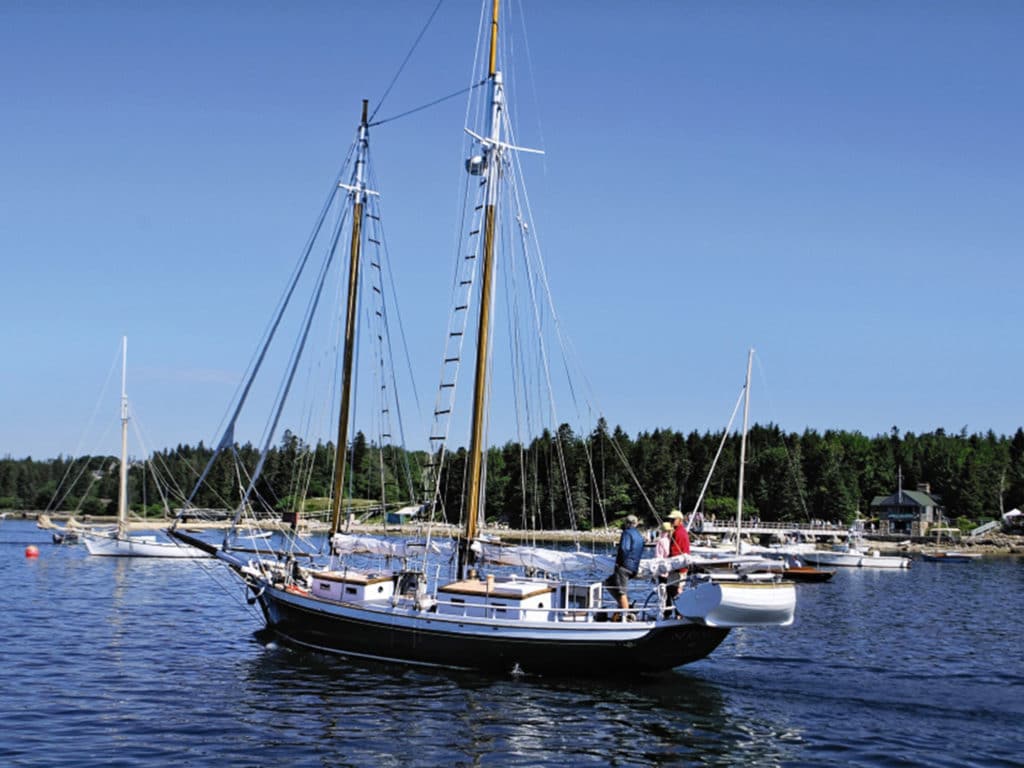
However, large breaking seas could rip off the dinghy and mangle the apparatus, possibly jeopardizing the big boat. And when docking, remember you’ve got baggage back there and don’t want to snag it on something, or bash a piling or other boat.
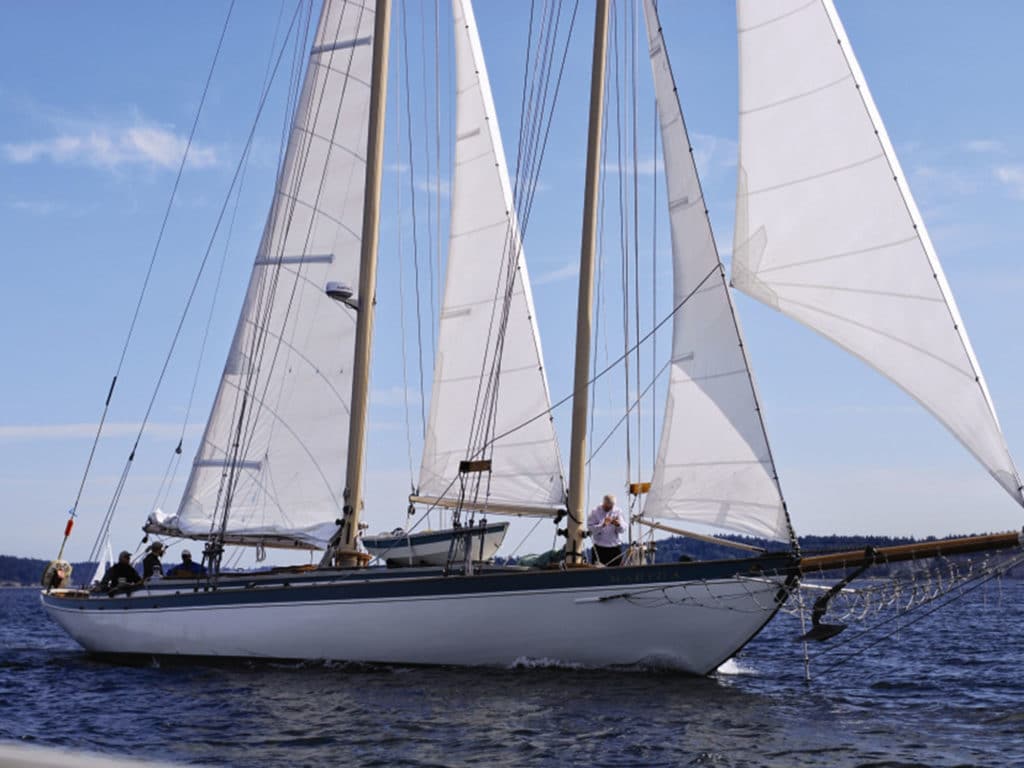
There is variety in the design of sailboat davits; for heavy loads, they mount on the afterdeck or transom, well reinforced below. With loads up to around 350 pounds, there are systems that can be mounted on a sturdy stern rail, and even kits to reinforce the stern rail.
Some large traditional sailboats, such as schooners and windjammers, carry a shore launch in davits above the midship deck, but this won’t be a viable solution for most cruising sailboats.
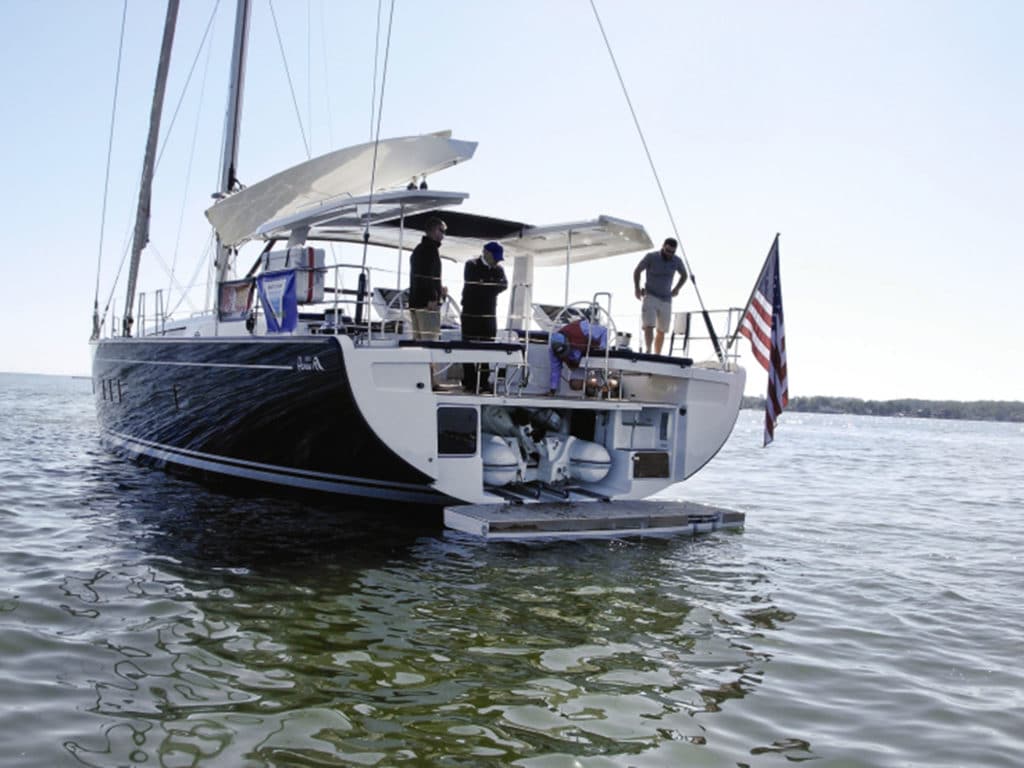
We’re back where we started, with the dinghy garage that was so popular in the 2020 BOTY competition. With so many larger boats carrying max beam aft to the transom, some designers and builders are incorporating the so-called garage for even fairly large RIBs with steering consoles under the cockpit floor, as mentioned. This is probably the safest, most secure way to carry a dinghy. Big boats such as the Hanse 675 and others employed garages with a variety of enclosure systems, most hydraulically activated. Sliding cradles that facilitate launching and retrieval with handheld controllers mean you don’t have to risk slipping a disc trying to grunt the beast aboard. Pretty slick! This isn’t something you could retrofit to an older design, but if you’re in the market for a new boat, it’s a feature well worth investigating.
Yachting journalist Dan Spurr has stowed dinghies on a long line of cruising boats he’s owned, ranging from a 28-foot Pearson Triton to a powerful Tartan 44.
- More: dinghy , How To , print aug sept 2020 , tender
- More How To

How To Prioritize Your Sailboat’s Spring Checklist

How to Protect Your Spars from Corrosion

Sailing Totem Refit Series: The Forward Head Makeover

Fatty Goodlander: Dealing with Chafe While Cruising

TradeWinds Debuts 59-foot TWe6 Smart Electric Yacht

Good Bread for Good Health

Center of Effort
- Digital Edition
- Customer Service
- Privacy Policy
- Email Newsletters
- Cruising World
- Sailing World
- Salt Water Sportsman
- Sport Fishing
- Wakeboarding
fast catamaran boats for sale
32' DCB F32 Open Bow

21' Eliminator Daytona

28' Eliminator Fundeck

31' Eliminator 31 XO Speedster

25' 1992 2017 Talon T25

39' MTI 390X Carbon

36' Eliminator Speedster


32' Ocean Express 32 Tournament CC

28' Vector V28

29' World Cat 295DC

18' Talon 18

26' Nordic deck boats

36' Nordic Hurricane

27' Eliminator Daytona 27ICC

28' Doug Wright Designed Fat Cat DW28

35' DCB M35

20' Sanger Alley Cat

28' Howard 288 Sportdeck

The 8 Fastest Cruising Catamarans (With Speedchart)
As an Amazon Associate, we earn from qualifying purchases. We may also earn commissions if you purchase products from other retailers after clicking on a link from our site.
Cruising catamarans are some of the most comfortable boats to roam the water, making them fantastic for both long-term voyages and short-term vacations. Still, cruising catamarans can be great racing boats, but just how fast can they go?
Some of the fastest cruising catamarans include the Gunboat 68 (35 knots), Outremer 45 (25 knots), ORC50 (25 knots), FastCat 435 (20 knots), TS 42 (35 knots), and Lagoon 440 (20 knots). Yet, there are many more cats that can reach 35 knots safely.
If you are interested in knowing about the fastest cruising catamarans, I have you covered. I will be discussing some of the most popular, fastest cruising catamarans and the features that make them so excellent for sailors in need of speed. You will learn more about each catamaran’s speed and amenities, and I will let you know a trick or two to maximize your speed under sail.
How Fast Are Cruising Catamarans?
On average, cruising catamarans can reach top speeds of 15 knots , around 17.3 mph (27.84 kph). However, some exceptional, racing-designed cruising catamarans can reach up to 30+ knots in the right wind conditions.
When you want to better understand catamaran hull characteristics, I suggest the book Catamarans a Complete Guide (amazon link) by the president of Aeroyacht catamarans and that you check out my article Why catamarans capsize .
Factors That Impact Speed
Weight & size.
When you consider a catamaran’s speed, you will need to keep in mind the boat’s weight and narrowness. A vessel that can travel at 15 knots will still move slower if the boat is heavy or has a wide, extensive hull. When increasing the total weight of the boat, the boat “sits” lower in the water, thus increasing water drag and reducing speed.
Why trimarans are faster than catamarans!
Now that we know how weight impacts sailing characteristics, it follows that; if you are planning on racing your catamaran, you should remove as much luggage or extra gear as possible. Eliminating as much weight as possible will help you travel at your cat’s maximum speed .
Narrow Hulls
The hydrodynamics of the ship will heavily affect your speed. Narrower boats can chop through the water with less effort, making slender ships with pointed hulls far faster than wide vessels. So if you are looking for the fastest one available, you should look for a slender hull.
Slim hulls vs. space is a common tradeoff for catamarans optimized for family sailing .
Wind will also affect your ship’s speed, so do not expect your cruising catamaran to reach the maximum speed without heavy wind. Generally, cruising catamarans have two large sails (at least) to power them through the water, and some are so efficient that they can travel even faster than the wind.
Although a strong wind is needed to energize the sails and move the boat, too much wind will instead make the sails less efficient, and maximum speed is most often attained at lower wind speeds but with flat water.
Light Weight Materials
Faster cruising catamarans are often made from carbon fiber materials and fiberglass to keep the weight down. If you are looking for the quickest catamaran that you can find, you should note the materials that the ship is made out of and try to get one that is primarily made from carbon, glass, and resin materials.
While you are looking for the perfect catamaran for you, you should keep in mind what you NEED and what is NICE with your ship. Usually, this decision is between size and speed, but some of these excellent vessels have both.
Lightweight materials are usually costly; for example, a carbon fiber mast will probably cost you +$20 000, depending on the cat’s size.
I have written a buyer’s guide that explains the concept of NEED vs. NICE , which will make choosing the right boat faster and more accurate.
Gunboat 68 (+35Kts)
Gunboat 68 is a cruising catamaran designed to reach the highest speeds possible. Made by Gunboat, the ship uses Grand-Prix racing boats’ designs to develop the speediest cruising catamaran on the market.
Gunboat 68 is made entirely from carbon composites, which keeps the ship lightweight and fast. Gunboat 68 is the perfect catamaran for anyone who wants to reach the highest speeds possible while maintaining control of the vessel and not bouncing around too much.
Gunboat 68 has comfortable, spacious living quarters, though it also has a spacious deck with luxurious seating. Indeed, this cat has it all, making it one of the best cruising catamarans for racers and casual sailors. The design maximizes all of the living spaces and uses lightweight materials to add elegance and luxury to a speedy racing catamaran.
Gunboat 68 is one of the fastest cruising cats out there, with its maximum speed at more than 30 knots . Gunboat 68 can achieve these fast speeds, thanks to its lightweight construction and narrow hull design.
Still, Gunboat can customize your ship’s plan to accommodate your needs. Whether you are looking for a faster, more lightweight boat with a more extensive sail or a more comfortable cruiser, Gunboat 68 is an excellent option for you.
Specifications
- Maximum Speed: 35 knots
- Length: 68 ft (20.75 m)
- Beam: 29.9 ft (9.1 m)
- Draft: 3.9 ft (1.2 m) board up and 9.84 ft (3.8 m) board down
- Displacement: 23.7 tonnes
TS 42 (ORC 42)
The TS, or Tres Simple , cruising catamarans, designed by Marsaudon Composites, are some of the fastest cruising catamarans in the world.
Marsaudon developed the ship’s plans using racing boats’ streamlined designs and combined them with a cruising catamaran’s comfortable living spaces. The TS 42 has an inverted hull which helps it glide on the water swiftly without requiring much fuel, but it also has a spacious below-deck area with plenty of luxuries.
TS cruising catamarans are often considered the fastest cruisers on the market, with their speed comfortably reaching upwards of 35 knots in the right wind conditions. Generally, TS catamarans can sail at 20 knots, even with moderate wind. They are the perfect catamaran for racers and high-speed travelers, and yet they still have the amenities of a pleasant live-in vessel.
The TS 42 has a large galley and comfortable cabins, making it a cozy home or vacation vessel. With multiple bathrooms, large windows, and open lounge spaces, these catamarans are superbly comfortable to live in.
The deck and cabin space are divided by a large, openable window, which adds extra light and ventilation to the living areas. It also has plenty of on-deck space, which is rare in such a small vessel with an inverted hull.
If you think I’m using too many confusing nautical terms, you’ll find all the answers on my Catamaran parts explained page .
- Length: 42.8 ft (13 m)
- Beam: 24.3 ft (7.4 m)
- Draft: 4.9 ft (1.5 m) with boards up and 7.5 ft (2.3 m) with boards down
- Displacement: 5.8 tonnes
Outremer 45
Based in France, Outremer (pronounced uutremeer 😉 ) designed their Outremer 45 to be a long-lasting cruising catamaran that sails smoothly at high speeds. The Outremer 45 can reach about 15 knots, but the most comfortable sailing speed is 10 knots. However, it can travel up to 25 knots in the right wind conditions, making it a quick ship with all of a perfect cruising catamaran’s luxuries.
It is made for durability from carbon, vinyl ester, and divinycell so that it can last many years without repairs. The Outremer 45 has a narrow hull, and it is designed to be as thin as possible to maximize speed and fuel efficiency. Outremer 45 still has comfortable living quarters with large windows and lounge spaces within the boat. Indeed, it sacrifices no comfort for speed.
In this article, I talk a lot about catamaran characteristics, both interior and exterior, if that’s something you want to better understand, then I recommend an article where I write about trade-offs in design choices .
The Outremer 45 was initially designed to be a boat that would last 50 or more years, and it excels in its durability. It has an open, uniquely expansive side deck and plenty of on-deck conveniences that make sailing a breeze in the ORC50.
With supreme safety features such as tall railings, slip-free grips on deck, and enclosed lounge spaces, it is one of the safest catamarans available (is safety your top concern? I wrote a list of the safest catamarans on the market).
- Maximum Speed: 25 knots
- Length: 48 ft (14.6 m)
- Beam: 23.3 ft (7.1 m)
- Draft: 3.3 ft (1 m) with boards up and 6.7 ft (2.04 m) with boards down
- Displacement: 8.2 to 11.1 tonnes
Marsaudon Composites ORC50
Marsaudon Composites designed the ORC50, or Ocean Rider Catamaran 50, with both speed and comfort in mind. The ORC50 can be used for cruising, but it is also a great racing boat that has been awarded honors from many races worldwide.
Marsaudon borrowed designs from racing skippers to plan the ORC50, bringing together a cruiser’s comfort with the speed of an award-winning racing boat.
This cruising catamaran is lightweight, which allows it to gain speed at a fast rate, but still has comfortable living quarters inside the boat. It has a rotating carbon mast, which helps to eliminate turbulence over the mainsail and therefore increasing sail efficiency and speed!
With strong winds, the ORC50 can reach up to 23 knots , making it extremely fast for a cruising catamaran. The ORC50 can easily reach speeds much faster than the wind speed, which is a unique quality of this fast, yet comfortable catamaran.
The ORC50 is an excellent long-term living ship with its many organizational compartments, expansive galley, and well-ventilated sleeping cabin. It also has plenty of couches and seating areas built into the boat, and its intuitive design adds plenty of comfort to the cruising catamaran without weighing down the ship.
- Length: 50 ft (15.23 m)
- Beam: 27 ft (8.2 m)
- Draft: 5.6 ft (1.7 m) with boards up and 8.9 ft (2.7 m) with boards down
- Displacement: 13 tonnes
FastCat 435
African Cat’s catamarans, including the FastCat 435, are designed for speed and racing. This ship is mainly composed of epoxy, fiberglass, and carbon components, making it very lightweight to ensure that it travels as swiftly as possible.
The FastCat 435 may be as light as possible, but it is durable enough to last for many years in the most extreme conditions.
The FastCat 435 has comfortable living quarters and well-designed comfort spaces so that you can get the most out of your trips. The FastCat also has a green hybrid design, and it uses primarily electric power, which can help you prolong your sailing and use less fuel.
I find solar-powered/electric cats pretty exciting, so much so that I wrote an entire article called The Best Solar-Powered Catamarans on the subject.
The FastCat is an excellent option for anyone who wants a smaller cat with a comfortable design and incredible speed. FastCat’s electric power is also a unique, favorable feature for anyone who wants to use less fuel.
- Maximum Speed: 20 knots
- Length: 42.7 ft (13 m)
- Beam: 24.4 ft (7.4 m)
- Draft: 3.9 ft (1.2 m) with boards up
- Displacement: 2.4 tonnes
The Lagoon 440 cruising catamaran, like the FastCat, has an electric powering version, which cuts down on fossil fuel usage and ensures that your ship will keep moving. The Lagoon 440 is also among the easiest catamarans to maneuver, thanks to its electric drivetrain and automatic engines.
The speed of the Lagoon 440 usually maxes out at 10 knots with low winds, but with higher winds, it can quickly gain speeds up to 20 knots (some argue even higher, but I’m doubtful). The Lagoon 440 is an excellent cruiser and comfortable catamaran, but it is not an all-out racing cat.
Lagoon is a well-known brand, but there are some caveats, and are Lagoons still making good catamarans?
Below the deck, the living spaces in the Lagoon 440 are magnificent. The ceilings are high, allowing the tallest of passengers to stand in the cabin. The many storage compartments and furnishings have a modern, elegant design. The interior is one large primary cabin with a few private spaces below the deck.
- Length: 44.6 ft (13.6 m)
- Beam: 25.3 ft (7.7 m)
- Draft: 4.3 ft (1.3 m)
- Displacement: 10.5 tonnes
Fountaine Pajot Astréa 42
Fountaine Pajot designs some of the most luxurious yet speedy cruising catamarans available in the world. They are renowned for their safe, durable designs that make sailing a comfortable, relaxing experience. And on a personal note, i think the name sounds beautiful!
Their cruising catamarans use an inverted hull design that has become a signature mark of Fountaine Pajot vessels. This hull type allows the water to pass beneath the ship quickly, which increases the speed and fuel efficiency of the cat.
The Astréa 42’s primary benefit is its spacious, comfortable living quarters and large, open deck spaces. The ship’s interior spaces have large windows, large lounging areas, and plenty of storage compartments.
The cabin’s ventilation is also excellent, which reduces the classic musty smells of sea living. You can also get two different models of this catamaran, either in a one-cabin option or a two-cabin option, making it an excellent vessel for larger or smaller families.
The Astréa is ideal for long-term sea living and family vacations (it is not as fast as some more racing-oriented cats). Although the Astréa is not the speediest cat available, with its speed maxing out at about 10+ knots, even in favorable wind conditions, its luxurious atmosphere and comfortable cabin spaces make up for its relatively slow speed.
Don’t get me wrong, despite its lower speed compared to the boats on this list, the Astréa 42 can still get you places quicker than many other cruising catamarans (and most monohulls). So, if you want all of the elegance and comfort of a cat and are not too worried about racing, this ship is an excellent option for you.
- Maximum Speed: 10 knots
- Length: 41.3 ft (12.6 m)
- Beam: 23.6 ft (7.2 m)
- Draft: 4.1 ft (1.3 m)
- Displacement: 12.3 tonnes
Privilege Signature 510
The Privilege Signature 510 is a long-distance cruising catamaran designed for long-term voyages and sailing in extreme weather conditions. It features a durable, weatherproof design that will protect you from rainy and cold weather while sailing.
The helm and living spaces are completely covered, making it safe to live in, even in cold or stormy weather. It also has an automatic sail adjustment system with the controls at the helm, allowing you to make any adjustments from the helm’s safety and comfort.
Privilege Signature 510 also has an elegant, well-designed living space with plenty of amenities, including an accelerated cooling system, a spacious bathroom and kitchen, and plenty of windows for natural lighting.
With an elegant floor plan, this cozy ship is perfect for long-term living.
The Privilege Signature is not the fastest catamaran on the market, with a maximum speed of around 13 knots. Still, it is one of the quicker cats considering its elaborate amenities and comfortable size.
- Maximum Speed: 13 knots
- Length: 50 ft (15.24 m)
- Beam: 26 ft (7.98 m)
- Draft: 5 ft (1.57 m)
- Displacement: 25 tonnes
Although cruising catamarans are great boats for slowly cruising along the water, they can also be swift, substantial racing boats that reach speeds of up to 35 knots. These speedy cruising catamarans still come with all of the amenities of leisure boats, but they also reach incredible speeds without rocking or tossing.
Owner of CatamaranFreedom.com. A minimalist that has lived in a caravan in Sweden, 35ft Monohull in the Bahamas, and right now in his self-built Van. He just started the next adventure, to circumnavigate the world on a Catamaran!
Leave a Reply Cancel reply
Your email address will not be published. Required fields are marked *
Save my name and email in this browser for the next time I comment.
Recent Posts
Must-Have Boat Gear for Catamaran Sailors!
Sailing is probably the most gear-intensive activity I've ever done; there are so many decisions to be made about what gear to buy now, for tomorrow, and what to definitely never buy. The gear on...
6 Best Trailerable Trimarans For Bluewater and Coastal Sailing
Having a boat costs a lot of money, even when you are not using it, marina fees, etc. And once it is in the water most sailors never go very far from their "home marina" and sailing will be somewhat...
- In the News
- Speed On The Water Videos
- Racing Reports
- Countdown To The 2024 Miami International Boat Show
- Coverage Of The 2023 Lake Of The Ozarks Shootout
- Coverage From The 2023 Key West Poker Run And Offshore World Championships
- Image of the Week
- Safe Boating
- New Products
- Featured Boat
- Latest Projects
- Year in Review Print Magazine
- Subscriber Login/Logout
- Subscribe to SOTW Magazine
- Buy Single Digital Mag Issues
- Magazine Archives
- Magazine Features
- Events Calendar
- Advertising Information
- Article Plaques
- Industry Partners

Fast Boats For Sale

Featured Boat: 2023 MTI 390XR Catamaran

Skater At 50—One Monster Of A Build

Featured Boat: 2019 Outerlimits SC 46 Catamaran—Jet

Featured Boat: 2020 Skater 50 Catamaran

Featured Boat: 2023 Adrenaline 47 Reaper

Featured Boat: 2006 Outerlimits 42 Legacy – The American

Featured Boat: 2020 Outerlimits SC 46 Catamaran

Featured Boat: 2007 Active Thunder 33 Evolution

Featured Boat: 2017 Cigarette 41 GTR Center Console

Featured Boats: 2024 Sunsation 32 CCX Center Consoles

FastCat14™ Catamaran
Inflatable boat, about the fastcat14™ catamaran inflatable boat.
The FastCat14™ can be rolled up and packed away for easy storage. However, because of its incredibly large super fun-size deck space designed for sunning, swimming, snorkeling, scuba diving, filming, fishing, picnicking, and all-around fun-filled days on the water - it's best used for extended days on the water and/or with a lightweight 18-foot bunk trailer with 12-inch high adjustable bunk risers.
The FastCat14™ is a rugged, dependable, rigid, high-pressure, all-drop stitch constructed, rapid self-bailing, four-person, inflatable catamaran boat that provides exceptional deck space, "The Smoothest Ride On The Water", and is the perfect boat for family fun time!
Welcome to the future! Made from a LIGHTER, STRONGER, and EVEN MORE PACKABLE fusion drop stitch technology. Due to the latest technological advancement in double-layer, high-pressure, all-drop-stitch, fusion technology, the FastCat14™ is incredibly strong and much easier to fold and pack up. The future is here - order yours today!
About the FastCat™ Series
Don't purchase or consider another boat without checking out the new and incredible Sea Eagle Inflatable FastCat™ Catamaran Boat for the smoothest ride on the water and sale prices!
Tired of being bruised up and bounced around by waves, back jarring rough rides, added fuel cost, and lack of cockpit room? The new Sea Eagle Inflatable FastCat™ Catamaran Boat is the solution to all these problems and more!
This catamaran-style, rigid, high-pressure, all-drop stitch constructed, easy to set up hull is the most innovative boat to hit the market! The catamaran hull design lifts the boat up and on top of the water as if you're riding on pillowy clouds with hydro foiling shock absorbers preventing the slapping of traditional hulls. Friction is reduced, increasing fuel economy, and with four independent high-pressure safety air chambers, you're guaranteed added safety.
The Sea Eagle FastCat™ inflatable catamaran series will entirely change the way you view inflatable boats!
Certifications, deflated hull size, when deflated and packed well, this hull will fit in:.
check_circle Backpack
check_circle Car Trunk
check_circle SUV
check_circle Truck/Large SUV
Standard Features
- NMMA & CE Certified
- Catamaran hull design provides the smoothest ride on the water
- All rugged, high-pressure, reinforced, drop-stitch construction
- Completely self-bailing
- 4 Independent safety air chambers
- 10 Conveniently located grab handles
- Dual Quik-Cinch EZ-attachment seating system
- Removable transom for easy storage
- Heavy-duty bow ring
- Non-slip EVA foam covered deck
- Canopy attachment system (for optional sun/rain canopy)
- Dual Universal Scotty Pads for use with optional Scotty accessories
- Bottom and side protective bumper guard rubbing strakes
- Rear D-ring attachment points for securing coolers and utility boxes
Top, Front & Side Views
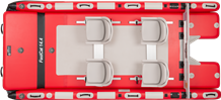
FastCat14™ Catamaran Reviews
My 3rd inflatable but my first Cat. WAAAY more space and 15% faster with the same 20hp motor. 24 mph Highly recommend.
I recently purchased the FASTCAT14 by Sea Eagle, and I couldn't be more thrilled with my decision. This inflatable catamaran offers an exceptional boating experience. The FASTCAT14's inflatable catamaran design provides ample space for four passengers. The user-friendly design makes it a perfect choice for spontaneous trips, and the inflatable nature of the boat ensures easy storage when not in use. The FASTCAT14 truly shines when it comes to cruising. The swivel seats make socializing a joy, and the canopy provides excellent shelter from the elements. The boat's stability, coupled with the Honda 9.9 engine, makes cruising a seamless and enjoyable experience. In conclusion, the FASTCAT14 by Sea Eagle has exceeded my expectations. It's the perfect blend of comfort, convenience, and performance, making it an excellent choice for those seeking a versatile and enjoyable boating experience. Whether you're a seasoned boater or a first-time enthusiast, the FASTCAT14 is sure to leave a lasting impression.
Key Features
Catamaran design.

The Sea Eagle catamaran-style hull design provides the smoothest ride on the water. Side chambers create lift and reduce friction - increasing fuel economy, handling, and performance while providing an incredible cloud cushioned ride.
Protective Rubbing Strake & Bumper Guard

Protective full-length underside rubbing strakes and side bumper guards provide added protection against bumps and abrasions where it counts most.
Multiple Grab Handles

Conveniently located heavy-duty grab handles for ease of carrying and water re-entry.
Universal Scotty Pads

Two rear Universal Scotty Pads allow for the attachment of a vast array of optional Scotty accessories including but not limited to rod holders, triple rod holders, anchor locks, bait boards, camera mounts, transducer mounts, and more!
*Scotty accessories are additional optional purchases. See https://www.seaeagle.com/Accessories/fishing-gear
Quik-Cinch Seat Straps System

Attaching your tandem seats with the Sea Eagle Quik-cinch system is as easy as 1-2-3!
Removable Transom

The removable transom makes the FastCat14™ lighter, more portable, and easier to pack down smaller. Attach the transom and you're ready for up to a 20 hp outboard.
Canopy Attachment System

Protecting yourself from the sun and elements has never been more important. The FastCat14™ is equipped with a Canopy Attachment System for use with the optional Wide Sun & Rain Canopy.
*Wide Sun & Rain Canopy is an additional optional accessory. See https://www.seaeagle.com/Accessories/covers-canopies/wide-canopy
4 Separate Independent Safety Air Chambers

4 Separate Independent Safety Air Chambers for added safety: Starboard Side, Bow, Floor, and Portside. Providing an added level of security and peace of mind.
FastCat14™ Catamaran Discount Packages
Deluxe package.
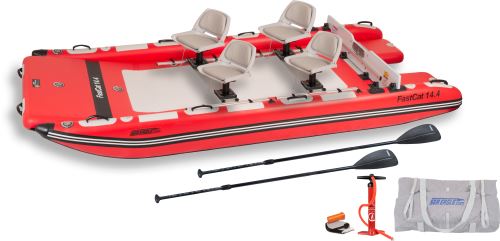
A great package for those who already have their own motors. Featuring (2) tandem bench seats with Quick Release Seatmounts, (2) paddles, manual pump, repair kit, and boat bag.
In Stock Freight Quote to Russia
Swivel Seat Canopy Package
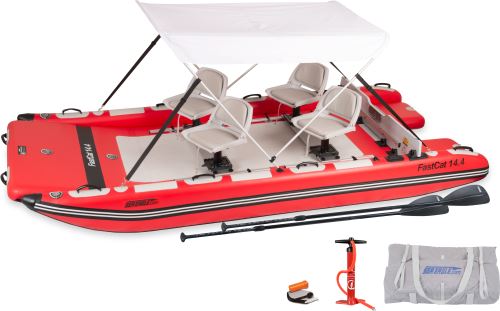
This Swivel Seat Canopy Package provides protection from the elements. Featuring a Wide Sun & Rain Canopy, (2) tandem bench seats with Quick Release Seatmounts, (2) paddles, manual pump, repair kit, and boat bag.
110w Solar Boat Package
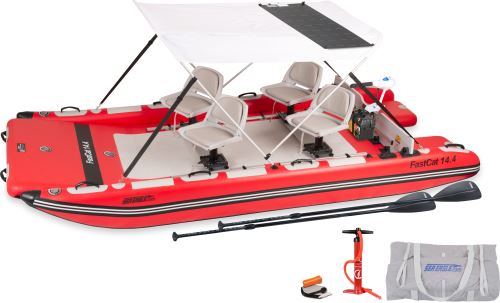
This 110w Solar Package provides protection from the elements. Featuring a canopy with a self-charging solar panel so you can spend an entire day on the water while the solar panel charges the electric motor battery (not included). The powerful Watersnake Advance 70 lb. thrust motor is a dual-purpose (salt/freshwater) electric motor.
Honda Motor Package
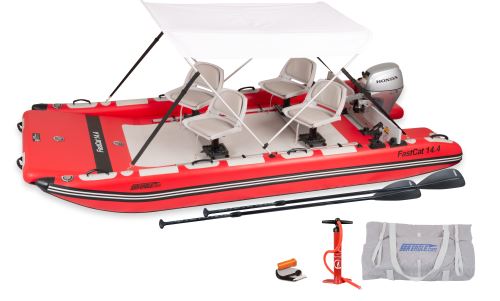
An excellent package providing speeds of up to 16 mph. Features a Wide Sun & Rain Canopy, (2) tandem bench seats with Quick Release Seatmounts, (2) paddles, (2) Scotty Rod Holders, manual pump, repair kit, boat bag, and Honda 9.9 hp 4-stroke outboard gas engine.
Torqeedo Solar Package
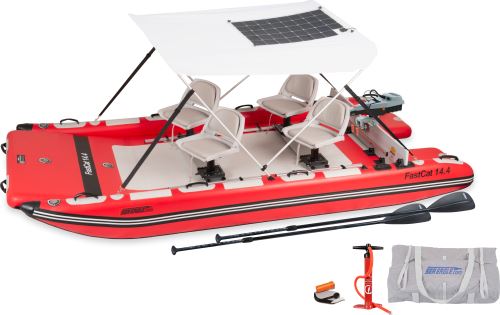
This Solar Motor Package provides protection from the elements. Featuring a canopy with a self-charging solar panel so you can spend an entire day on the water while the solar panel charges the Torqeedo electric motor. The powerful Torqeedo long shaft motor is a quiet, efficient & waterproof.
Instructions
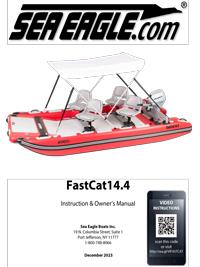
Sea Eagle Used Boats
- have never been damaged, punctured or patched
- have been test inflated for 48 hours
- might have very minimal wear (no barnacles or algae)
- are covered by our regular 120 day money back guarantee
- and three year bow-to-stern warranty , just like our new boats.
- might contain prior-generation components
Delivery Estimate
Fc14 tandem seat kit.
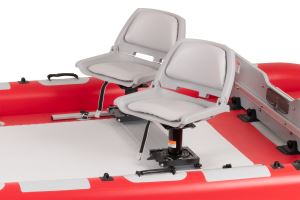
Tandem Locking Swivel Seats w/ 7" Pedestals
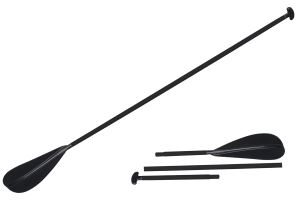
Adjustable Composite SUP Paddle
FC14 Boat Carry Bag
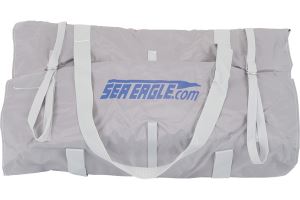
Boat Carry Bag for FastCat14™
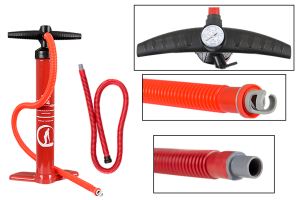
SUP Pump w/ Pressure Gauge
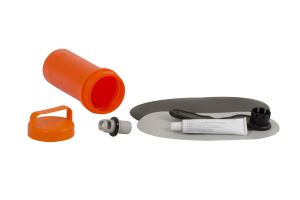
Wide Canopy
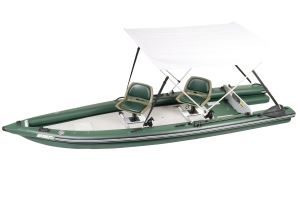
Wide Sun & Rain Canopy
110w Solar Panel
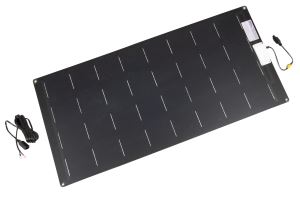
110 Watt Semi-Flexible Solar Panel w/ Charge Controller
Covered by the PowerFilm Solar Panel Warranty
All Sales are final. This item is not covered by the Sea Eagle 120 Day Trial.
Watersnake Brushless 70
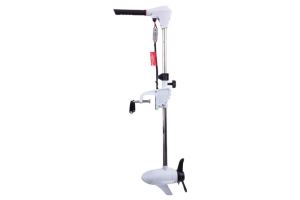
Watersnake Advance Brushless 70 lb. Thrust Electric Motor (Fresh & Saltwater)
Covered by the Watersnake 1 Year Warranty
Wide Solar 110 Canopy
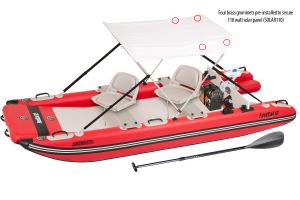
Wide Sun & Rain Solar 110 Canopy (For use with 110W solar panel)
Trolling Motor Power Center
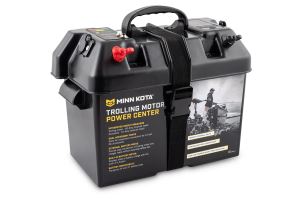
Minn Kota Trolling Motor Power Center
Covered by the Minn Kota Manufacturer Warranty
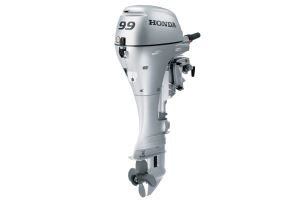
Honda 9.9S (Short Shaft)
Covered by the Honda Marine Warranty
Torqeedo 1103CL
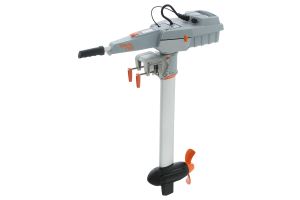
Travel 1103CL Long Shaft w/915 Wh Battery
Covered by the Torqeedo Factory Warranty
138w Solar Panel for Torqeedo
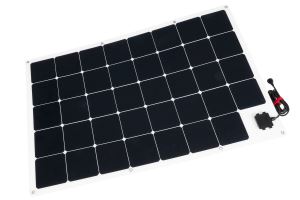
138 Watt Semi-Flexible Solar Panel for use with Torqeedo
Covered by the Sol Go
Wide Solar 138 Canopy
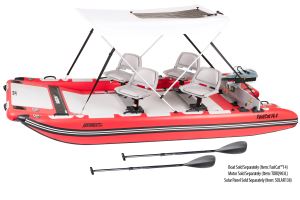
Wide Sun/Rain 138 Solar Canopy (For use with 138 solar panel)
Recently Viewed Items

Posted 2024-03-19 10:22
Contact Information:
Seawind 24 Catamaran - $10,300 (Scotch Plains)

QR Code Link to This Post
post id: 7728663258
posted: 2024-03-19 10:22
♥ best of [ ? ]
refresh the page.
Seawind 24 Catamaran - boats - by owner - marine sale - craigslist
Seawind 24 catamaran, trailer included Priced to sell! Recession proof sailing on a trailerable 24 ft LOA, 16 ft beam. Daggerboards and rotating rudders allow you to float in less than one foot of...
Things to Do in Elektrostal, Russia - Elektrostal Attractions
Things to do in elektrostal.
- 5.0 of 5 bubbles
- 4.0 of 5 bubbles & up
- Good for a Rainy Day
- Good for Kids
- Good for Big Groups
- Adventurous
- Budget-friendly
- Hidden Gems
- Good for Couples
- Honeymoon spot
- Good for Adrenaline Seekers
- Things to do ranked using Tripadvisor data including reviews, ratings, photos, and popularity.

1. Electrostal History and Art Museum

2. Statue of Lenin

3. Park of Culture and Leisure
4. museum and exhibition center.

5. Museum of Labor Glory

7. Galereya Kino
8. viki cinema, 9. smokygrove.

10. Gandikap
11. papa lounge bar, 12. karaoke bar.
- Statue of Lenin
- Electrostal History and Art Museum
- Park of Culture and Leisure
- Museum and Exhibition Center
- Museum of Labor Glory

Turn Your Curiosity Into Discovery
Latest facts.

How To Protect Children From Junk Food Marketing

12 Intriguing Facts About Balatro
40 facts about elektrostal.
Written by Lanette Mayes
Modified & Updated: 02 Mar 2024
Reviewed by Jessica Corbett

Elektrostal is a vibrant city located in the Moscow Oblast region of Russia. With a rich history, stunning architecture, and a thriving community, Elektrostal is a city that has much to offer. Whether you are a history buff, nature enthusiast, or simply curious about different cultures, Elektrostal is sure to captivate you.
This article will provide you with 40 fascinating facts about Elektrostal, giving you a better understanding of why this city is worth exploring. From its origins as an industrial hub to its modern-day charm, we will delve into the various aspects that make Elektrostal a unique and must-visit destination.
So, join us as we uncover the hidden treasures of Elektrostal and discover what makes this city a true gem in the heart of Russia.
Key Takeaways:
- Elektrostal, known as the “Motor City of Russia,” is a vibrant and growing city with a rich industrial history, offering diverse cultural experiences and a strong commitment to environmental sustainability.
- With its convenient location near Moscow, Elektrostal provides a picturesque landscape, vibrant nightlife, and a range of recreational activities, making it an ideal destination for residents and visitors alike.
Known as the “Motor City of Russia.”
Elektrostal, a city located in the Moscow Oblast region of Russia, earned the nickname “Motor City” due to its significant involvement in the automotive industry.
Home to the Elektrostal Metallurgical Plant.
Elektrostal is renowned for its metallurgical plant, which has been producing high-quality steel and alloys since its establishment in 1916.
Boasts a rich industrial heritage.
Elektrostal has a long history of industrial development, contributing to the growth and progress of the region.
Founded in 1916.
The city of Elektrostal was founded in 1916 as a result of the construction of the Elektrostal Metallurgical Plant.
Located approximately 50 kilometers east of Moscow.
Elektrostal is situated in close proximity to the Russian capital, making it easily accessible for both residents and visitors.
Known for its vibrant cultural scene.
Elektrostal is home to several cultural institutions, including museums, theaters, and art galleries that showcase the city’s rich artistic heritage.
A popular destination for nature lovers.
Surrounded by picturesque landscapes and forests, Elektrostal offers ample opportunities for outdoor activities such as hiking, camping, and birdwatching.
Hosts the annual Elektrostal City Day celebrations.
Every year, Elektrostal organizes festive events and activities to celebrate its founding, bringing together residents and visitors in a spirit of unity and joy.
Has a population of approximately 160,000 people.
Elektrostal is home to a diverse and vibrant community of around 160,000 residents, contributing to its dynamic atmosphere.
Boasts excellent education facilities.
The city is known for its well-established educational institutions, providing quality education to students of all ages.
A center for scientific research and innovation.
Elektrostal serves as an important hub for scientific research, particularly in the fields of metallurgy, materials science, and engineering.
Surrounded by picturesque lakes.
The city is blessed with numerous beautiful lakes, offering scenic views and recreational opportunities for locals and visitors alike.
Well-connected transportation system.
Elektrostal benefits from an efficient transportation network, including highways, railways, and public transportation options, ensuring convenient travel within and beyond the city.
Famous for its traditional Russian cuisine.
Food enthusiasts can indulge in authentic Russian dishes at numerous restaurants and cafes scattered throughout Elektrostal.
Home to notable architectural landmarks.
Elektrostal boasts impressive architecture, including the Church of the Transfiguration of the Lord and the Elektrostal Palace of Culture.
Offers a wide range of recreational facilities.
Residents and visitors can enjoy various recreational activities, such as sports complexes, swimming pools, and fitness centers, enhancing the overall quality of life.
Provides a high standard of healthcare.
Elektrostal is equipped with modern medical facilities, ensuring residents have access to quality healthcare services.
Home to the Elektrostal History Museum.
The Elektrostal History Museum showcases the city’s fascinating past through exhibitions and displays.
A hub for sports enthusiasts.
Elektrostal is passionate about sports, with numerous stadiums, arenas, and sports clubs offering opportunities for athletes and spectators.
Celebrates diverse cultural festivals.
Throughout the year, Elektrostal hosts a variety of cultural festivals, celebrating different ethnicities, traditions, and art forms.
Electric power played a significant role in its early development.
Elektrostal owes its name and initial growth to the establishment of electric power stations and the utilization of electricity in the industrial sector.
Boasts a thriving economy.
The city’s strong industrial base, coupled with its strategic location near Moscow, has contributed to Elektrostal’s prosperous economic status.
Houses the Elektrostal Drama Theater.
The Elektrostal Drama Theater is a cultural centerpiece, attracting theater enthusiasts from far and wide.
Popular destination for winter sports.
Elektrostal’s proximity to ski resorts and winter sport facilities makes it a favorite destination for skiing, snowboarding, and other winter activities.
Promotes environmental sustainability.
Elektrostal prioritizes environmental protection and sustainability, implementing initiatives to reduce pollution and preserve natural resources.
Home to renowned educational institutions.
Elektrostal is known for its prestigious schools and universities, offering a wide range of academic programs to students.
Committed to cultural preservation.
The city values its cultural heritage and takes active steps to preserve and promote traditional customs, crafts, and arts.
Hosts an annual International Film Festival.
The Elektrostal International Film Festival attracts filmmakers and cinema enthusiasts from around the world, showcasing a diverse range of films.
Encourages entrepreneurship and innovation.
Elektrostal supports aspiring entrepreneurs and fosters a culture of innovation, providing opportunities for startups and business development.
Offers a range of housing options.
Elektrostal provides diverse housing options, including apartments, houses, and residential complexes, catering to different lifestyles and budgets.
Home to notable sports teams.
Elektrostal is proud of its sports legacy, with several successful sports teams competing at regional and national levels.
Boasts a vibrant nightlife scene.
Residents and visitors can enjoy a lively nightlife in Elektrostal, with numerous bars, clubs, and entertainment venues.
Promotes cultural exchange and international relations.
Elektrostal actively engages in international partnerships, cultural exchanges, and diplomatic collaborations to foster global connections.
Surrounded by beautiful nature reserves.
Nearby nature reserves, such as the Barybino Forest and Luchinskoye Lake, offer opportunities for nature enthusiasts to explore and appreciate the region’s biodiversity.
Commemorates historical events.
The city pays tribute to significant historical events through memorials, monuments, and exhibitions, ensuring the preservation of collective memory.
Promotes sports and youth development.
Elektrostal invests in sports infrastructure and programs to encourage youth participation, health, and physical fitness.
Hosts annual cultural and artistic festivals.
Throughout the year, Elektrostal celebrates its cultural diversity through festivals dedicated to music, dance, art, and theater.
Provides a picturesque landscape for photography enthusiasts.
The city’s scenic beauty, architectural landmarks, and natural surroundings make it a paradise for photographers.
Connects to Moscow via a direct train line.
The convenient train connection between Elektrostal and Moscow makes commuting between the two cities effortless.
A city with a bright future.
Elektrostal continues to grow and develop, aiming to become a model city in terms of infrastructure, sustainability, and quality of life for its residents.
In conclusion, Elektrostal is a fascinating city with a rich history and a vibrant present. From its origins as a center of steel production to its modern-day status as a hub for education and industry, Elektrostal has plenty to offer both residents and visitors. With its beautiful parks, cultural attractions, and proximity to Moscow, there is no shortage of things to see and do in this dynamic city. Whether you’re interested in exploring its historical landmarks, enjoying outdoor activities, or immersing yourself in the local culture, Elektrostal has something for everyone. So, next time you find yourself in the Moscow region, don’t miss the opportunity to discover the hidden gems of Elektrostal.
Q: What is the population of Elektrostal?
A: As of the latest data, the population of Elektrostal is approximately XXXX.
Q: How far is Elektrostal from Moscow?
A: Elektrostal is located approximately XX kilometers away from Moscow.
Q: Are there any famous landmarks in Elektrostal?
A: Yes, Elektrostal is home to several notable landmarks, including XXXX and XXXX.
Q: What industries are prominent in Elektrostal?
A: Elektrostal is known for its steel production industry and is also a center for engineering and manufacturing.
Q: Are there any universities or educational institutions in Elektrostal?
A: Yes, Elektrostal is home to XXXX University and several other educational institutions.
Q: What are some popular outdoor activities in Elektrostal?
A: Elektrostal offers several outdoor activities, such as hiking, cycling, and picnicking in its beautiful parks.
Q: Is Elektrostal well-connected in terms of transportation?
A: Yes, Elektrostal has good transportation links, including trains and buses, making it easily accessible from nearby cities.
Q: Are there any annual events or festivals in Elektrostal?
A: Yes, Elektrostal hosts various events and festivals throughout the year, including XXXX and XXXX.
Was this page helpful?
Our commitment to delivering trustworthy and engaging content is at the heart of what we do. Each fact on our site is contributed by real users like you, bringing a wealth of diverse insights and information. To ensure the highest standards of accuracy and reliability, our dedicated editors meticulously review each submission. This process guarantees that the facts we share are not only fascinating but also credible. Trust in our commitment to quality and authenticity as you explore and learn with us.
Share this Fact:

40' MTI. ( (SOLD)) Luxury 2009 40 MTI with the Tilt Trailer.$399K This boat is a one-owner powerboat used only in freshwater. Powered with two Mercury 700s stage 3 motors with original 150 HR this boat is nice. "Don't miss out" For viewing please make an appointment with us @ Rockstarboats.com (928)208-8460..
These powerboats use the following propulsion options: outboard engine. There are a wide range of Power Catamaran boats for sale from popular brands like World Cat, Aquila and Twin Vee with 533 new and 701 used and an average price of $457,008 with boats ranging from as little as $18,176 and $7,244,759.
There are a wide range of High Performance boats for sale from popular brands like Skipper-BSK, Fountain and Formula with 887 new and 1,183 used and an average price of $138,423 with boats ranging from as little as $10,093 and $2,786,379.
Built by a wide variety of yacht makers, there are currently 1,797 catamaran yachts for sale on YachtWorld, with 438 new vessels for sale, and 1,359 used and custom yachts listed. These vessels are all listed by professional yacht brokerages and new boat dealers, mainly in the following countries: United States, France, Croatia, Italy and Greece.
These boats are built by a wide variety of boat manufacturers with hull types including deep vee, modified vee, catamaran, planing and other designs. A total of 642 brand-new boats and 762 used boats are among the 1,404 high performance boats that are now available on Boat Trader, which features listings from both professional boat and yacht ...
Catamaran boats for sale on YachtWorld are available for a variety of prices from $49,999 on the relatively more affordable end, with costs up to $22,869,588 for the most extravagant model yachts.
Power Catamaran boats for sale on Boat Trader are available within an assortment of prices from a reasonable $18,827 on the more accessible end all the way up to $7,718,422 for the most luxurious crafts. While shorter, more affordable utility models may have engines with as little as 70 horsepower on them, models with the most power can have ...
Gunboat 68 (+35Kts) Gunboat 68 is a cruising catamaran designed to reach the highest speeds possible. Made by Gunboat, the ship uses Grand-Prix racing boats' designs to develop the speediest cruising catamaran on the market. Gunboat 68 is made entirely from carbon composites, which keeps the ship lightweight and fast.
Aquila 42 Yacht. 2024. Request Price. Speeding ahead of the competition, the boat of your dreams is waiting for you. The Aquila 42 Yacht Power Catamaran is equipped with features that will bring a smile to any boater's face—whether you plan on cruising near or far. The 42 Yacht is built to CE Certification Category A and designed by world ...
Speed boat models are also available as catamarans and can be made of durable aluminum or steel in some cases, as well. ... The motors used on these boats are all about running hard and fast, and often need to be replaced in as little as a year or two. ... High Performance boats listed for sale on YachtWorld offers a diverse price range, from ...
Fast Boats For Sale. Featured Boat: 2020 Skater 50 Catamaran Featured Boat: 2020 Skater 50 Catamaran. Created: March 2, 2024 . Share. 0 Comments. ... Featured Boat: 2018 MTI 340X Catamaran. Created: December 21, 2023 . Share. 0 Comments. MTI At 25—Stop! Hammertime! MTI At 25—Stop! Hammertime!
Find catamaran sailboats for sale near you, including boat prices, photos, and more. Locate boat dealers and find your boat at Boat Trader! ... Catamaran sailing vessels for sale on Boat Trader are available for a variety of prices, from $46,667 on the relatively more affordable end all the way up to $5,535,789 for the biggest, most advanced ...
The Sea Eagle Inflatable FastCat12™ Catamaran Boat is a rugged, dependable, rigid, high-pressure, all-drop stitch constructed, two-person, inflatable, runabout boat that fits into a bag and provides the Smoothest Ride On The Water! No need for a trailer, storage fees, maintenance fees, or heavy fuel prices. Accompanied by a 3yr Warranty, Free Shipping, 120 Day Money Back Guarantee Trial Period.
She's fast and luxurious at the same time and designed for completely single handed sailing. 6kW solar panels, 44kWh Li-ion battery bank and 10kW inverters can handle all onboard appliances, even the air-conditioners without having to run the generator. ... There are a wide range of Catamaran boats for sale from popular brands like Fountaine ...
The Sea Eagle Inflatable FastCat14™ Catamaran Boat is a rugged, dependable, rigid, high-pressure, all-drop stitch constructed, four-person, inflatable, runabout, family pontoon boat that still fits into a bag and provides the Smoothest Ride On The Water! No need for storage fees, maintenance fees, or heavy fuel prices. Accompanied by a 3yr Extendable Warranty, Free Shipping, and 120 Day ...
2000 Voyage Yachts 440. US$337,000. United Yacht Sales | Tavernier, Florida. Request Info. Find Sail Catamaran boats for sale in United States. Offering the best selection of boats to choose from.
Seawind 24 catamaran, trailer included Priced to sell! Recession proof sailing on a trailerable 24 ft LOA, 16 ft beam. ... easily accommodating a crowd while still light enough to go fast (flat water, moderate breeze will bring a big smile on your face). Simple rig (100% jib, big roach, full-battened main on rotating mast) makes for easy short ...
Glowzone Jamestown-Scotland Ferry Stavros Beach Sandy Beach Park SeaQuest Woodbridge Colombo City Centre Burton Brooks Peach Orchard Valley of the Temples Hoomaluhia Botanical Gardens Enchanted Forest Phong Nha Cave And Dark Cave Tour 3D Fun Art Museum Funchal Grand Cayman Catamaran Cruise with Snorkeling at Stingray Sandbar and Reef North ...
2022 Sunsation 32 CCX. $379,000. $2,966/mo*. Fort Lauderdale, FL 33301 | Private Seller. Request Info. <. Find high performance boats for sale near you by owner, including boat prices, photos, and more. Locate boat dealers and find your boat at Boat Trader!
Find company research, competitor information, contact details & financial data for BETA GIDA, OOO of Elektrostal, Moscow region. Get the latest business insights from Dun & Bradstreet.
Find Custom Catamaran boats for sale in your area & across the world on YachtWorld. Offering the best selection of Custom boats to choose from.
Its fuel assemblies for RBMK, VVER, and fast reactors are used in 67 reactors worldwide. 2 It also produced MOX fuel assemblies for the BN-800 and the fuel for Russia's first floating nuclear power plant in 2011. 3 Elemash manufactures BWR and PWR fuel assemblies for Areva, and also supplied fuel assemblies to start up China's CEFR fast ...
Find Power Catamaran Aluminum boats for sale in your area & across the world on YachtWorld. Offering the best selection of boats to choose from.
Known as the "Motor City of Russia." Elektrostal, a city located in the Moscow Oblast region of Russia, earned the nickname "Motor City" due to its significant involvement in the automotive industry.. Home to the Elektrostal Metallurgical Plant. Elektrostal is renowned for its metallurgical plant, which has been producing high-quality steel and alloys since its establishment in 1916.
sailboat atlantic crossing record

Transatlantic sailing record. Banque Populaire V, current record holder. Since the five-week voyage of Christopher Columbus in 1492, crossing the Atlantic Ocean, quickly and safely, between Europe and the Americas has always been an important issue. Today, the route has become a classic one among skippers.
Comanche, the 100ft maxi racing yacht built to break records for Jim Clark and Kristy Hinze-Clark, has set an astonishingly fast new transatlantic record. In making the crossing in just 5 days, 14 ...
The 30.48m (100ft) VPLP Design/Verdier Maxi Comanche, skippered by Mitch Booth, has taken Monohull Line Honours in the 2022 RORC Transatlantic Race, winning the magnificent IMA Trophy. Comanche has set a new race record for the 3,000nm race from Lanzarote to Grenada of 7 days 22 hours 1 minute 4 seconds. Comanche's new Monohull Race Record has ...
Record attempt for the smallest boat to cross the Atlantic. Andrew Bedwell is planning to smash the record for sailing the smallest boat to cross the Atlantic. His vessel, Big C is just over 1m/3.2ft long. The smallest boat to cross the Atlantic was 5ft 4inches, sailed by American sailor, Hugo Vihlen in 1993. Many have tried but failed to break ...
Sailing superyacht Comanche has set a new record for crossing the Atlantic Ocean after completing her latest Transat on July 28.. The 30.45 metre carbon-fibre yacht sailed from New York's Ambrose Lighthouse to the UK's Lizard Point in 5 days, 14 hours, 21 minutes and 25 seconds.
(July 28, 2016) - Comanche, the 100 foot racing yacht owned by Jim Clark and Kristy Hinze-Clark, has successfully set a new monohull transatlantic record of 5 days, 14 hours, 21 minutes 25 seconds.
Andrew Bedwell's 3'3" sailboat is tiny, especially for the Atlantic. But the Englishman plans to break the record for smallest boat crossing.
The 30.48 metre sailing yacht Comanche has set a new monohull race record after taking Monohull Line Honours in the 2022 RORC Transatlantic Race.. Skippered by Mitch Booth, Comanche and its crew completed the 3,000 nautical mile race from Lanzarote to Grenada in seven days, 22 hours, 1 minute and 4 seconds (that's two days quicker than the previous record holder).
Small boat Atlantic crossing records are always fascinating. What motivates a skipper to test the limits by sailing offshore in a 21ft yacht?. For American sailor Jay Thompson it is his desire to highlight that the Mini 6.50 is a seaworthy boat, and that this popular French class has potential beyond the Mini Transat. 'The whole point of the Mini 6.50 class is to innovate and prove that it ...
British solo sailor Alex Thomson smashed the single-handed monohull trans-Atlantic record by more than 24 hours crossing the finish line July 26 at Lizard Point, off Falmouth in Cornwall, England, reports Soundings Trade Only. The 38-year-old crossed the line at 18:17 British Standard Time, setting the new time at 8 days, 22 hours, 8 minutes.
Andrew Bedwell's one-metre long boat sank very early in his attempted trek from St. John's to England. »»» Subscribe to CBC NL to watch more videos: https://...
Transatlantic Crossing in Record Time. Here are the records for the fastest crossings of the Atlantic in a Sailboat. Crewed: Time: Boat Name: Hull: Year: Speed: 5d 14h 21min 25s : Comanche : Monohull: 2016: 21.44 knots (39.71 km/h) 3d 15h 25min 48s: Banque Populaire V : Trimaran: 2009: 32.94 knots (61.00 km/h)
Holly Overton gets the inside track from her captain and crew. Black Pearl was designed to push the boundaries of technology and what was thought to be possible for a 106.7-metre under sail. But even for her captain, Christian Truter, carving through the busy waters of St Barths at 14 knots was a bold move. She was an unexpected guest and her ...
ARC: Three Decades of Atlantic Crossings. Duncan Kent. Updated: Aug 2, 2017. Original: Feb 15, 2017. The 2016 ARC fleets sets sail for St. Lucia under clear skies. Every year since 1986, a group of around 200 cruising boats has gathered in Las Palmas in the Canary Islands, ready to set forth across the Atlantic Ocean—their destination, the ...
A sailor's record-setting quest to cross the Atlantic Ocean in the smallest boat ever ended in tears when the 3-foot 10-inch boat began taking on water shortly after his departure and smashed…
Record-Breaking Atlantic Crossings: Several remarkable records have been set for the fastest solo and crewed Atlantic crossings. These record-breaking achievements showcase the extraordinary capabilities of both sailors and vessels. ... An Atlantic crossing on a sailboat takes an average of 20 to 25 days, but can be completed in two weeks if ...
Sail World - The world's largest sailing news network; sail and sailing, cruising, boating news. Please select your home edition ... The Atlantic crossing record by Project 100 Communications on 23 Jul 2000 PlayStation (105'), launched in December 1998, set a 24 hour distance ...
Fun Fact: The longest sailboat ever constructed, known as the yacht "A," has set a world record with a length overall of 143 meters (469 feet). Displacement. Edited . ... In this section, we will delve into key considerations for an Atlantic-crossing sailboat, providing insights and advice to ensure a safe and enjoyable voyage. So, grab ...
Page 2- Seaplanes shot down in Baltic 1916 Aircraft
These recorded times exemplify the incredible speed and efficiency of sailboats crossing the Atlantic. The sailboat "Comanche" holds the record for the fastest time between Lizard Point in the UK and Ambrose Light in the USA, completing the journey in just 5 days, 14 hours, 21 minutes, and 25 seconds.Meanwhile, the sailboat "IDEC Sport" holds the record for the fastest west to east ...
A record number of migrants crossed the Channel on Wednesday as Downing Street warned of a "migration emergency" amid a three-week delay to its Rwanda Bill.. More than 500 migrants arrived on ...
The running total for Channel crossings in 2024 to 4,043 - 10% higher than this time last year (3,683). It is also 25% higher than the total at this stage in 2022 when there were 3,229 arrivals ...
July 14, 2020 featured in Display. Bold Color Cool Creative Cyrillic Geometric Neon Outlined Retro. Download Moscow Metro font, a multi-line display typeface in two styles, inspired by the Moscow underground map. Moscow Metro is ideal for posters and headlines, neon signage and other artworks.
Get directions to Yuzhny prospekt, 6к1 and view details like the building's postal code, description, photos, and reviews on each business in the building
The information about Lysenko's record achievements: Rafting (I) During 1990-1992 (additionally 1996) Vladimir became the first man all over the world, who had rafted down all fourteen more-than-8,000-meters peaks over the world. There is the list of rivers rafted by him from all more-than-8,000meters peaks: 1. Everest(8848m) -
eastward ho sailboat for sale

- Boats for Sale
24' eastward ho cruisers.
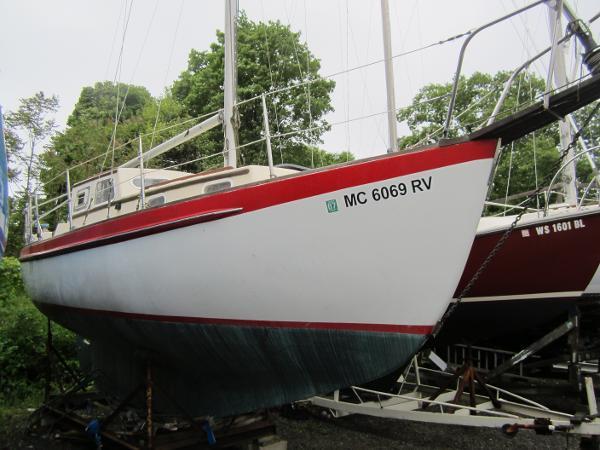
ARCHIVED: This is a previously listed vessel and is no longer offered for sale If you would like assistance locating a similar vessel, Click Here to locate a similar boat
Designed by Eldredge-McInnis and built by Portsmouth Yacht Co., the Eastward Ho is a compact yet roomy sloop designed for family cruising in comfort. She is a proven design which combines traditional elegance with practical accommodations. Nothing has been overlooked to satisfy both the sailor and the cruising enthusiast. Her generous headroom, two berths, full galley, and enclosed head are unique on a boat of this size. Her spacious cockpit affords seats long enough for an afternoon nap or additional overnight guests. Sailing or under power she is lively and responsive with a motion reminiscent of a much larger boat. Her ample beam and sufficient ballast make her very stiff without sacrificing valuable draft.
Attabuoy is in need of general cleaning inside and out and some cosmetic work. The keel will need some minor fiberglass work. The sails are like new. The engine turns over, but has not been operated for a number of years. Take a look and you will fall in love!
- Specifications
- Description
Hull color - white
Deck color - cream
Keel - internal lead
Cockpit Cushions
Stern Ladder
Opening Ports - 2
Pressure Water
Refrigerator
Battery - 1 (most likely is dead)
Shorepower 110V
Roller Furling
Depthsounder
Cradle - steel
Anchors - 3
Anchor Rode - 2
Fire Extinguisher
Life Jackets
Main - white, Dacron, The Yacht Sailmakers
Main Cover - blue, Sunbrella
Genoa - white, Dacron, The Yacht Sailmakers
Summer & Winter - Torresen Marine, Inc., Muskegon, Michigan
For more information or details, please contact Steve Dake, Director of Sailboat Sales, at (231) 759-8596 or by email at [email protected] .
Steve has been in the marine business for over 40 years. Please use his knowledge and experience to help you find the right boat for your needs.
Because we value your time, please call and make an appointment prior to visiting. Your scheduled appointment helps ensure the ability to board and see the boat you would like to preview. Please wear boat shoes only to board all boats. The only exceptions are non-marking treads. Thank you!
Connecting with Marinesource.com
Copyright 1992-2024 MarineSource Network, Inc. All Rights Reserved.

I want to get mails about Recently added "eastward ho 24" ads.
I agree with the Terms of use and Terms of Privacy .
Publication date
- Last 15 Days
- Most popular
- Most recent added
- Lower price
Price (min)
- 100.000 USD
- 125.000 USD
- 150.000 USD
- 175.000 USD
- 200.000 USD
- 225.000 USD
- 250.000 USD
- 275.000 USD
- 300.000 USD
- 350.000 USD
- 400.000 USD
- 450.000 USD
- 500.000 USD
- 600.000 USD
- 700.000 USD
- 800.000 USD
- 900.000 USD
- 1.000.000 USD
- 1.100.000 USD
- 1.300.000 USD
- 1.500.000 USD
- 1.700.000 USD
- 2.000.000 USD
- 2.500.000 USD
Price (max)
Hull Material
Length (min)
Length (max)
eastward ho 24 for sale
- eastward ho 24

1976 CE Ryder Eastward Ho 24 sailboat for sale in Connecticut
Ce ryder eastward ho 24.
Built by CE Ryder (USA) and finished by Portsmouth Yacht Co., Rhode Island, USA, this stout pocket cruiser is a solid full-keel sailing vessel. Omoo has had a lot...
Other classifieds according to your search criteria

Haynie 24 HO 2014
Haynie 24ho.

1978 CE Ryder Portsmouth Yacht Co Eastward Ho sailboat for sale in Florida
Airyella is a classic New England style sloop - has incredible character, is very distinctive, and is a pleasure to sail. She is perfect for anyone looking for a...

2014 Haynie 24 HO | 25ft
Haynie 24 ho.
2014 Haynie 24 HO 2014 Haynie 24 High Output, Yamaha 300 w/215hrs, Jackplate, trim tabs, underwater lights, Minn Kota I-pilot 112lbs 36v trolling motor, Power...

Yamaha SX240 HO
Yamaha sx240 ho.
Sales Department phone 2012 Yamaha SX240 HO 1 of 111 View Large Images Description Stock #075952 - If you are in the market for a jet, look no further...
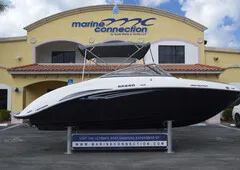
Marine Connection Boat Sales 1.phone West Palm Beach, FL 2011 Yamaha SX240 HO 2011 Yamaha SX240 HO Jet Boat Combines Performance & Family Friendly Fun!! $34,900...
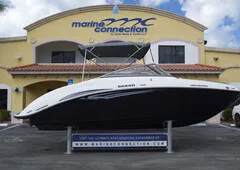
Marine Connection Boat Sales 1.phone West Palm Beach, FL 2011 Yamaha SX240 HO NICE! 2011 Yamaha SX240 HO Jet Boat, Twin 180HP Engines, Financing! $34,900 ConditionUsed...
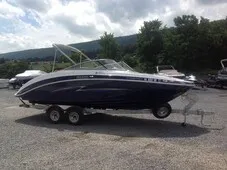
#content {margin: 0; padding: 0; font-family: Helvetica, Arial, sans-serif; font-size: 12px; color: #000;} dl, dl dt, dl dd, ul, ul li, img {margin: 0; padding:...
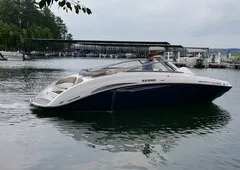
This boat has approximately 53 hours and in like new condition and only used in fresh water. Boat has been in dry storage when not in use. It's powered by twin 180...
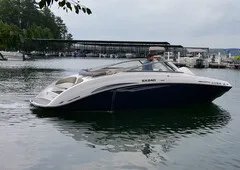
Yamaha AR 240 HO
Yamaha ar 240 ho.
PICTURES ANDDESCRIPTION COMING SOON

Yamaha 240 SX HO
Yamaha 240 sx ho.
Looking for the most fun 24 bowrider on the market? The Yamaha 240SX HO drafts only 17 inches and planes in 2.3 seconds! Powered by twin 1.8 Liter High Output engines,...

Yamaha SX240 H.O.
Yamaha sx240 h.o..
Garret McLaughlin phone 5327 East Frontage Rd NW Rochester Minnesota 55901 16 Yamaha SX240 H.O. TEXT GARRET Call or text Garret at phone for prompt and friendly...
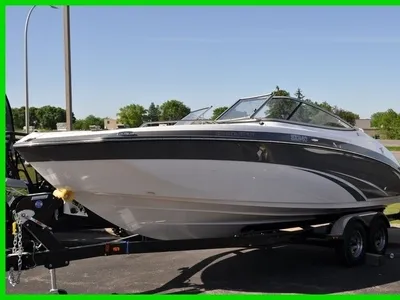
Yamaha AR240 H.O.
Yamaha ar240 h.o..
2017 YAMAHA AR240 HO BRAND NEW !!!ALL OTHER MODELS IN STOCK MUST GOPRICED TO SELL NOW!ALL OTHER 2017 MODELS AVAILABLE TOO!!!MUST TEXT OR CALL KYLE PRICE @ phone...
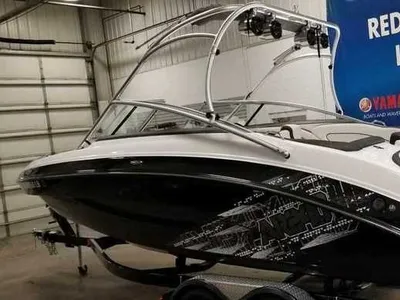
Related Searches "eastward ho 24" :
The information we receive from advertisement sites may vary. Therefore, when you go to the listing site, you may not always find the same offer that you see on waa2.
- Add Your Listing
- Terms of Privacy
- Terms of use
- About

Popular Sailboat Models
- Bavaria Cruiser 46
- Fountaine Pajot Saona 47
- Beneteau Oceanis 45
- Beneteau 50
- Catalina 30
Popular Powerboat Models
- Sea Doo Speedster
- Sea Ray Sundancer 320
- Bayliner Vr5
- Beneteau Antares 11
- Malibu Wakesetter 23 Lsv
- Boston Whaler 170 Montauk
- Princess V65
- Jeanneau Nc 1095
Feedback! ▼
Waa2 login to your account, register for free, forgot password.
Would you also like to receive alerts for these other related searches?
yamaha fx 1 9 ho 24
2015 yamaha ar240 ho
fx cruiser ho 2018
Waa2 uses our own and third-party cookies to improve your user experience, enhance our services, and to analyze your browsing data in order to show you relevant advertisements. By continuing browsing please note you are accepting this policy. You are free to change the settings or get more information here >>> OK
- Sign In or Register
- Research Boats
- Sell a Boat
- Search Alerts
- My Listings
- Account Settings
- Dealer Advertising
- Portsmouth Eastward Ho
Portsmouth Eastward Ho Boats for sale
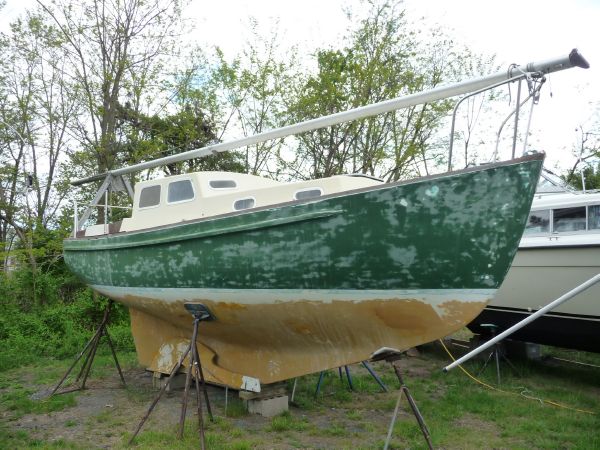
1976 PORTSMOUTH Eastward Ho
Neptune, New Jersey
Make PORTSMOUTH
Model Eastward Ho
Category Sailboats
Posted Over 1 Month
1976 PORTSMOUTH Eastward Ho All of the prep work has been done and she's just about ready for paint. This is a great opportunity for someone looking to customize an Eastward Ho their way and do it cheap! Seller has all parts to complete this project. Also available separately is the completely rebuilt 14HP Volvo MD7A Diesel engine, ready to be placed in the boat. Top to Bottom rebuild was performed by world renowned Monmouth Marine Engines of Brielle NJ. $3000 Invested.

Belmar, New Jersey
Narrow Results
Current search reset all.
- Keyword: portsmouth eastward ho
- PORTSMOUTH (1)
- Sailboats (1)
- New Jersey (2)
- Search Title Only
- Has Picture
- Include Sold Listings
Showcase Ads

2017 Boston Whaler 230 Vantage
Daly City, CA

2008 Sea Ray 260 Sundancer Cruiser

2006 Sea Ray 340 Sundancer
Belleville, MI

2014 Malibu Wakesetter 24 MXZ
Create Alert
Please, name this search
Select Interval
Alert Successfully Created

- New comments
- Military Photos
- Russian Military
- Anti-Aircraft
- SA-21/S-400 Triumf

92N6E Radar, S-400
- Oct 18, 2010
Media information
Share this media.
- This site uses cookies to help personalise content, tailor your experience and to keep you logged in if you register. By continuing to use this site, you are consenting to our use of cookies. Accept Learn more…
- Popular Professionals
- Design & Planning
- Construction & Renovation
- Finishes & Fixtures
- Landscaping & Outdoor
- Systems & Appliances
- Interior Designers & Decorators
- Architects & Building Designers
- Design-Build Firms
- Kitchen & Bathroom Designers
- General Contractors
- Kitchen & Bathroom Remodelers
- Home Builders
- Roofing & Gutters
- Cabinets & Cabinetry
- Tile & Stone
- Hardwood Flooring Dealers
- Landscape Contractors
- Landscape Architects & Landscape Designers
- Home Stagers
- Swimming Pool Builders
- Lighting Designers and Suppliers
- 3D Rendering
- Sustainable Design
- Basement Design
- Architectural Design
- Universal Design
- Energy-Efficient Homes
- Multigenerational Homes
- House Plans
- Home Remodeling
- Home Additions
- Green Building
- Garage Building
- New Home Construction
- Basement Remodeling
- Stair & Railing Contractors
- Cabinetry & Cabinet Makers
- Roofing & Gutter Contractors
- Window Contractors
- Exterior & Siding Contractors
- Carpet Contractors
- Carpet Installation
- Flooring Contractors
- Wood Floor Refinishing
- Tile Installation
- Custom Countertops
- Quartz Countertops
- Cabinet Refinishing
- Custom Bathroom Vanities
- Finish Carpentry
- Cabinet Repair
- Custom Windows
- Window Treatment Services
- Window Repair
- Fireplace Contractors
- Paint & Wall Covering Dealers
- Door Contractors
- Glass & Shower Door Contractors
- Landscape Construction
- Land Clearing
- Garden & Landscape Supplies
- Deck & Patio Builders
- Deck Repair
- Patio Design
- Stone, Pavers, & Concrete
- Paver Installation
- Driveway & Paving Contractors
- Driveway Repair
- Asphalt Paving
- Garage Door Repair
- Fence Contractors
- Fence Installation
- Gate Repair
- Pergola Construction
- Spa & Pool Maintenance
- Swimming Pool Contractors
- Hot Tub Installation
- HVAC Contractors
- Electricians
- Appliance Services
- Solar Energy Contractors
- Outdoor Lighting Installation
- Landscape Lighting Installation
- Outdoor Lighting & Audio/Visual Specialists
- Home Theater & Home Automation Services
- Handyman Services
- Closet Designers
- Professional Organizers
- Furniture & Accessories Retailers
- Furniture Repair & Upholstery Services
- Specialty Contractors
- Color Consulting
- Wine Cellar Designers & Builders
- Home Inspection
- Custom Artists
- Columbus, OH Painters
- New York City, NY Landscapers
- San Diego, CA Bathroom Remodelers
- Minneapolis, MN Architects
- Portland, OR Tile Installers
- Kansas City, MO Flooring Contractors
- Denver, CO Countertop Installers
- San Francisco, CA New Home Builders
- Rugs & Decor
- Home Improvement
- Kitchen & Tabletop
- Bathroom Vanities
- Bathroom Vanity Lighting
- Bathroom Mirrors
- Bathroom Fixtures
- Nightstands & Bedside Tables
- Kitchen & Dining
- Bar Stools & Counter Stools
- Dining Chairs
- Dining Tables
- Buffets and Sideboards
- Kitchen Fixtures
- Wall Mirrors
- Living Room
- Armchairs & Accent Chairs
- Coffee & Accent Tables
- Sofas & Sectionals
- Media Storage
- Patio & Outdoor Furniture
- Outdoor Lighting
- Ceiling Lighting
- Chandeliers
- Pendant Lighting
- Wall Sconces
- Desks & Hutches
- Office Chairs
- View All Products
- Side & End Tables
- Console Tables
- Living Room Sets
- Chaise Lounges
- Ottomans & Poufs
- Bedroom Furniture
- Nightstands
- Bedroom Sets
- Dining Room Sets
- Sideboards & Buffets
- File Cabinets
- Room Dividers
- Furniture Sale
- Trending in Furniture
- View All Furniture
- Bath Vanities
- Single Vanities
- Double Vanities
- Small Vanities
- Transitional Vanities
- Modern Vanities
- Houzz Curated Vanities
- Best Selling Vanities
- Bathroom Vanity Mirrors
- Medicine Cabinets
- Bathroom Faucets
- Bathroom Sinks
- Shower Doors
- Showerheads & Body Sprays
- Bathroom Accessories
- Bathroom Storage
- Trending in Bath
- View All Bath
- Designer Picks
- Houzz x Jennifer Kizzee
- Houzz x Motivo Homes
- How to Choose a Bathroom Vanity

- Patio Furniture
- Outdoor Dining Furniture
- Outdoor Lounge Furniture
- Outdoor Chairs
- Adirondack Chairs
- Outdoor Bar Furniture
- Outdoor Benches
- Wall Lights & Sconces
- Outdoor Flush-Mounts
- Landscape Lighting
- Outdoor Flood & Spot Lights
- Outdoor Decor
- Outdoor Rugs
- Outdoor Cushions & Pillows
- Patio Umbrellas
- Lawn & Garden
- Garden Statues & Yard Art
- Planters & Pots
- Outdoor Sale
- Trending in Outdoor
- View All Outdoor
- 8 x 10 Rugs
- 9 x 12 Rugs
- Hall & Stair Runners
- Home Decor & Accents
- Pillows & Throws
- Decorative Storage
- Faux Florals
- Wall Panels
- Window Treatments
- Curtain Rods
- Blackout Curtains
- Blinds & Shades
- Rugs & Decor Sale
- Trending in Rugs & Decor
- View All Rugs & Decor
- Pendant Lights
- Flush-Mounts
- Ceiling Fans
- Track Lighting
- Wall Lighting
- Swing Arm Wall Lights
- Display Lighting
- Table Lamps
- Floor Lamps
- Lamp Shades
- Lighting Sale
- Trending in Lighting
- View All Lighting
- Bathroom Remodel
- Kitchen Remodel
- Kitchen Faucets
- Kitchen Sinks
- Major Kitchen Appliances
- Cabinet Hardware
- Backsplash Tile
- Mosaic Tile
- Wall & Floor Tile
- Accent, Trim & Border Tile
- Whole House Remodel
- Heating & Cooling
- Building Materials
- Front Doors
- Interior Doors
- Home Improvement Sale
- Trending in Home Improvement
- View All Home Improvement
- Cups & Glassware
- Kitchen & Table Linens
- Kitchen Storage and Org
- Kitchen Islands & Carts
- Food Containers & Canisters
- Pantry & Cabinet Organizers
- Kitchen Appliances
- Gas & Electric Ranges
- Range Hoods & Vents
- Beer & Wine Refrigerators
- Small Kitchen Appliances
- Cookware & Bakeware
- Tools & Gadgets
- Kitchen & Tabletop Sale
- Trending in Kitchen & Tabletop
- View All Kitchen & Tabletop
- Storage & Organization
- Baby & Kids
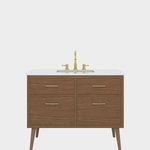
- View all photos
- Dining Room
- Breakfast Nook
- Family Room
- Bed & Bath
- Powder Room
- Storage & Closet
- Outdoor Kitchen
- Bar & Wine
- Wine Cellar
- Home Office
- Popular Design Ideas
- Kitchen Backsplash
- Deck Railing
- Privacy Fence
- Small Closet
- Stories and Guides
- Popular Stories
- Renovation Cost Guides
- Fence Installation Cost Guide
- Window Installation Cost Guide
- Discussions
- Design Dilemmas
- Before & After
- Houzz Research
- View all pros
- View all services
- View all products
- View all sales
- Living Room Chairs
- Dining Room Furniture
- Coffee Tables
- Home Office Furniture
- Join as a Pro
- Interior Design Software
- Project Management
- Custom Website
- Lead Generation
- Invoicing & Billing
- Landscape Contractor Software
- General Contractor Software
- Remodeler Software
- Builder Software
- Roofer Software
- Architect Software
- Takeoff Software
- Lumber & Framing Takeoffs
- Steel Takeoffs
- Concrete Takeoffs
- Drywall Takeoffs
- Insulation Takeoffs
- Stories & Guides
- LATEST FROM HOUZZ
- HOUZZ DISCUSSIONS
- SHOP KITCHEN & DINING
- Kitchen & Dining Furniture
- Sinks & Faucets
- Kitchen Cabinets & Storage
- Knobs & Pulls
- Kitchen Knives
- KITCHEN PHOTOS
- FIND KITCHEN PROS
- Bath Accessories
- Bath Linens
- BATH PHOTOS
- FIND BATH PROS
- SHOP BEDROOM
- Beds & Headboards
- Bedroom Decor
- Closet Storage
- Bedroom Vanities
- BEDROOM PHOTOS
- Kids' Room
- FIND DESIGN PROS
- SHOP LIVING
- Fireplaces & Accessories
- LIVING PHOTOS
- SHOP OUTDOOR
- Pool & Spa
- Backyard Play
- OUTDOOR PHOTOS
- FIND LANDSCAPING PROS
- SHOP LIGHTING
- Bathroom & Vanity
- Flush Mounts
- Kitchen & Cabinet
- Outdoor Wall Lights
- Outdoor Hanging Lights
- Kids' Lighting
- Decorative Accents
- Artificial Flowers & Plants
- Decorative Objects
- Screens & Room Dividers
- Wall Shelves
- About Houzz
- Houzz Credit Cards
- Privacy & Notice
- Cookie Policy
- Your Privacy Choices
- Mobile Apps
- Copyright & Trademark
- For Professionals
- Houzz vs. Houzz Pro
- Houzz Pro vs. Ivy
- Houzz Pro Advertising Reviews
- Houzz Pro 3D Floor Planner Reviews
- Trade Program
- Buttons & Badges
- Your Orders
- Shipping & Delivery
- Return Policy
- Houzz Canada
- Review Professionals
- Suggested Professionals
- Accessibility
- Houzz Support
- COUNTRY COUNTRY
New & Custom Home Builders in Elektrostal'
Location (1).
- Use My Current Location
Popular Locations
- Albuquerque
- Cedar Rapids
- Grand Rapids
- Indianapolis
- Jacksonville
- Kansas City
- Little Rock
- Los Angeles
- Minneapolis
- New Orleans
- Oklahoma City
- Orange County
- Philadelphia
- Portland Maine
- Salt Lake City
- San Francisco
- San Luis Obispo
- Santa Barbara
- Washington D.C.
- Elektrostal', Moscow Oblast, Russia
Featured Reviews for New & Custom Home Builders in Elektrostal'
- Reach out to the pro(s) you want, then share your vision to get the ball rolling.
- Request and compare quotes, then hire the Home Builder that perfectly fits your project and budget limits.
Before choosing a Builder for your residential home project in Elektrostal', there are a few important steps to take:
- Define your project: Outline your desired home type, features, and layout. Provide specific details and preferences to help the builder understand your vision.
- Establish a budget: Develop a comprehensive budget, including construction expenses and material costs. Communicate your budgetary constraints to the builder from the beginning.
- Timeline: Share your estimated timeline or desired completion date.
- Site conditions: Inform the builder about any unique site conditions or challenges.
- Local regulations: Make the builder aware of any building regulations or permits required.
- Custom Homes
- Floor Plans
- House Framing
- Land Surveying
- Site Planning
What do new home building contractors do?
Questions to ask a prospective custom home builder in elektrostal', moscow oblast, russia:, business services, connect with us.
Great choice! Your favorites are temporarily saved for this session. Sign in to save them permanently, access them on any device, and receive relevant alerts.
- Sailboat Guide
Eastward HO 24
Eastward HO 24 is a 23 ′ 7 ″ / 7.2 m monohull sailboat designed by Walter McInnis and built by C. E. Ryder starting in 1975.

Rig and Sails
Auxilary power, accomodations, calculations.
The theoretical maximum speed that a displacement hull can move efficiently through the water is determined by it's waterline length and displacement. It may be unable to reach this speed if the boat is underpowered or heavily loaded, though it may exceed this speed given enough power. Read more.
Classic hull speed formula:
Hull Speed = 1.34 x √LWL
Max Speed/Length ratio = 8.26 ÷ Displacement/Length ratio .311 Hull Speed = Max Speed/Length ratio x √LWL
Sail Area / Displacement Ratio
A measure of the power of the sails relative to the weight of the boat. The higher the number, the higher the performance, but the harder the boat will be to handle. This ratio is a "non-dimensional" value that facilitates comparisons between boats of different types and sizes. Read more.
SA/D = SA ÷ (D ÷ 64) 2/3
- SA : Sail area in square feet, derived by adding the mainsail area to 100% of the foretriangle area (the lateral area above the deck between the mast and the forestay).
- D : Displacement in pounds.
Ballast / Displacement Ratio
A measure of the stability of a boat's hull that suggests how well a monohull will stand up to its sails. The ballast displacement ratio indicates how much of the weight of a boat is placed for maximum stability against capsizing and is an indicator of stiffness and resistance to capsize.
Ballast / Displacement * 100
Displacement / Length Ratio
A measure of the weight of the boat relative to it's length at the waterline. The higher a boat’s D/L ratio, the more easily it will carry a load and the more comfortable its motion will be. The lower a boat's ratio is, the less power it takes to drive the boat to its nominal hull speed or beyond. Read more.
D/L = (D ÷ 2240) ÷ (0.01 x LWL)³
- D: Displacement of the boat in pounds.
- LWL: Waterline length in feet
Comfort Ratio
This ratio assess how quickly and abruptly a boat’s hull reacts to waves in a significant seaway, these being the elements of a boat’s motion most likely to cause seasickness. Read more.
Comfort ratio = D ÷ (.65 x (.7 LWL + .3 LOA) x Beam 1.33 )
- D: Displacement of the boat in pounds
- LOA: Length overall in feet
- Beam: Width of boat at the widest point in feet
Capsize Screening Formula
This formula attempts to indicate whether a given boat might be too wide and light to readily right itself after being overturned in extreme conditions. Read more.
CSV = Beam ÷ ³√(D / 64)
Originally designed for wood contruction. The hulls of the later, FG version were built by CE Ryder (USA) and finished by Portsmouth Yacht Co. Diesel power was available as an option.
Embed this page on your own website by copying and pasting this code.
- About Sailboat Guide
©2024 Sea Time Tech, LLC
This site is protected by reCAPTCHA and the Google Privacy Policy and Terms of Service apply.
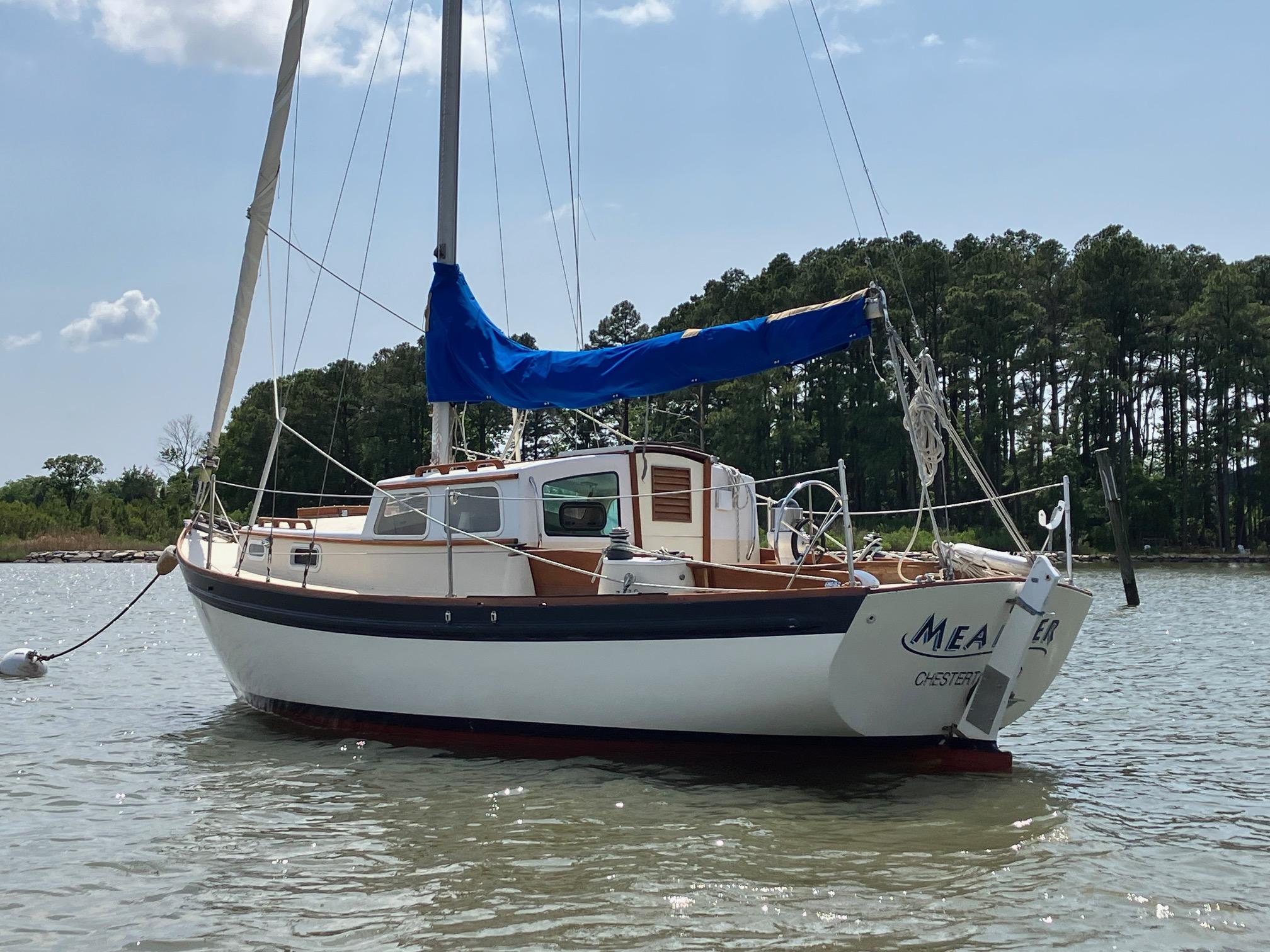
Eastward ho 24 preowned sailboats for sale by owner. Eastward ho 24 used sailboats for sale by owner.
Both salon settees turn into two twin beds so can sleep 4 adults. YEAR: 1977 MAKE: Portsmouth Yacht Co MODEL: Eastward Ho CLASS: Sloop, Pocket Cruiser LENGTH: 26' (24' with 2' boomkin) HULL MATERIAL: FIberglass reinforced plastic FUEL TYPE: Diesel. AIR CONDITIONING: Drop in Cruise Air. ALL PHOTOS ARE RECENT.
1978. 31'. 10'. 4.2'. Florida. $12,900. Description: Airyella is a classic New England style sloop - has incredible character, is very distinctive, and is a pleasure to sail. She is perfect for anyone looking for a boat that will sail, and anchor overnight with 1-5 people, comfortably in the bay and the Keys and beyond, at a fantastic price.
1976. 24'. 9'. 4'. Connecticut. $12,000. Description: Built by CE Ryder (USA) and finished by Portsmouth Yacht Co., Rhode Island, USA, this stout pocket cruiser is a solid full-keel sailing vessel. Omoo has had a lot of updates including new diesel engine (Kubota Beta marine), rebuilt gearbox (2021), new standing and running rigging (2020), new ...
Broker: Designed by Eldredge-McInnis and built by Portsmouth Yacht Co., the Eastward Ho is a compact yet roomy sloop designed for family cruising in comfort. She is a proven design which combines traditional elegance with practical accommodations. Nothing has been overlooked to satisfy both the sailor and the cruising enthusiast.
A boat with a BN of 1.6 or greater is a boat that will be reefed often in offshore cruising. Derek Harvey, "Multihulls for Cruising and Racing", International Marine, Camden, Maine, 1991, states that a BN of 1 is generally accepted as the dividing line between so-called slow and fast multihulls.
Model McInnis. Category Sailboats. Length 31'. Posted Over 1 Month. 1985 #1 Hull McInnis,31 ft., 4.5ft. draft, McInnis Cutter rig Eastward Ho series. 28hp Yanmar diesel, All hardwood Interior, Complete custom finished, In bristol condition. Completely blue water equipt.Leave Message at 772/283-0853. $40000.
Go to Sailing Texas classifieds for current sailboats for sale . Eastward HO 24, 1977 LOA 25'5" LWL 20' Beam 8'8" Draft 3'10" SA 283 sq ft Ballast 3,600 Displacement 7,000 Keel Full Designed by Thomas F. Eldredge/Walter J. Mcinnis and built by the Portsmouth Boat Company (UK).
Used 1978 Eastward Ho 31 for sale is located in Bienville National Forest (Mississippi, United States of America). This vessel was designed and built by the Eastward shipyard in 1978. Key features 1978 Eastward Ho 31: length 9.45 meters. engine: fuel type - diesel. 1978 Eastward Ho 31 refers to classes: sailing yachts , sailboats and sailing ...
Seller's Description. Portsmouth Eastward Ho 24, 1978 sailboat for sale I am selling my 1978 Portsmouth Eastward Ho 24 for $12,500. The boat is in Alamitos Bay (Seal Beach, CA / Long Beach, CA) where the buyer may assume the slip at $320 a month. Very nice location, across the street from the new 2nd and PCH outdoor mall.
Go to Sailing Texas classifieds for current sailboats for sale Eastward Ho, 24 ft., 1975 No. 55, 1975. Highly regarded Eldridge/McGinnis cruising design- Full keel, 4 ft. draft. ... The lower a boat's ratio is, the less power it takes to drive the boat to its nominal hull speed or beyond. Read more. Formula. D/L = (D ÷ 2240) ÷ (0.01 x LWL)³ ...
Seller's Description. 1980 Portsmouth Yacht Co Eastward Ho 31. She is a classic designed in 1959, built in 1980. Similar to the Sea Sprite 33 that Robin Graham sailed around the world. Custom interior Volvo Penta MD2B 25hp Nice thick teak toe rail Electric Windlass Auto Helm Updated hardware above deck Updated rigging Bimini, dodger frames ...
Search eastward ho 24 prices - more than 1 listings - Built by CE Ryder (USA) and finished by Portsmouth Yacht Co., Rhode Island, USA, this stout pocket cruiser is a solid full-keel sailing vessel. ... 1976 CE Ryder Eastward Ho 24 sailboat for sale in Connecticut. Ce Ryder eastward ho 24 . Built by CE Ryder (USA) and finished by Portsmouth ...
Boat Trader currently has 3 Eastward boats for sale, including 1 new vessels and 2 used boats listed by both private sellers and professional yacht brokers and boat dealerships mainly in United States. The oldest model listed is a contemporary boat built in 2018 and the newest model year of 2021.
Join Date: Aug 2018. Posts: 3. Eastward Ho 31 Sailboat. Cutter Rig. Eldredge McInnis design, built in RI by C. Ryder Yachts. Roller furling jib. Jib boom & roller for twin furlers. Re-built Volvo Penta 30hp with spare engine & transmission. Bimini & dodger.
35.5' Endeavour E35 Presently on the hard for winter storage at Morgans Marina, New Jersey Asking $35,000
2015 Malibu Wakesetter 22 VLX. Battle Creek, MI. $40,000. 2008 Hydra-Sports 2200 CC. Sarasota, FL. $26,500. 2 new and used Portsmouth Eastward Ho boats for sale at smartmarineguide.com.
First S-400 bltn, Elektrostal, Moscow.
Get directions to Yuzhny prospekt, 6к1 and view details like the building's postal code, description, photos, and reviews on each business in the building
Search 1,121 Elektrostal' new & custom home builders to find the best custom home builder for your project. See the top reviewed local custom home builders in Elektrostal', Moscow Oblast, Russia on Houzz.
Find company research, competitor information, contact details & financial data for STELS, OOO of Elektrostal, Moscow region. Get the latest business insights from Dun & Bradstreet.
Advertisement. Eastward HO 24 is a 23′ 7″ / 7.2 m monohull sailboat designed by Walter McInnis and built by C. E. Ryder starting in 1975.

IMAGES
VIDEO
COMMENTS
The Wayfarer is probably one of the best known dinghies for cruising inland or on the coast and can also be used as a training boat, or raced with a spinnaker. The GP14 can likewise be used for cruising or racing (the class held its 2016 world championship in Barbados) and has a vibrant calendar covering both aspects of the sport.
Cons of Cruising in an Wanderer Sailing Dinghy. While the Wanderer is a great boat for sailing, a potential downside to this dinghy is the need to have multiple crew onboard. While sailing a Wanderer can undoubtedly be done solo, for most sailors, having some extra hands on deck will make sailing the 2-3 person Wanderer dinghy much more pleasant.
If a cruising boat is the magic carpet to faraway travels, dinghies are the critical last step to engaging in those places and realizing their promise. ... "Maybe she's not the best rowing dinghy, or the best sailing dinghy, but she is multi-purpose and functional." Exceptionally multi-purpose, considering a kit can be added to provide ...
The 18-foot inflatable Happy Cat Hurricane Carbon edition proved to be the biggest surprise of the 2022 Boat of the Year tests. Even with two full-sized adults, the boat was lively and earned high ...
Generally speaking, fully inflatable dinghies that measure around 10-feet in length support a 5-8 horsepower outboard, which is sufficient for the basics. For a more capable inflatable, look for a 10-25 horsepower outboard. Just be cautious, as too much power can flip a lightweight dinghy.
Increasing numbers of boat owners are seeing the merits of dinghy cruising and day sailing, if the continued growth in membership of the Dinghy Cruising Association (DCA) is anything to go by.. The same is happening in Normandy and Brittany with the beautifully designed François Vivier sail and oar boats leading the charge.. In fact the sail and oar movement is growing all across Europe and ...
Dinghy boats for sale on YachtWorld are available for a swath of prices from $5,653 on the relatively moderate end all the way up to $52,495 for the rarest of yachts. Dinghy By Condition. Manufacturer of dinghy. Find Sail Dinghy boats for sale in your area & across the world on YachtWorld. Offering the best selection of boats to choose from.
The larger the tube, the greater the boat's reserve buoyancy and the better its handling and carrying capacity is. The more air chambers it has, the safer it will be should one chamber spring a leak or get punctured. A cruising sailors dinghy should have a minimum of three air chambers, but four is even better.
420. The 420 is a small, two-person racing dinghy that's ideal for beginners. It's also a great boat for experienced sailors looking to get into competitive sailing. With its fast hull design and lightweight rig, the 420 can travel faster than most other dinghies. The 420 is simple enough that you'll be able to learn how to sail it in ...
In the end, a cruiser-racer dinghy is right smack dab between a racing and cruising dinghy. Classic Dinghies. If you're looking for a classic experience on a sailing dinghy, then why not try out a… classic! Classic dinghies can be found more often than you might think and can be fun to learn on when just starting out.
Tiwal 3R 2023 Best Dinghy. Stated purpose: Recreational sailing, one-design and rally racing. Crew: One to two. Praise for: Performance, comfort, portability. Est. price as sailed: $8,900. The ...
Release the dinghy and use a paddle or oar to push away if needed. Paddle or row to navigate away from obstacles and into open water. Once a safe distance from shore, raise the sails if applicable, following proper procedures. Adjust the sails and tiller as necessary to control the direction and speed of the dinghy.
Slipping into "Secret Harbour" on "Wild Cat Island" otherwise known as Peel Island on Coniston Water. DCA member no 4 Frank Dye famously sailed from Scotland to Norway and Iceland in his Wayfarer dinghy - and along the east coast of North America. He described the latter voyage in his book Sailing to the Edge of Fear. But there are the hundreds ...
DCA Editor's Preface: The ENTERPRISE was designed by Jack Holt in 1956 for the now extinct UK newspaper The News Chronicle.It was followed by the MIRROR dinghy, also designed by Jack Holt and this time backed by The Daily Mirror. They were both conceived as cheap and capable sailboats for "everyman" to build or buy—but that's where the similarity ends.
Dinghy Storage on a Sailboat. Tenders are an essential part of the cruising life, but can be cumbersome to carry. Here are five basic options. By Dan Spurr. Updated: August 28, 2020. As proved in the 2020 Boat of the Year competition, drop-down transoms and dinghy garages are now "a thing.". The Bavaria C57 includes space for life-raft stowage.
Dinghy Cruising- Part II. DINGHIES. 6 Apr, 2023. By Duncan Blair. Dinghy Cruising Part I was published in SWS two weeks ago. In it, I outlined the factors that make dinghy cruising interesting, fun, relatively inexpensive and meaningful, realising that messing about in small boats never really needs to be justified.
The Laser is the best choice for a single-hander sailboat dinghy. This boat is ideal for cruising or competitive racing, and they hold their resale value. Laser. You get options for three rig sizes, the 4.7, Standard, and the Radial model. These boats feature fiberglass design and low hulls for easy navigation through shallow waters. The RS Vision
A boat with a BN of 1.6 or greater is a boat that will be reefed often in offshore cruising. Derek Harvey, "Multihulls for Cruising and Racing", International Marine, Camden, Maine, 1991, states that a BN of 1 is generally accepted as the dividing line between so-called slow and fast multihulls. BN = SA^0.5/(Disp. in pounds)^.333
This is episode 2 of a series on the basics of dingy cruising.The videos I create here are possible because of the work I do in my day job as Wood Underfoot....
40' MTI. ( (SOLD)) Luxury 2009 40 MTI with the Tilt Trailer.$399K This boat is a one-owner powerboat used only in freshwater. Powered with two Mercury 700s stage 3 motors with original 150 HR this boat is nice. "Don't miss out" For viewing please make an appointment with us @ Rockstarboats.com (928)208-8460..... These powerboats use the following propulsion options: outboard engine.
Between her easy-sailing rig that cuts down on tacking drama and her ..... Electric boat maker Candela is approaching cruising speed with $25 million in new funding and the first commercial deployment of its new P-12 ferry in New Zealand. The company has global ambitions ..... Hanse 458. The new Hanse 458 is the yacht for all of those who set ...
Transatlantic sailing record. Banque Populaire V, current record holder. Since the five-week voyage of Christopher Columbus in 1492, crossing the Atlantic Ocean, quickly and safely, between Europe and the Americas has always been an important issue. Today, the route has become a classic one among skippers.... Comanche, the 100ft maxi racing yacht built to break records for Jim Clark and Kristy ...
Seller's Description. Portsmouth Eastward Ho 24, 1978 sailboat for sale I am selling my 1978 Portsmouth Eastward Ho 24 for $12,500. The boat is in Alamitos Bay (Seal Beach, CA / Long Beach, CA) where the buyer may assume the slip at $320 a month. Very nice location, across the street from the new 2nd and PCH outdoor mall....